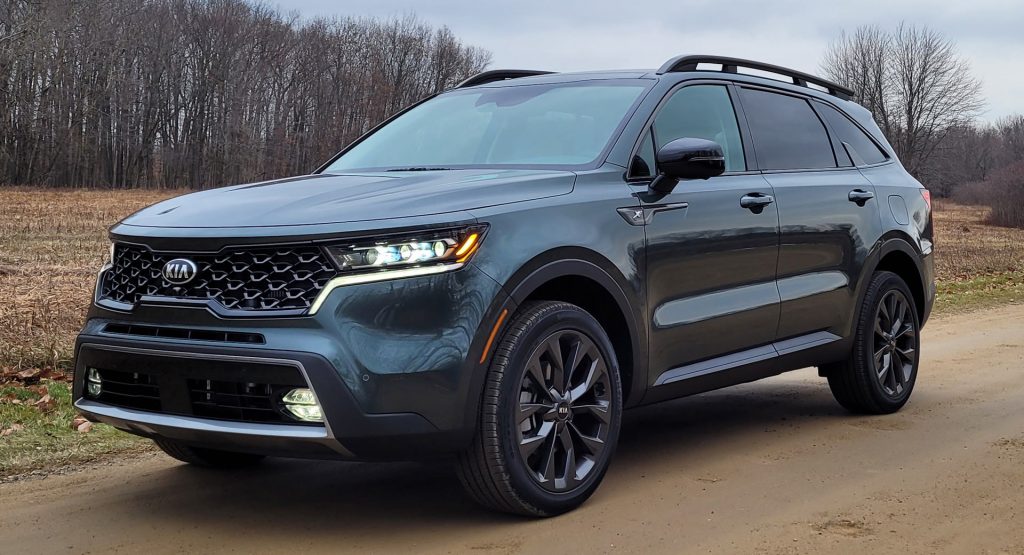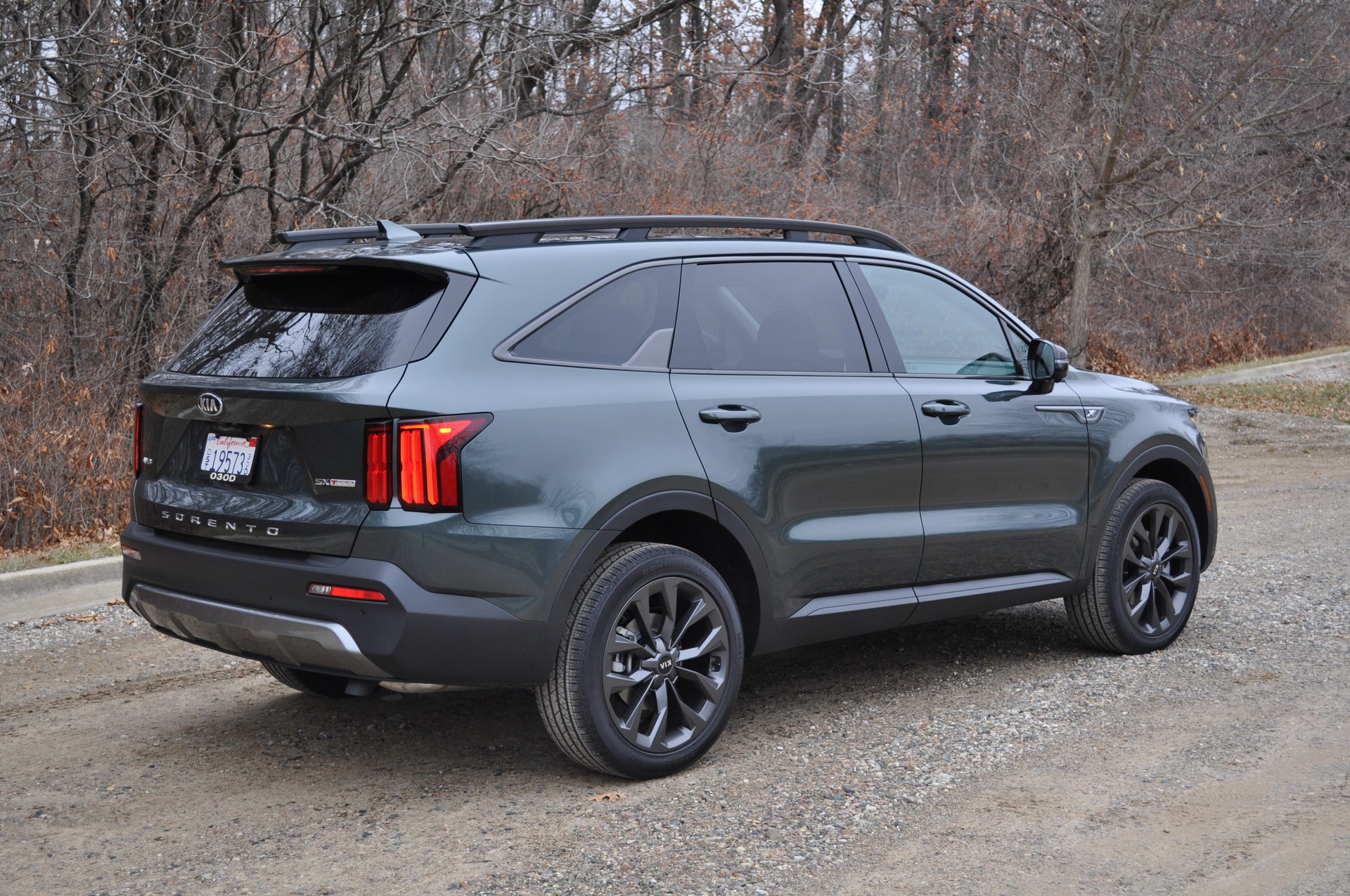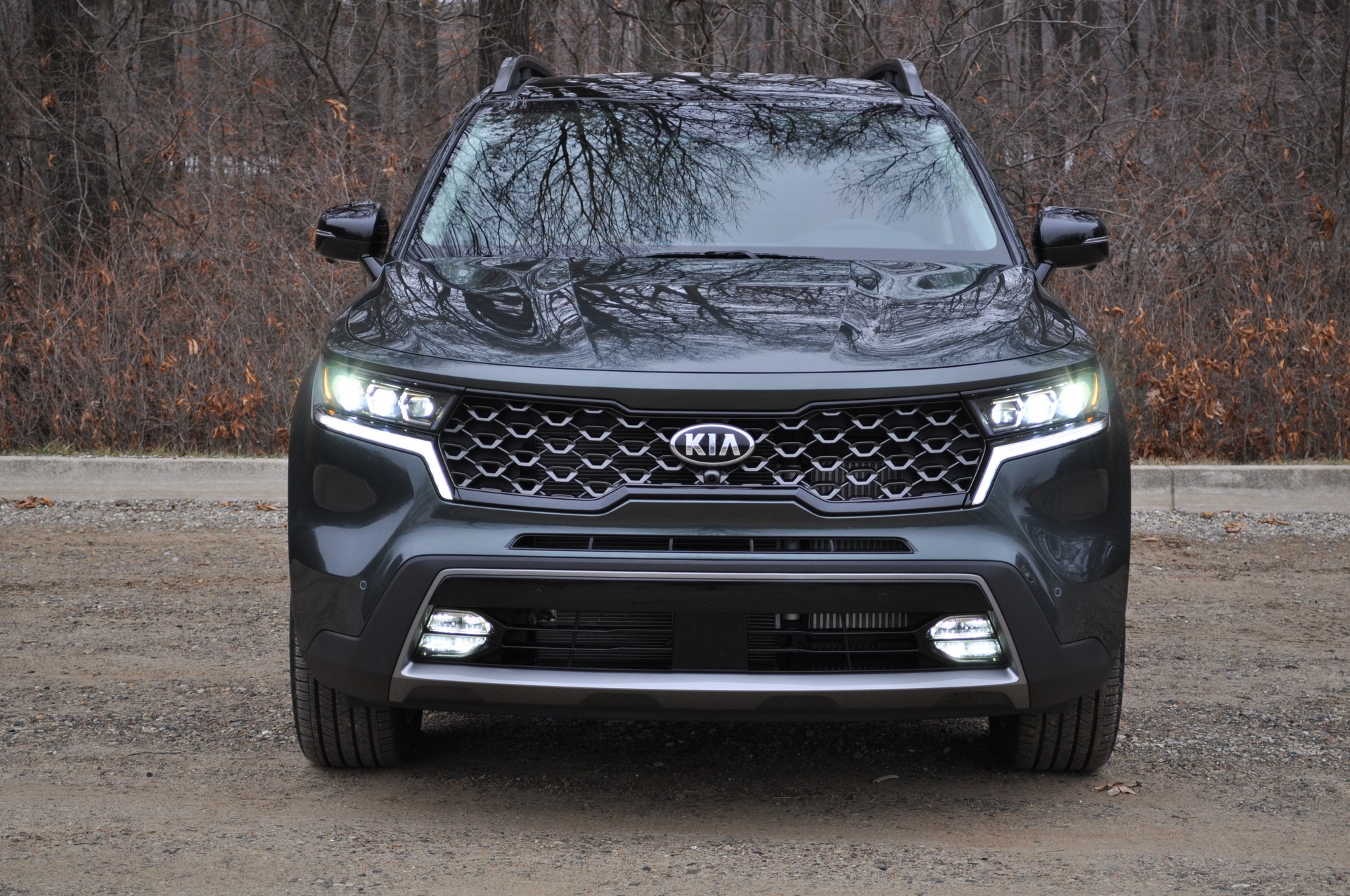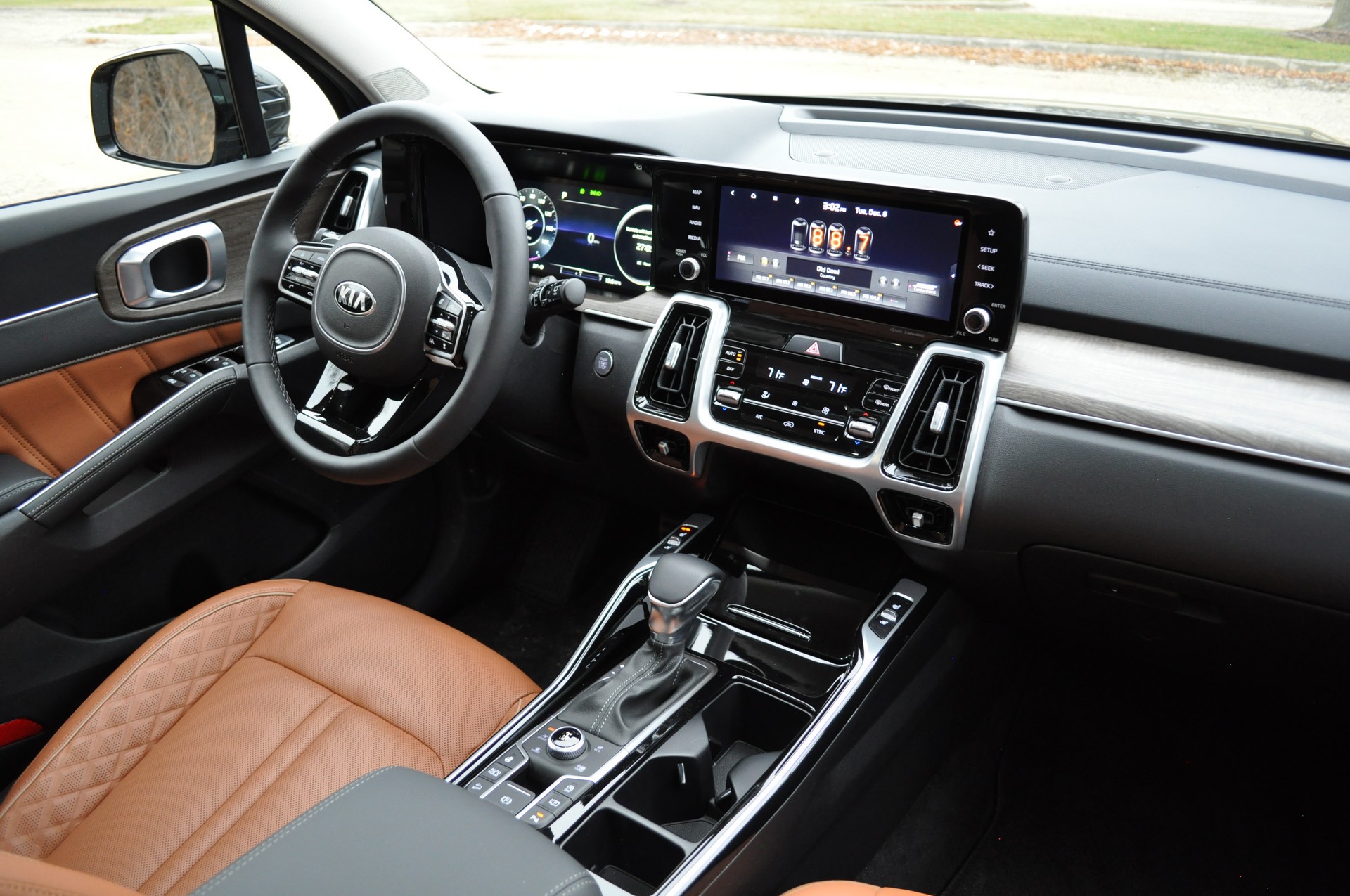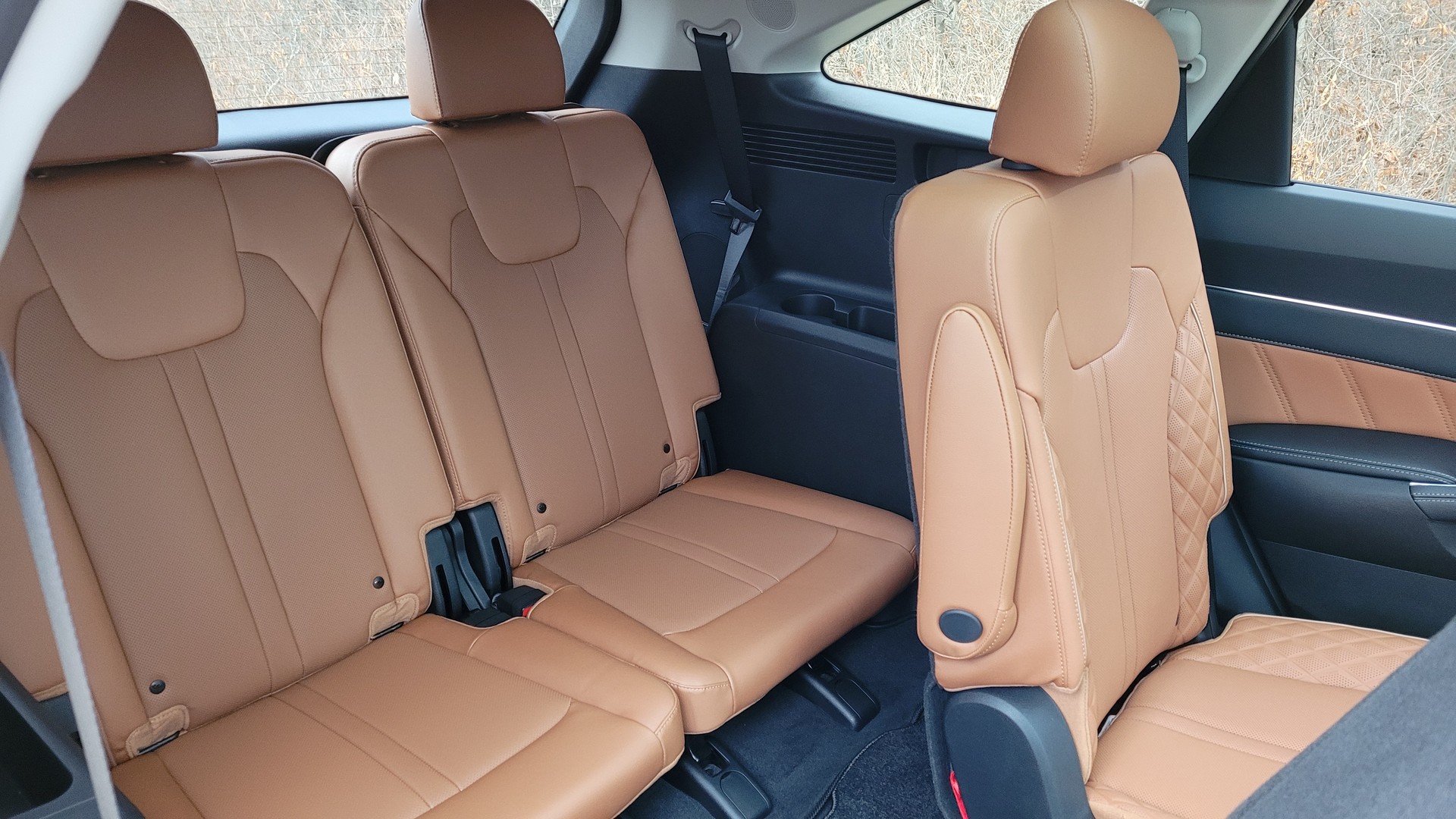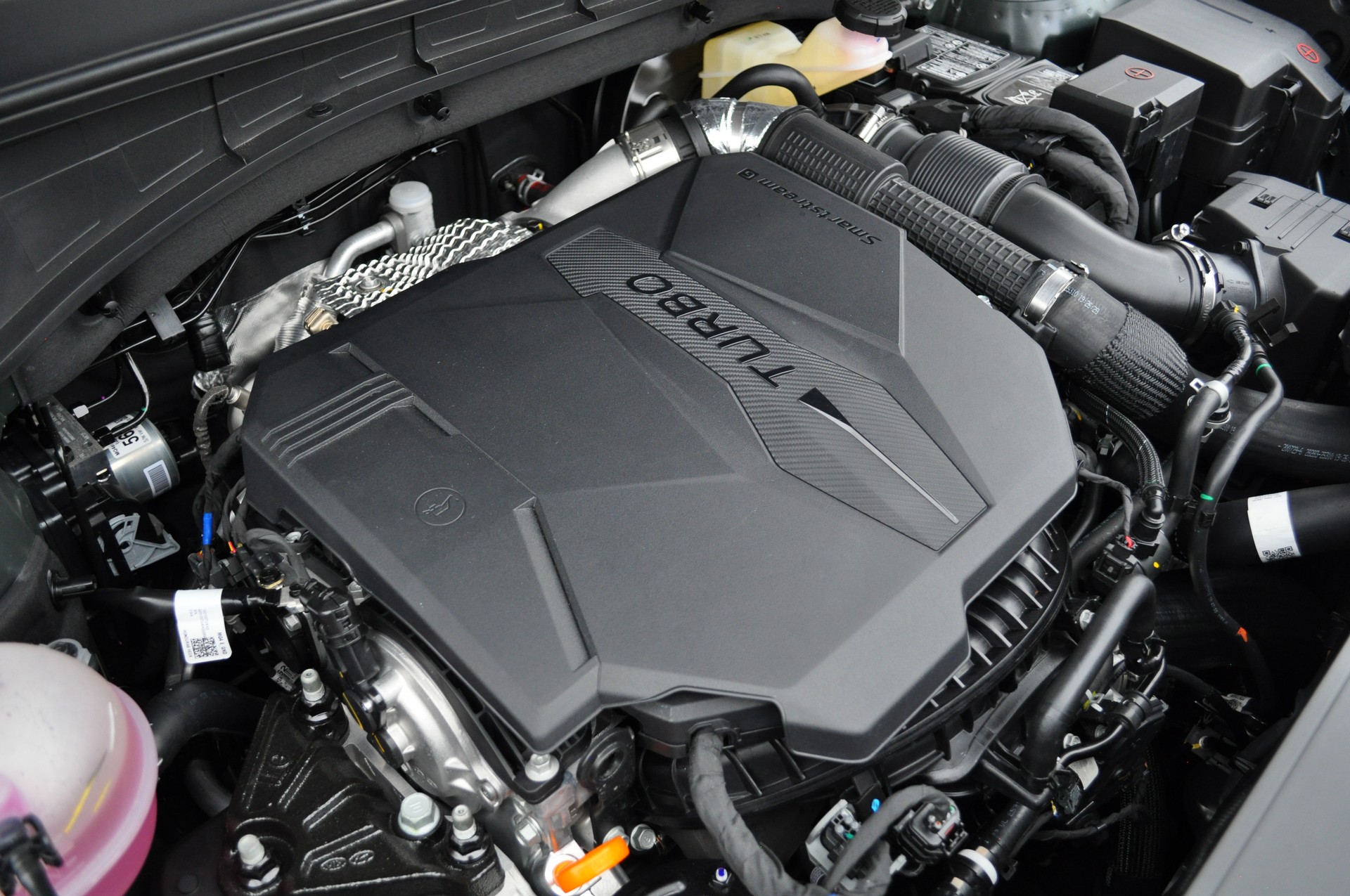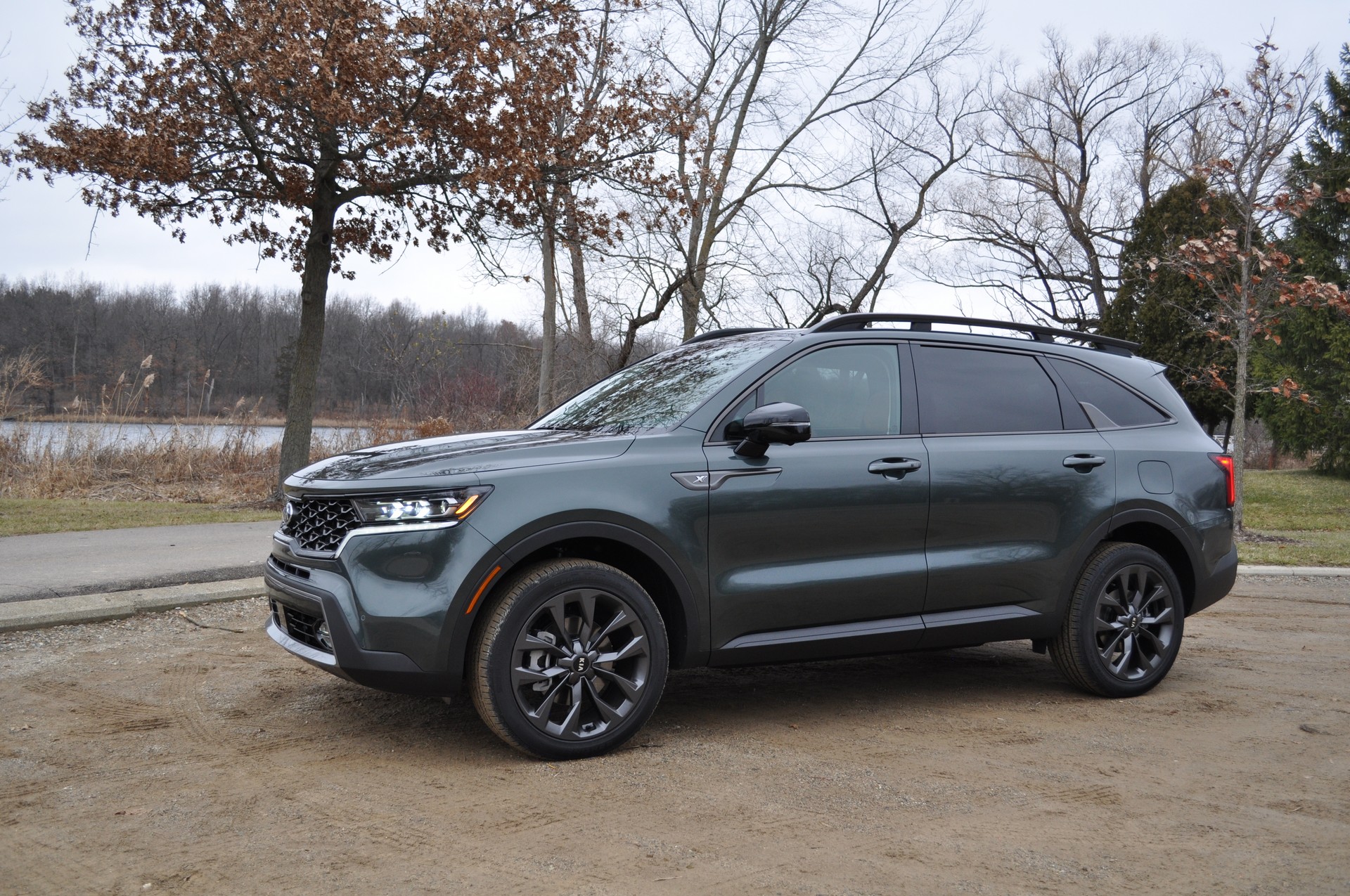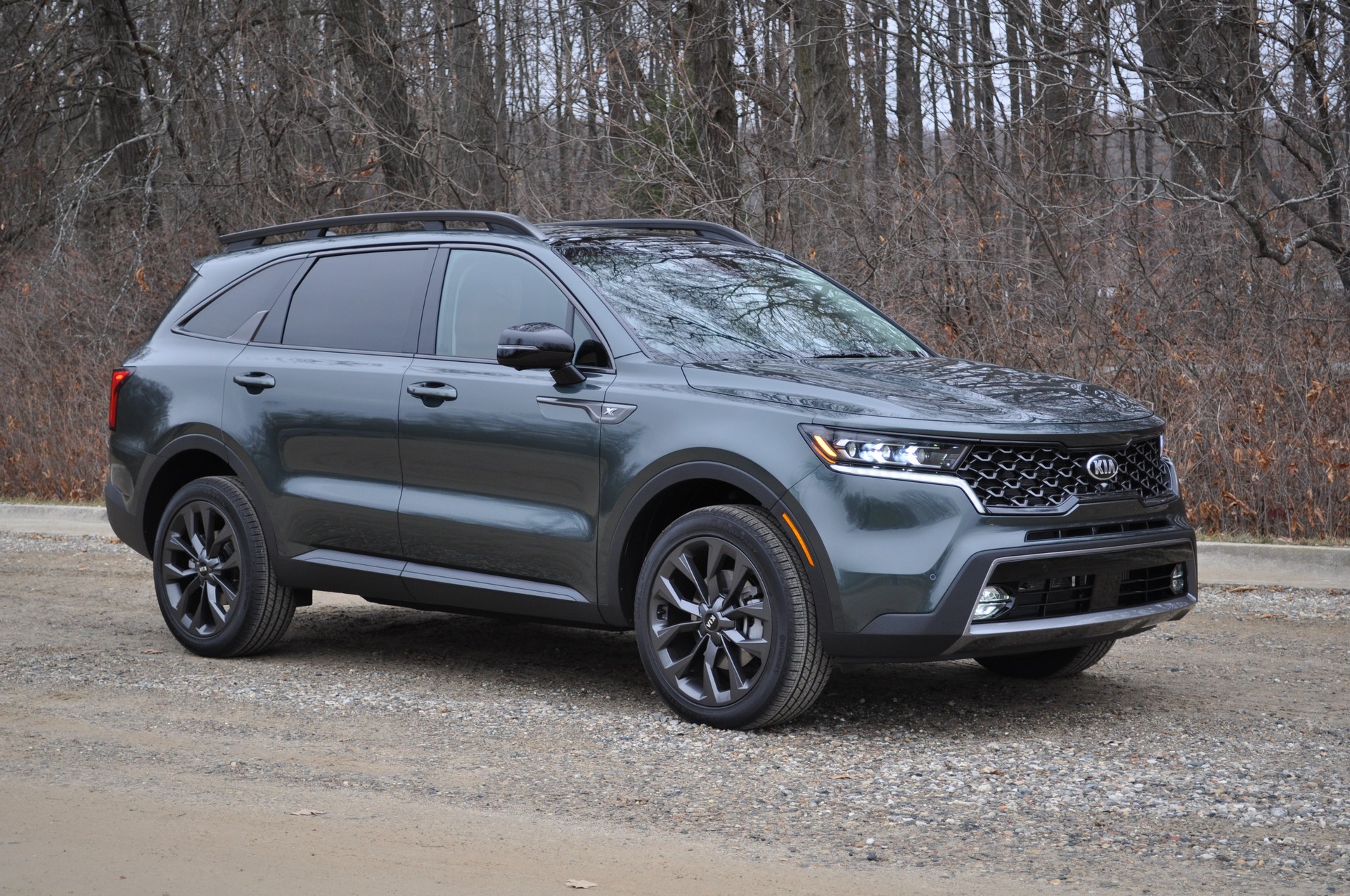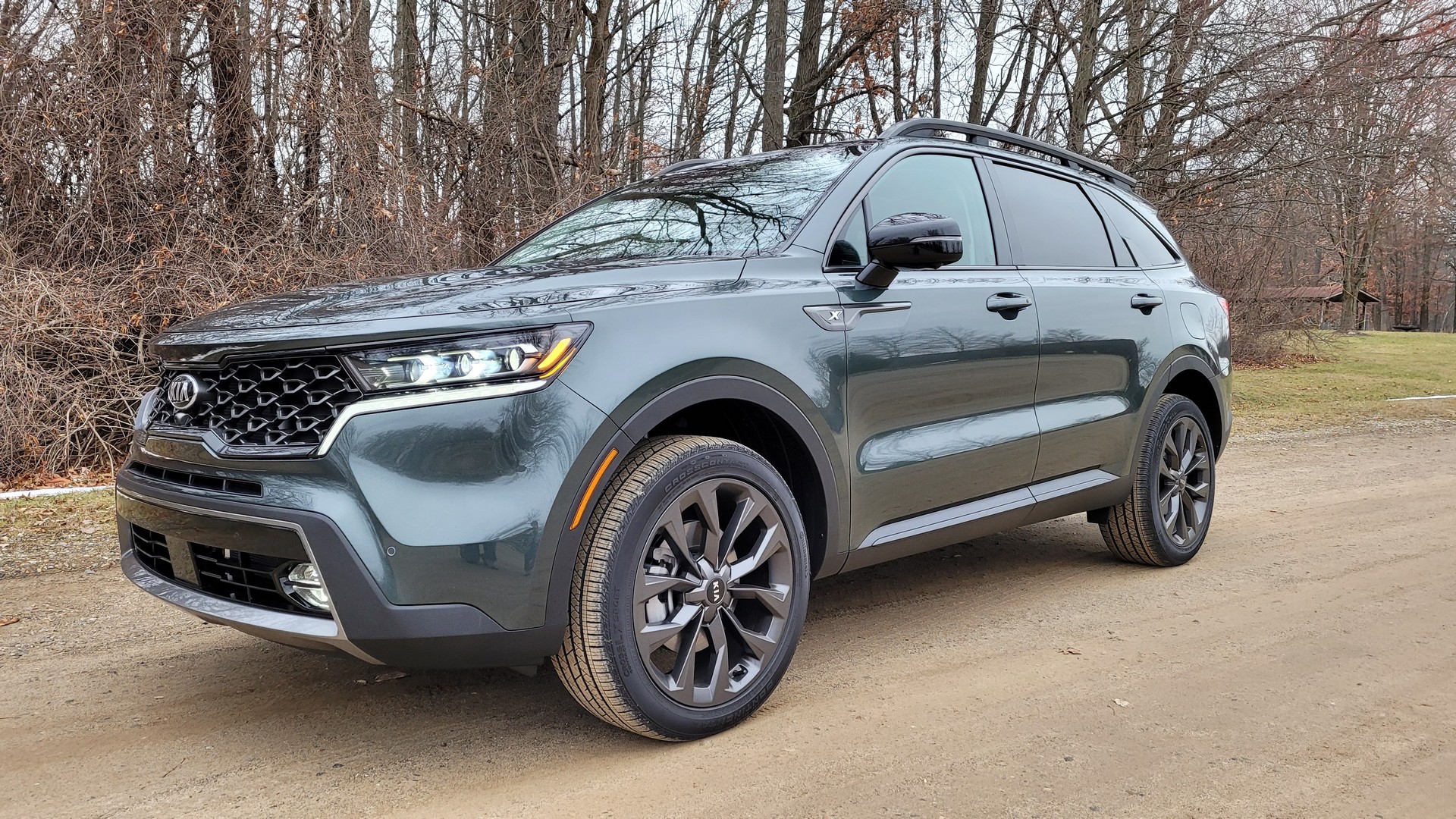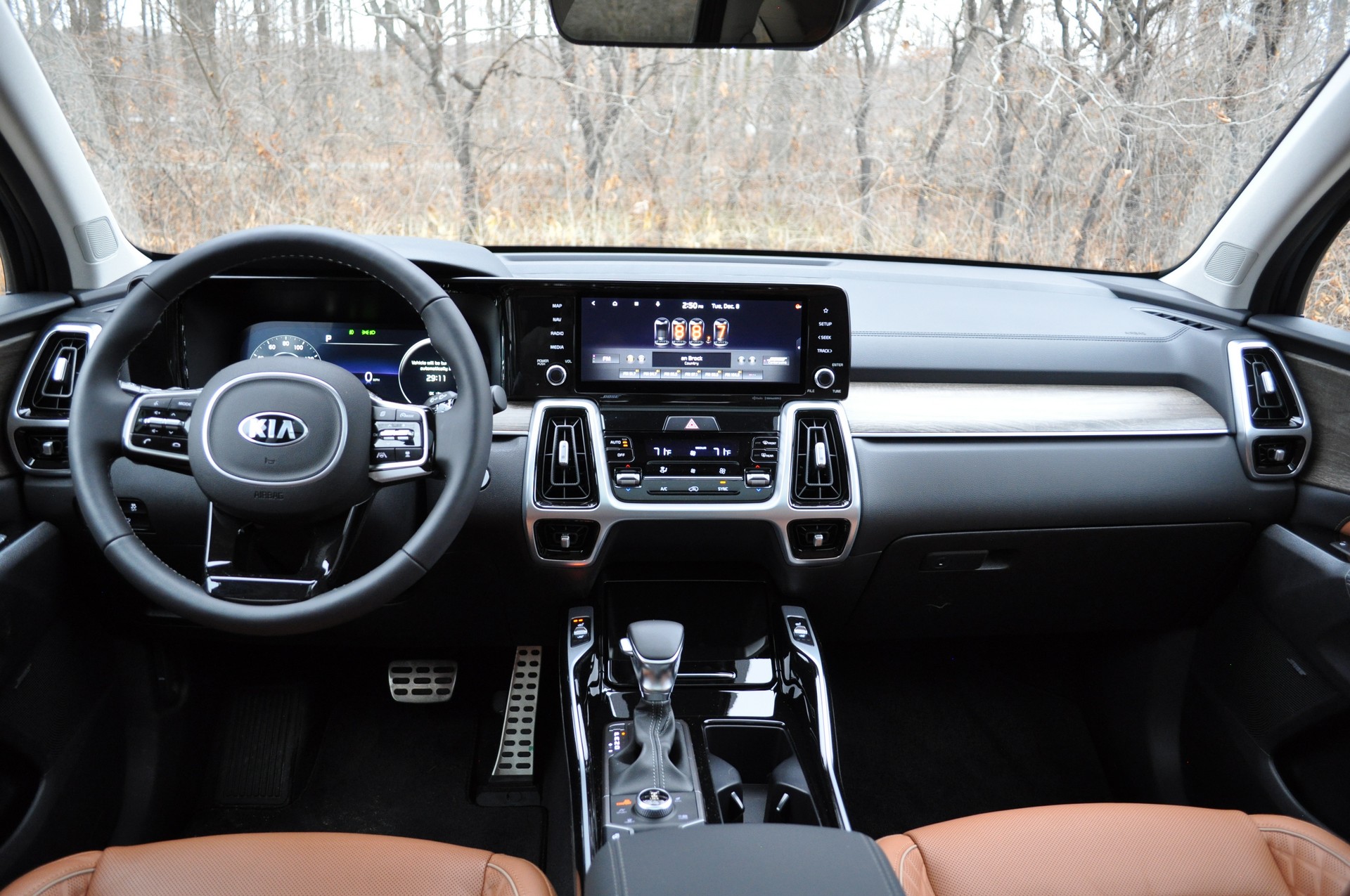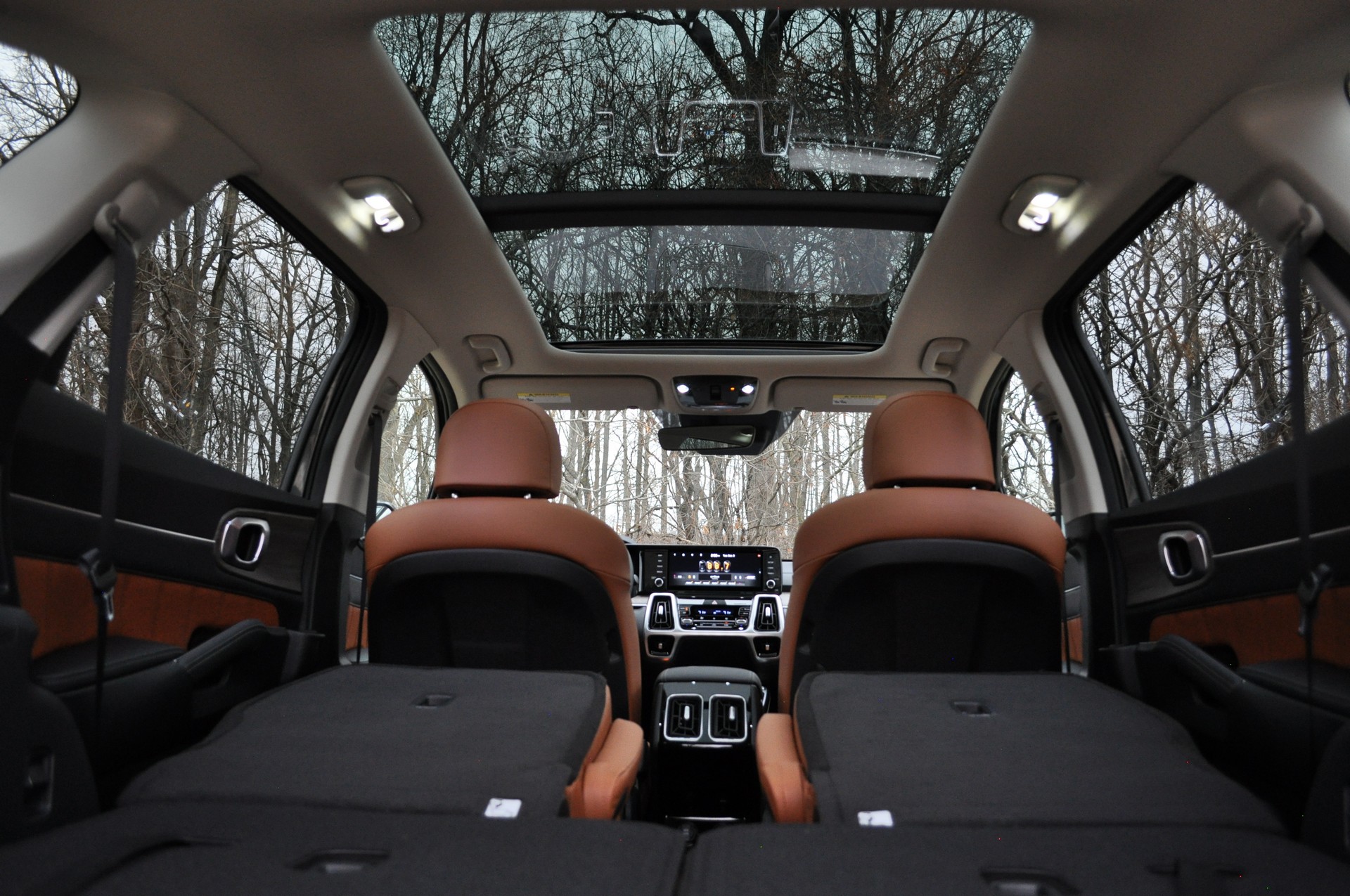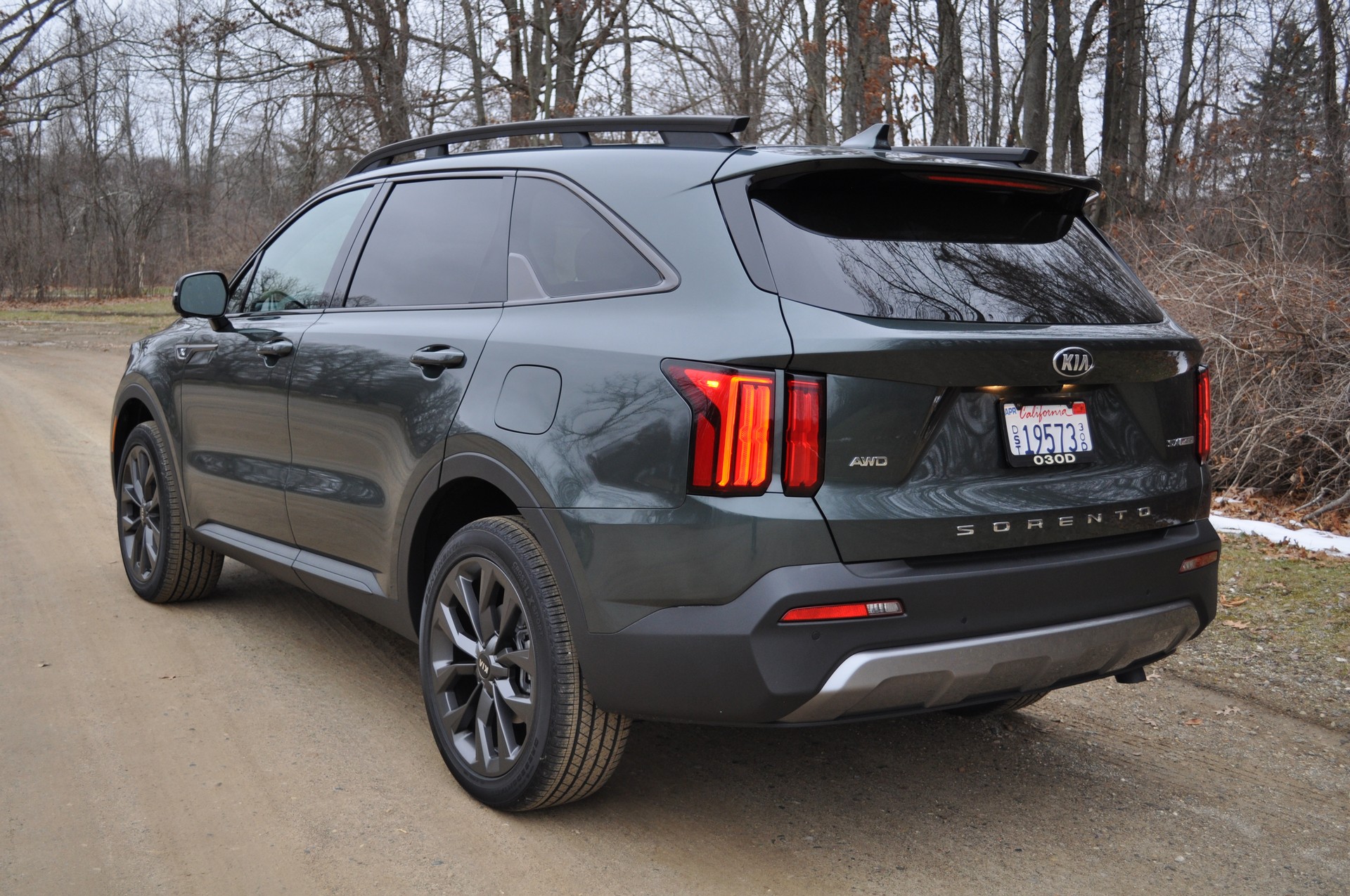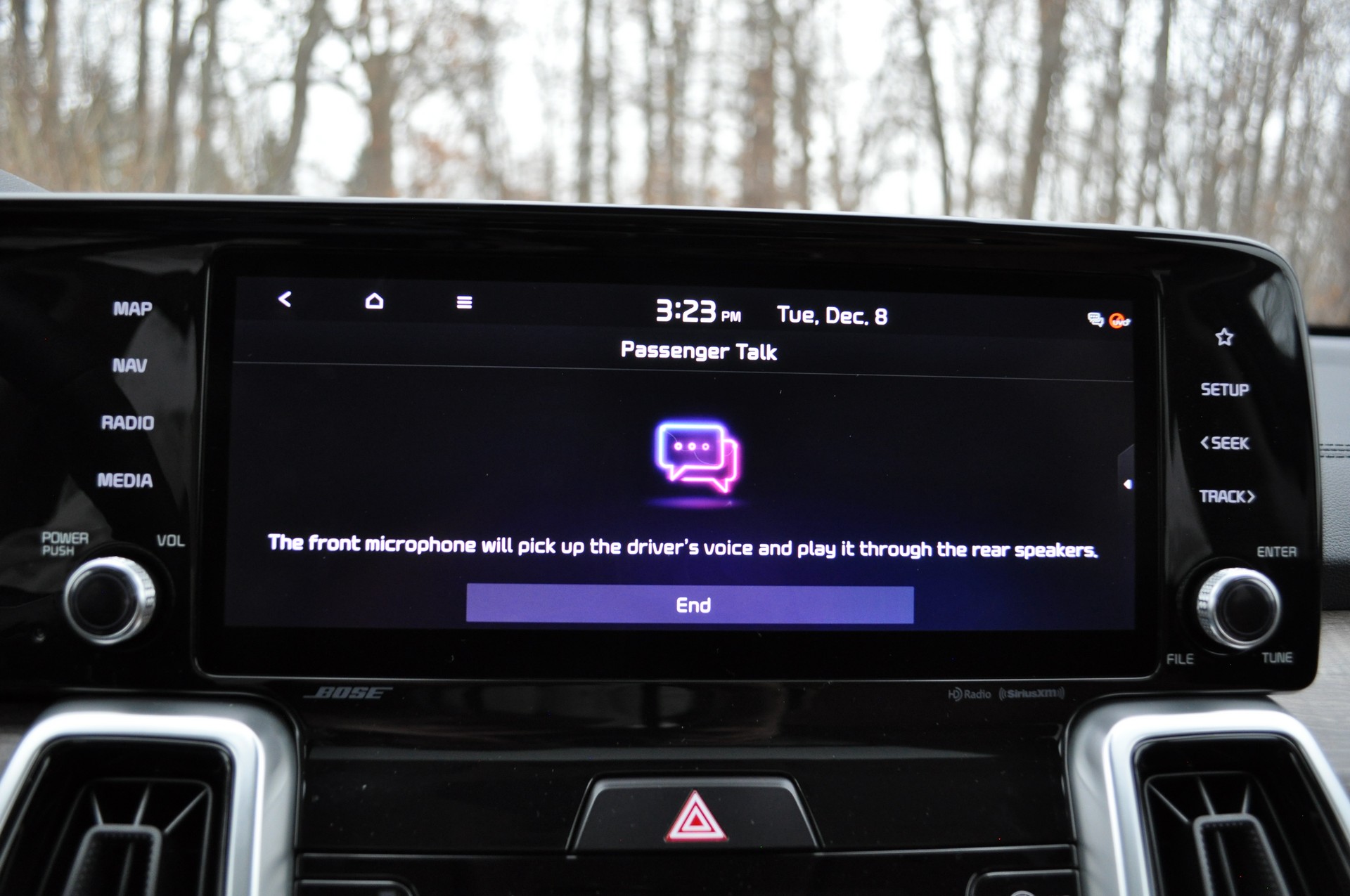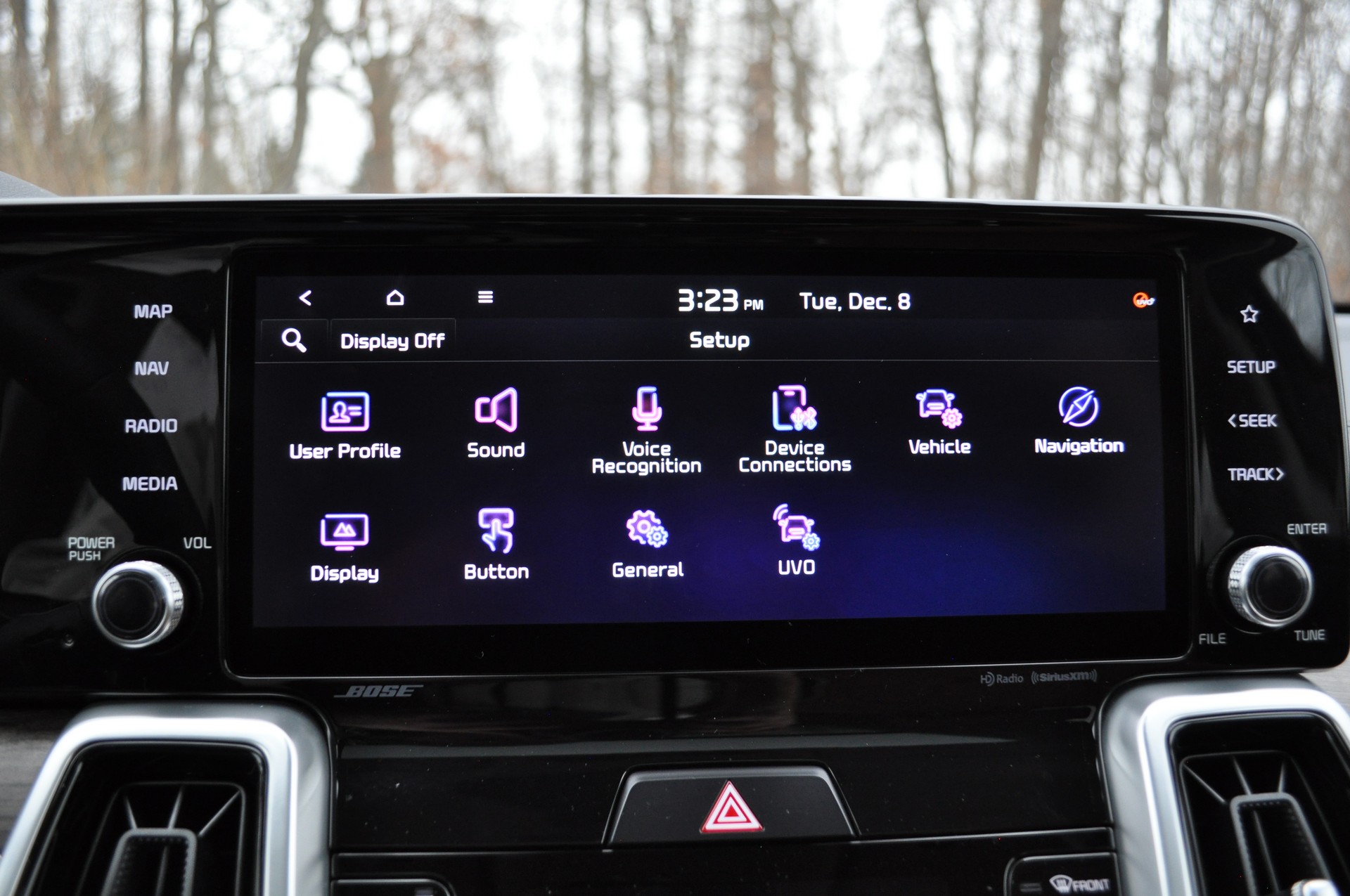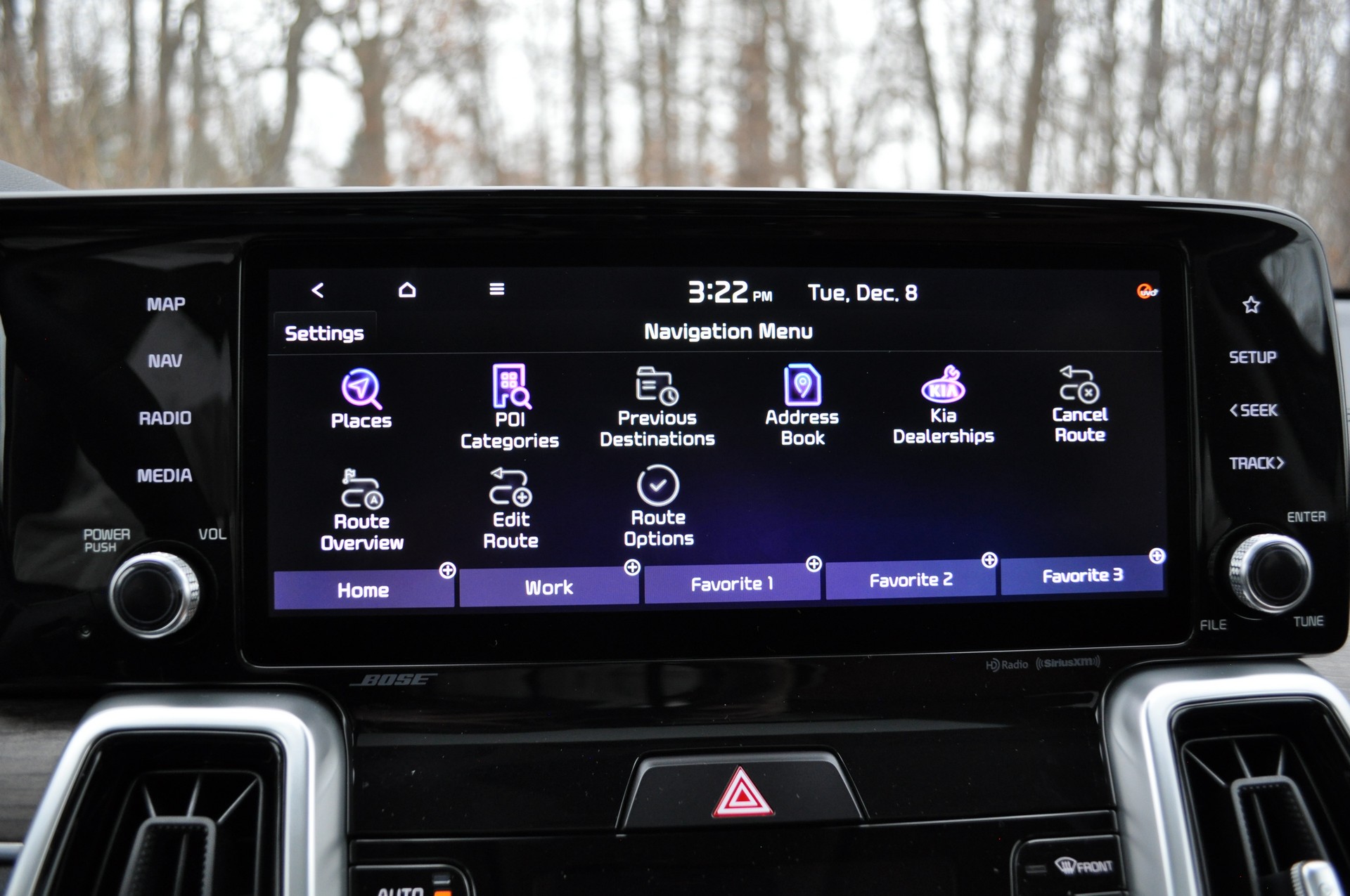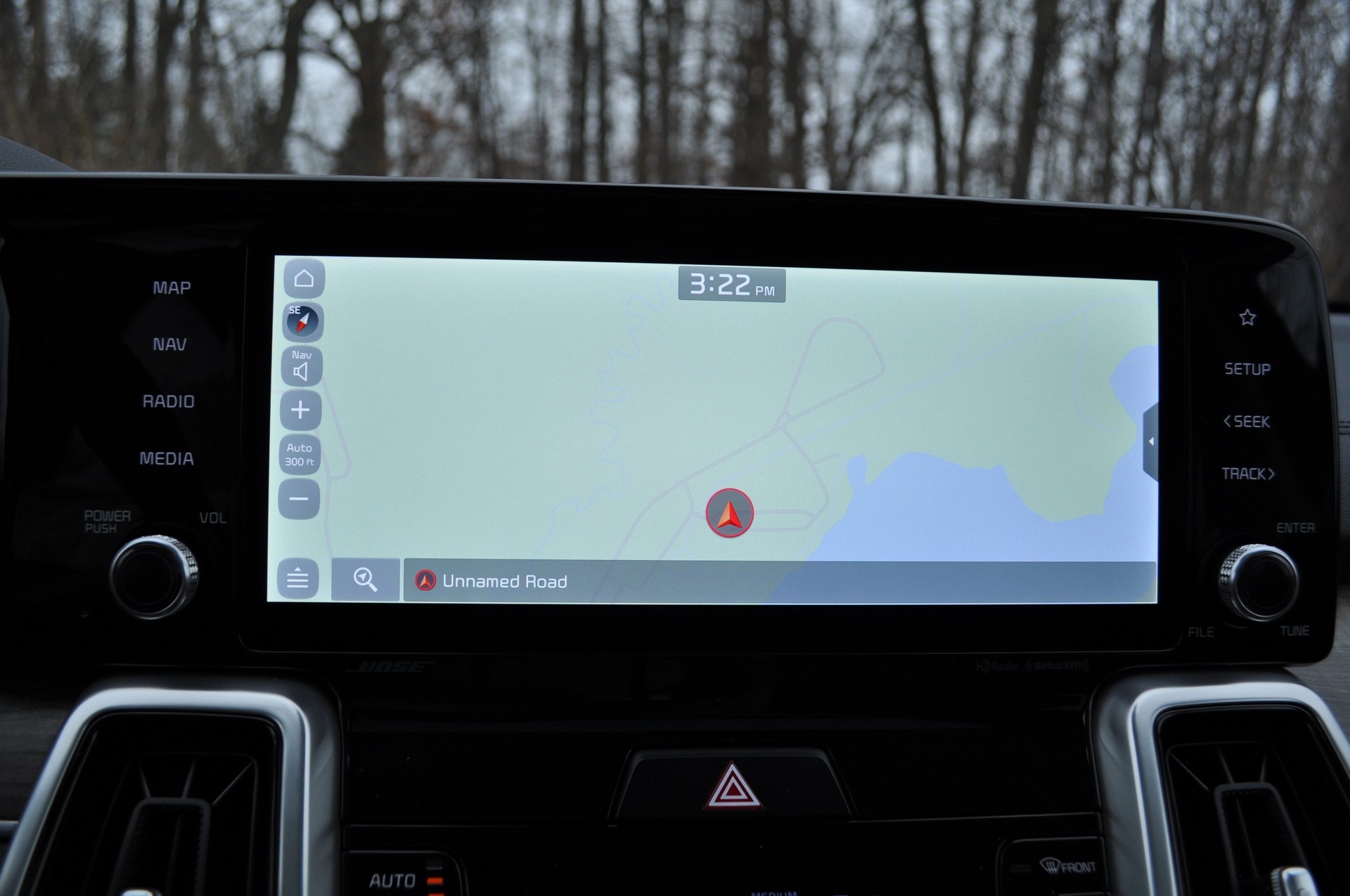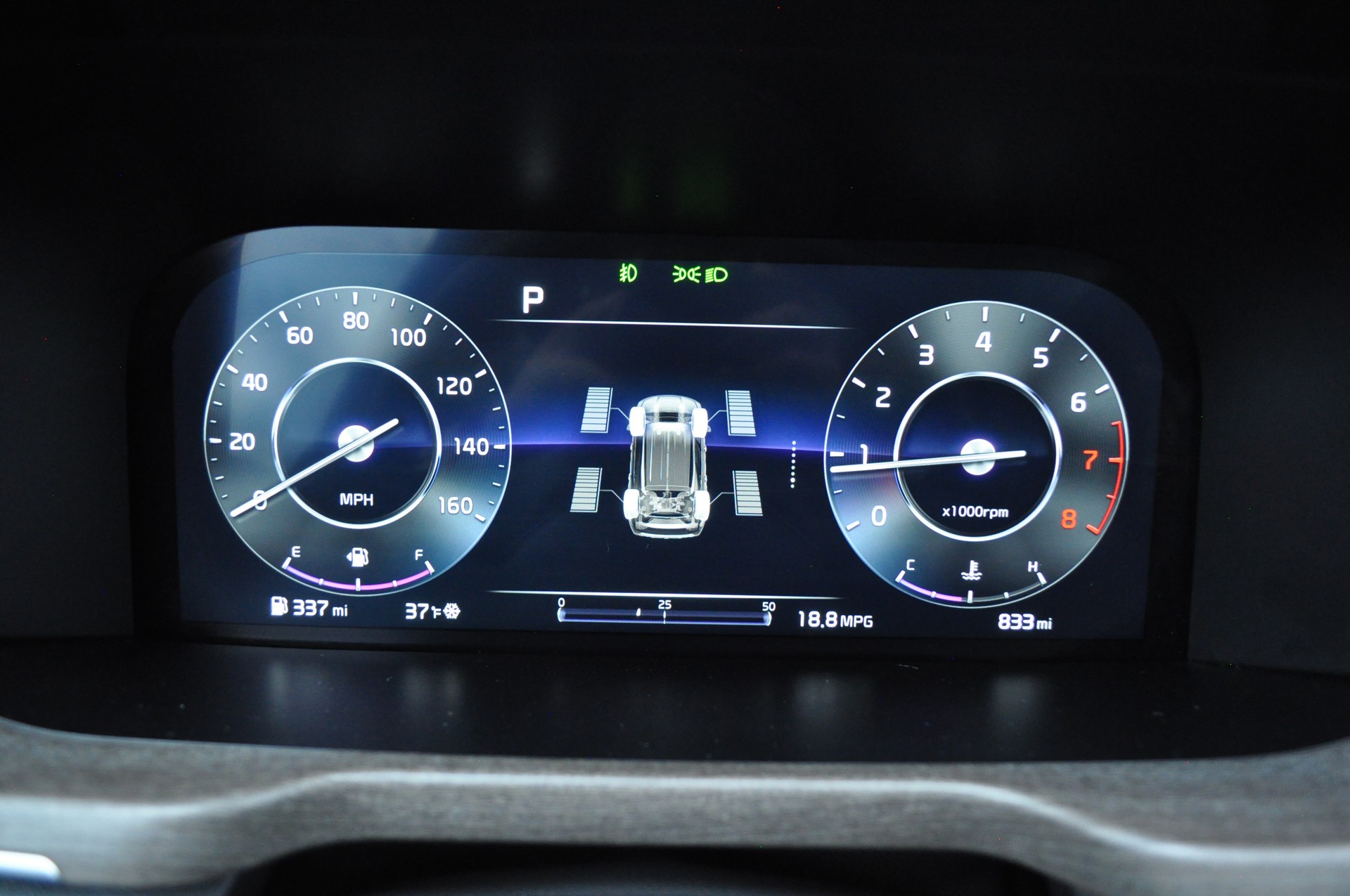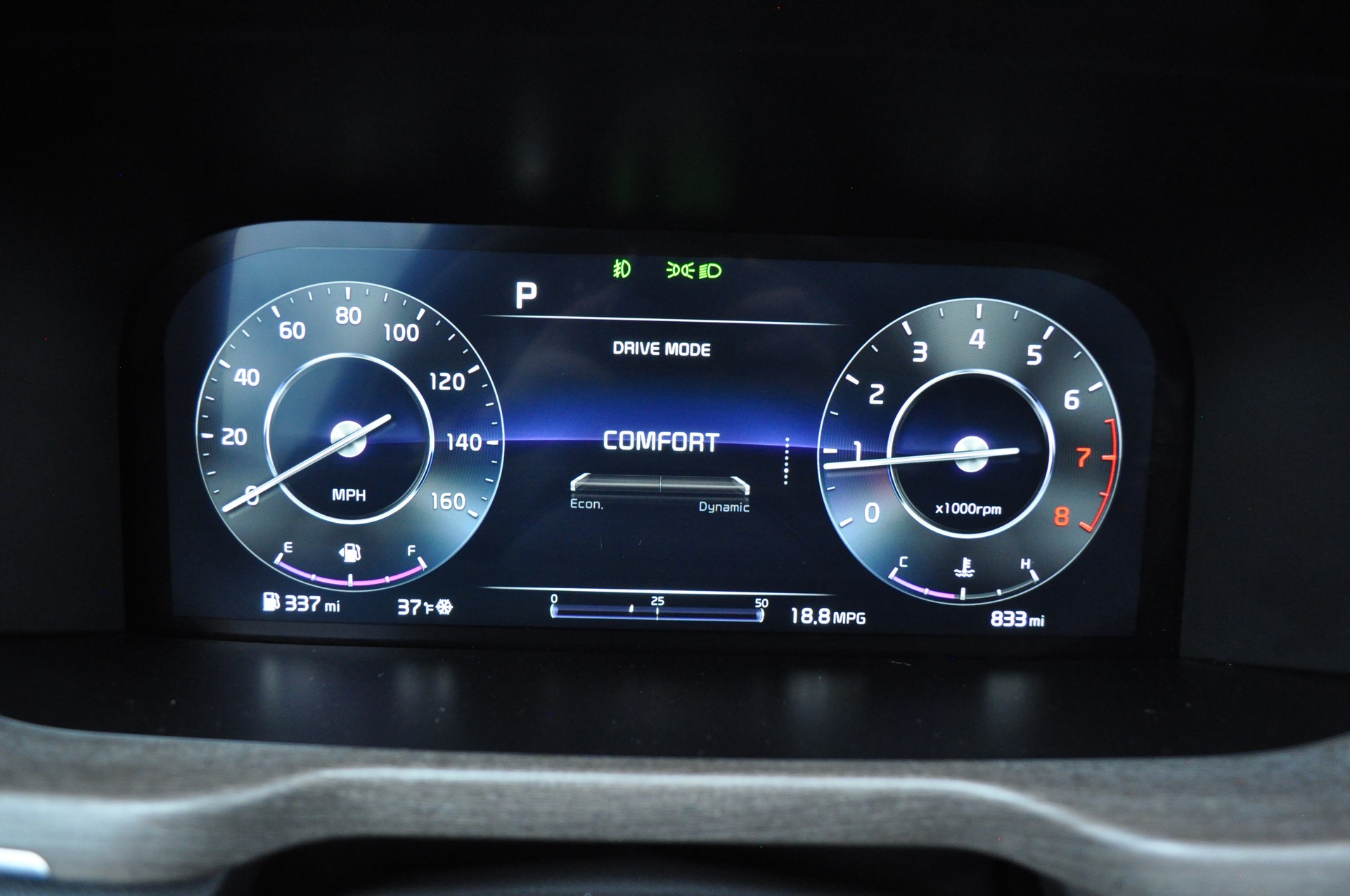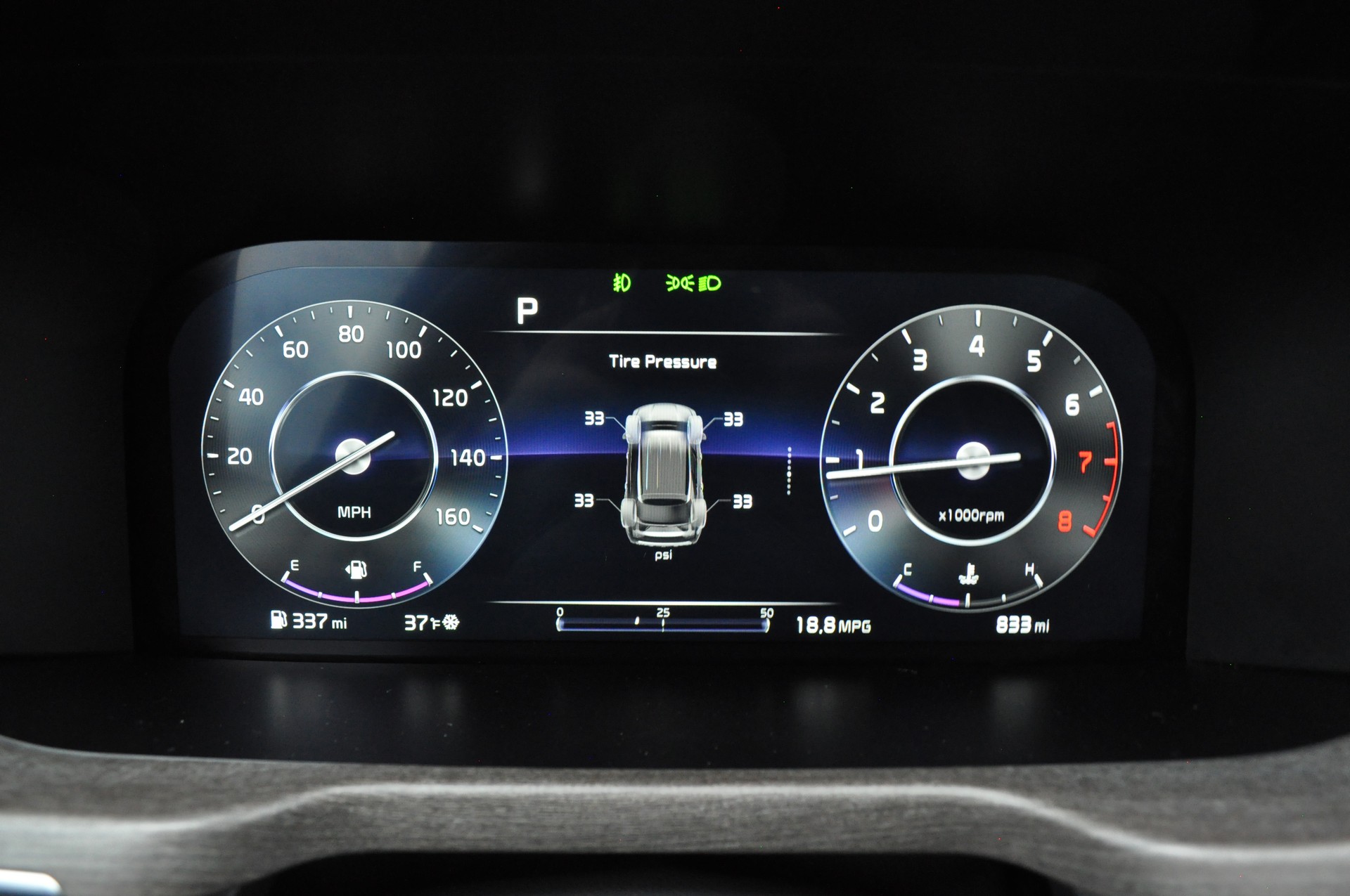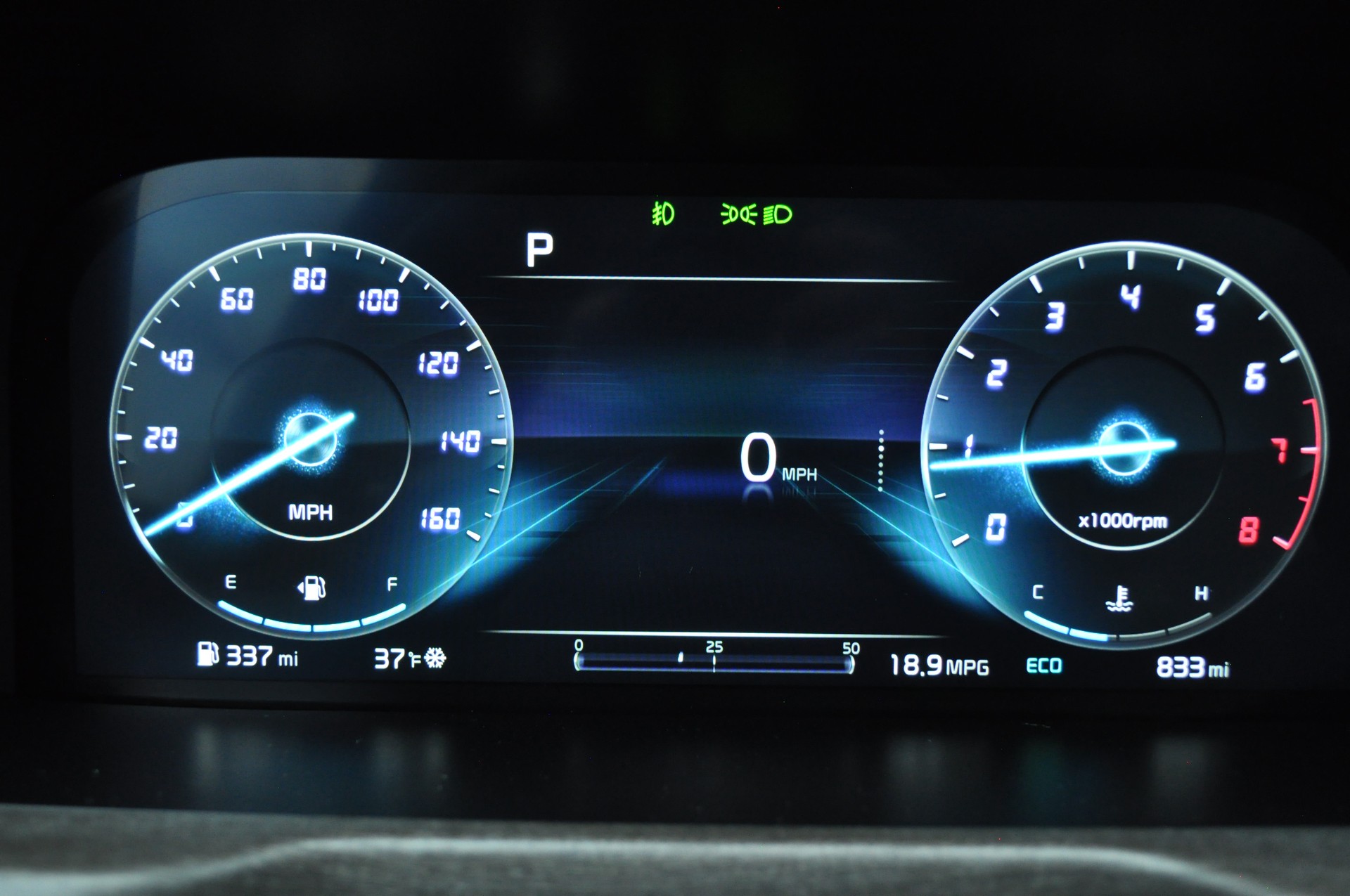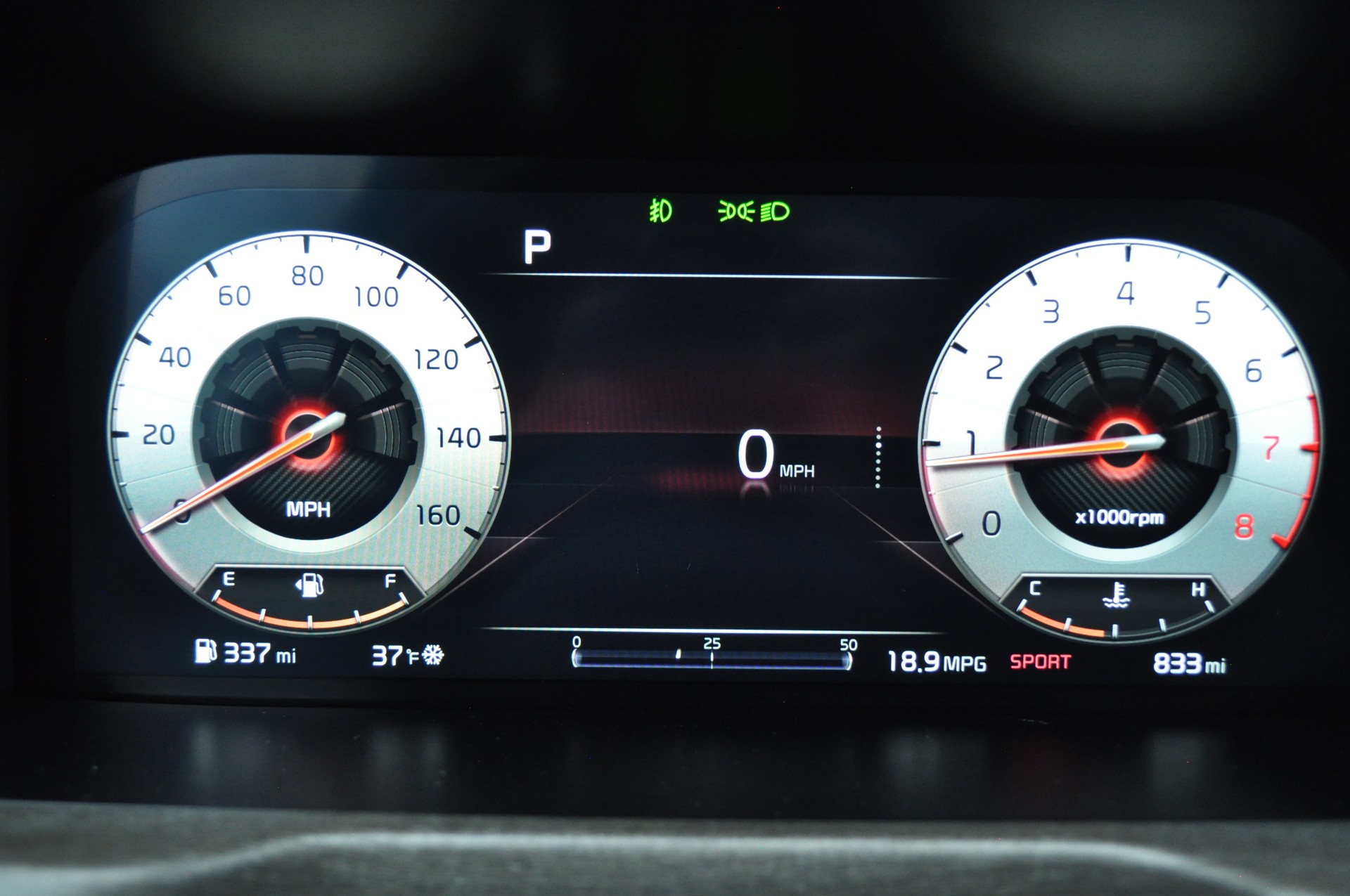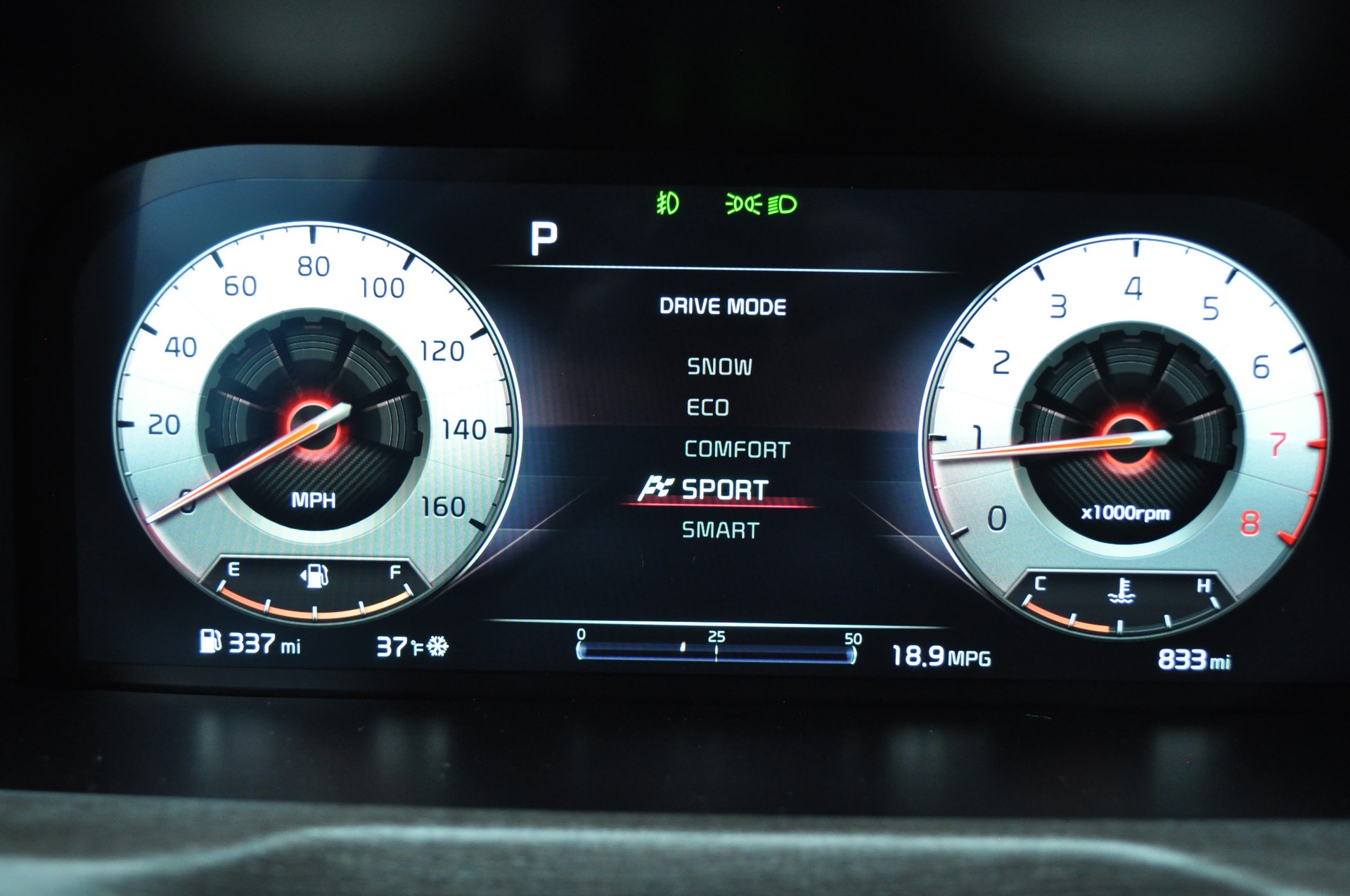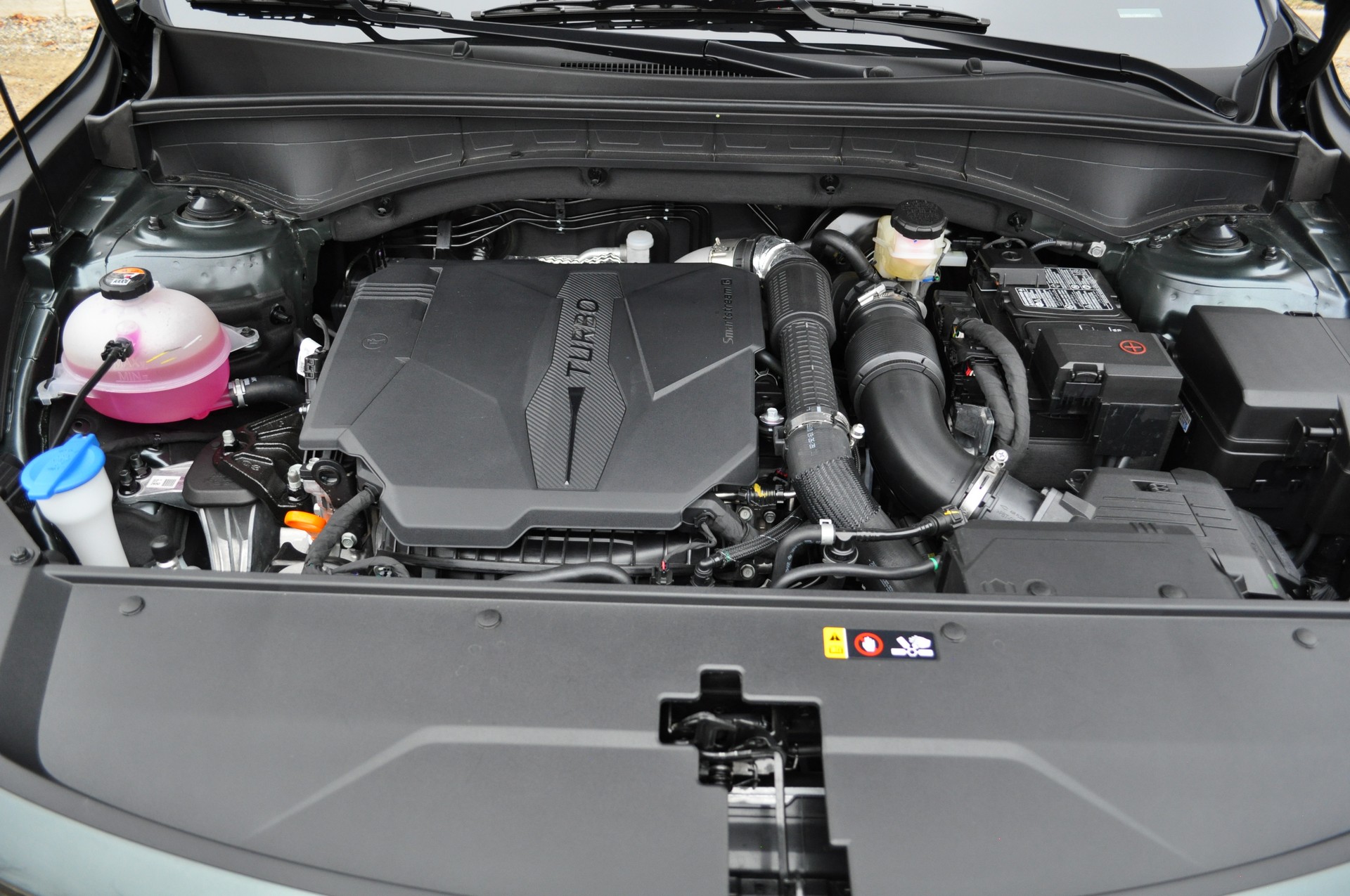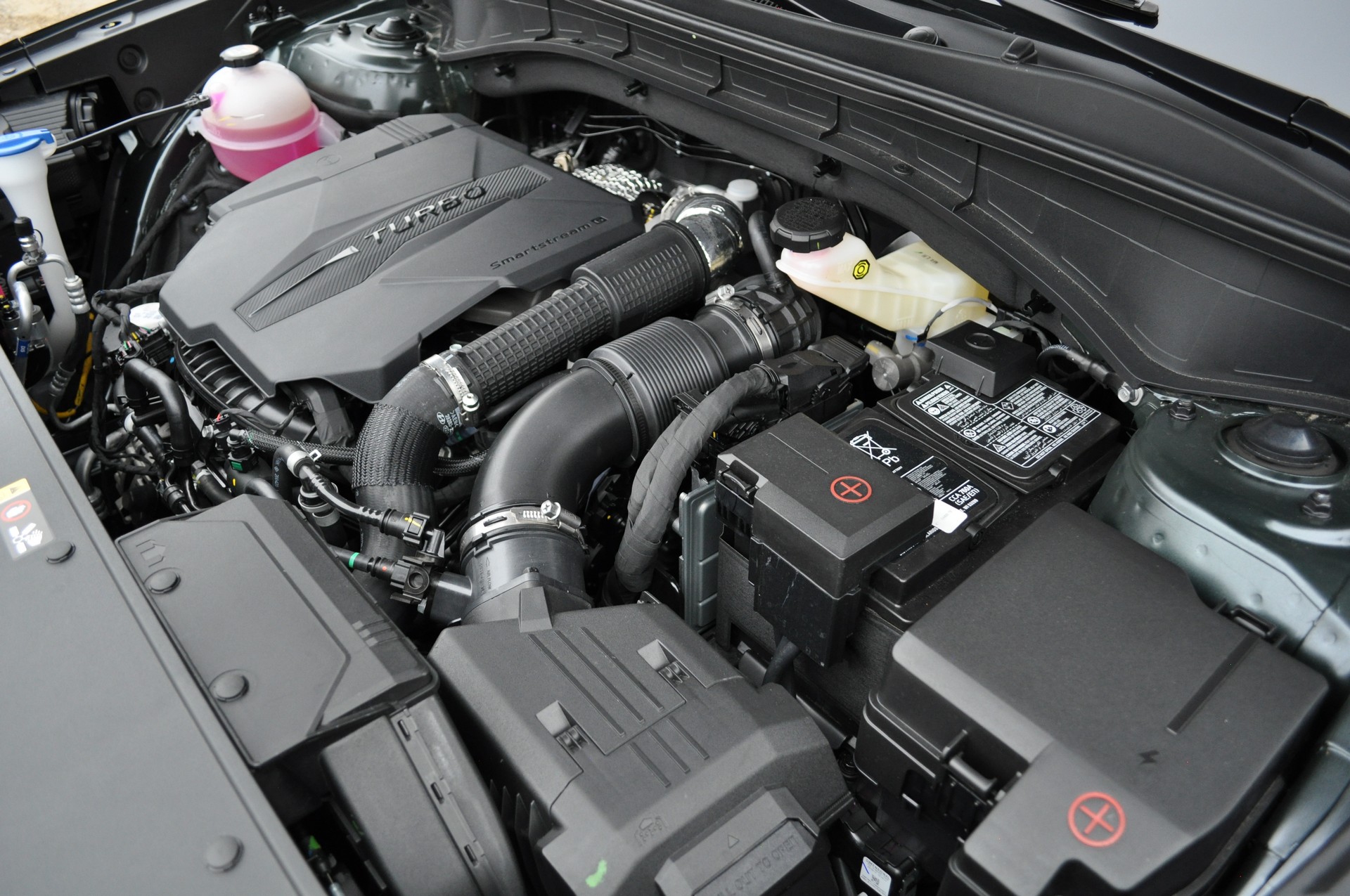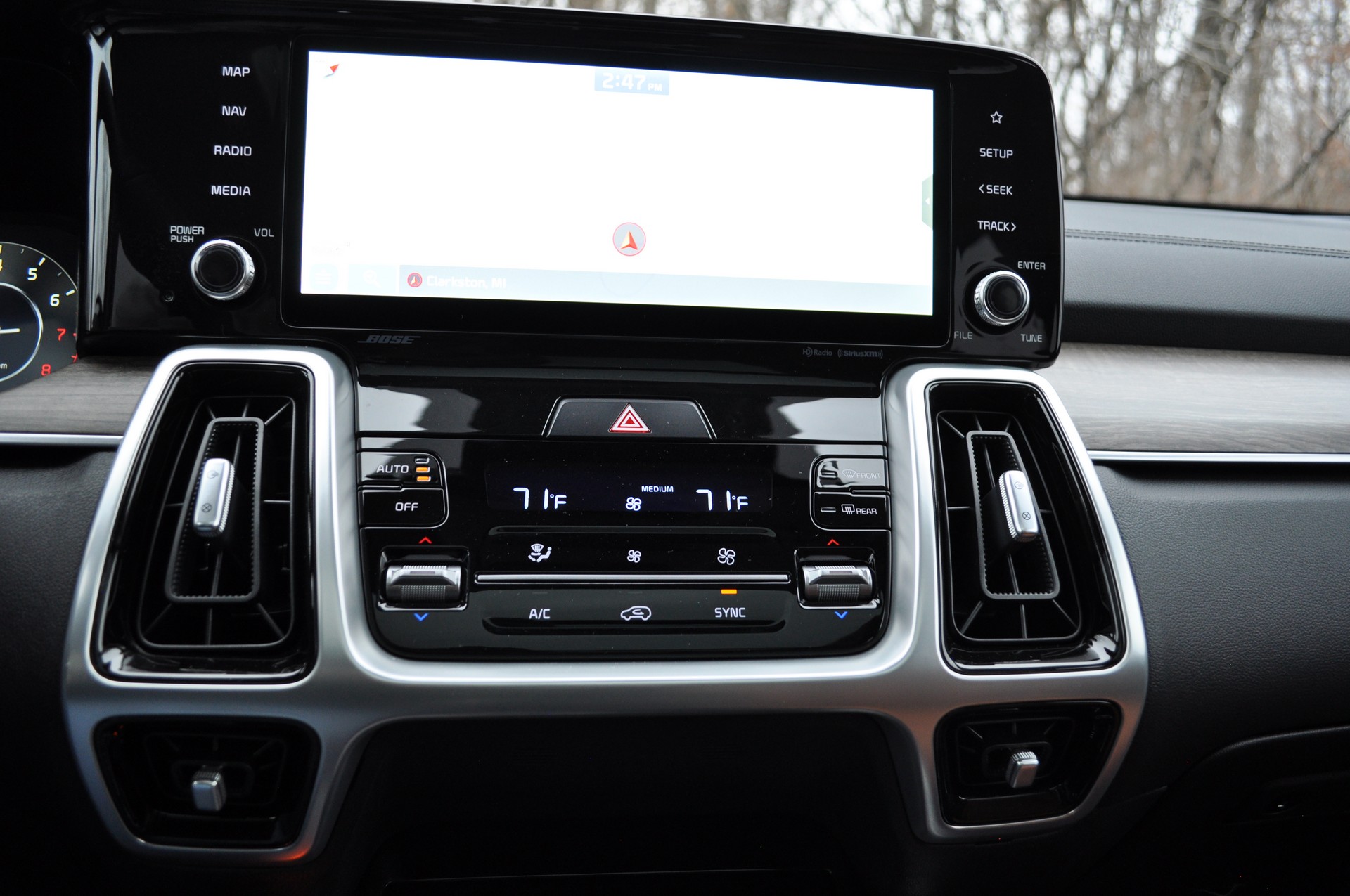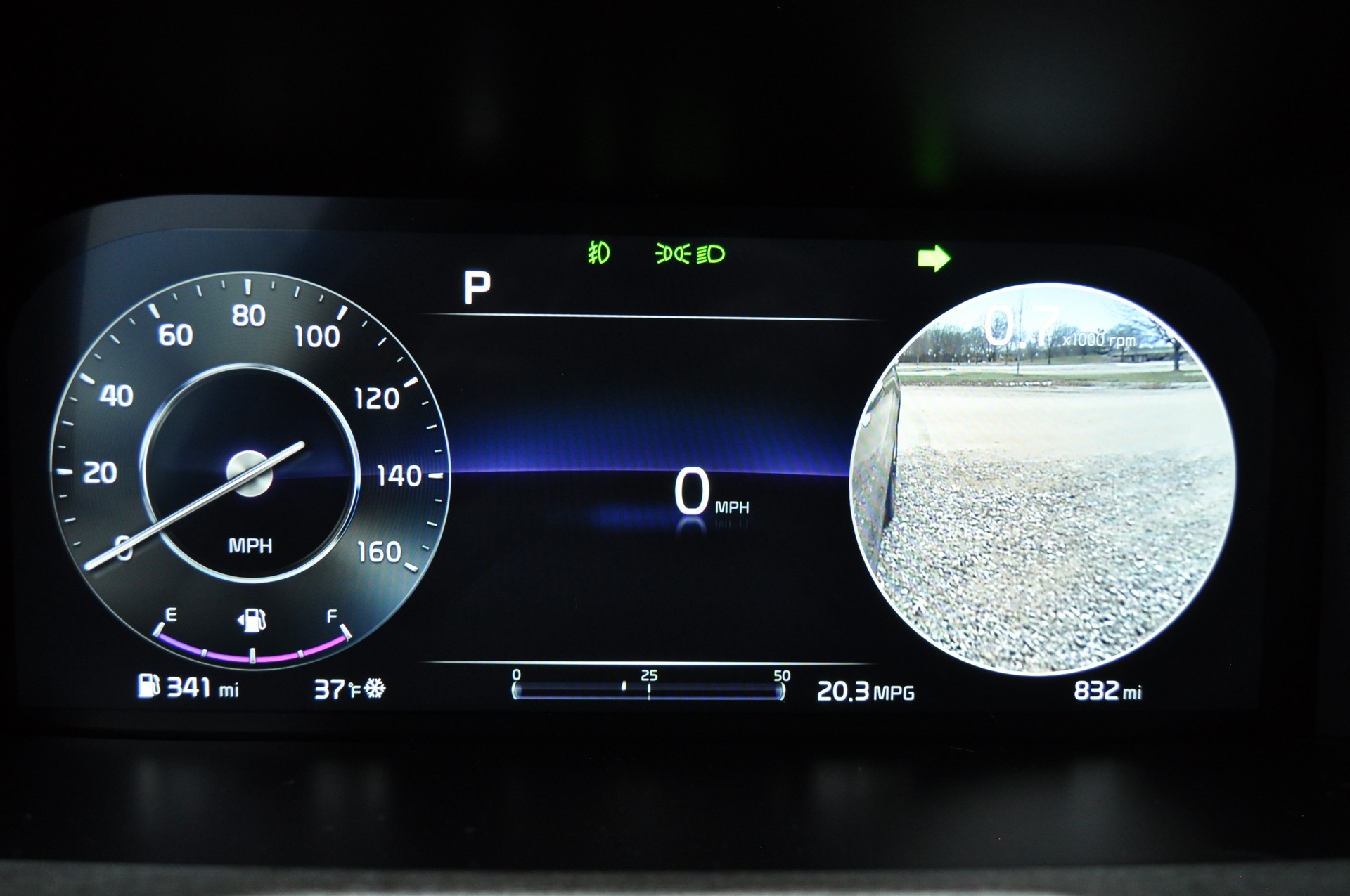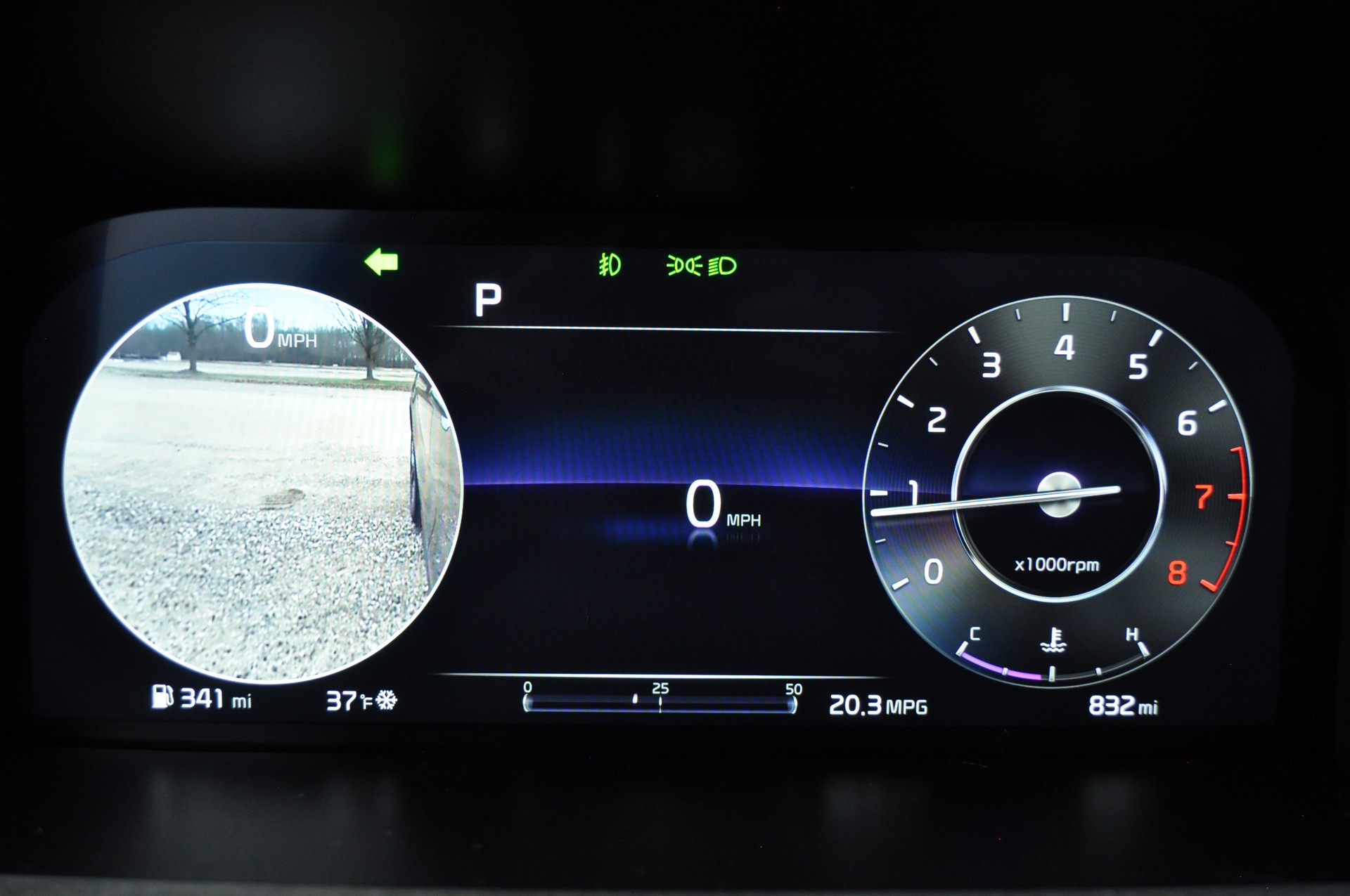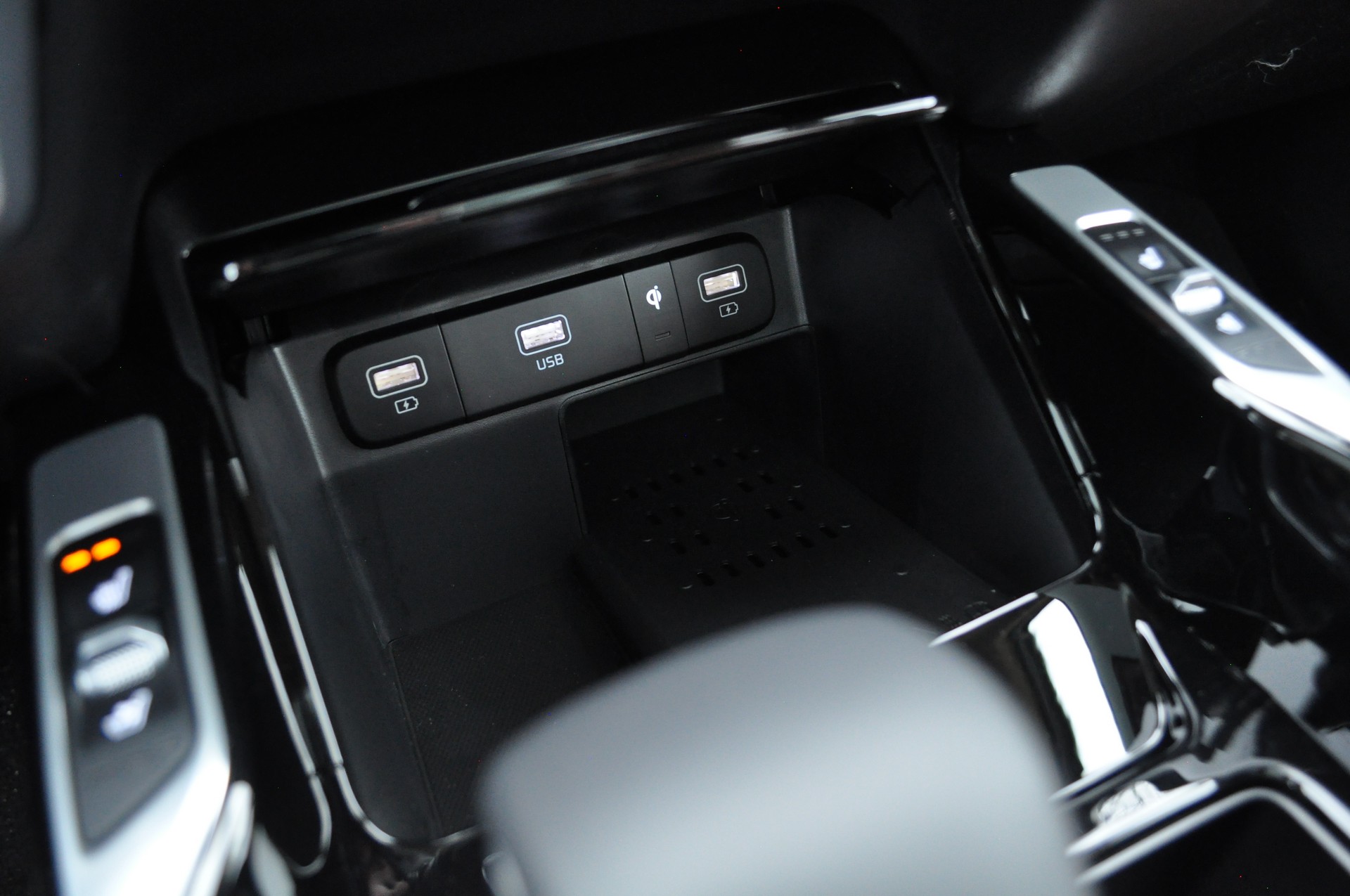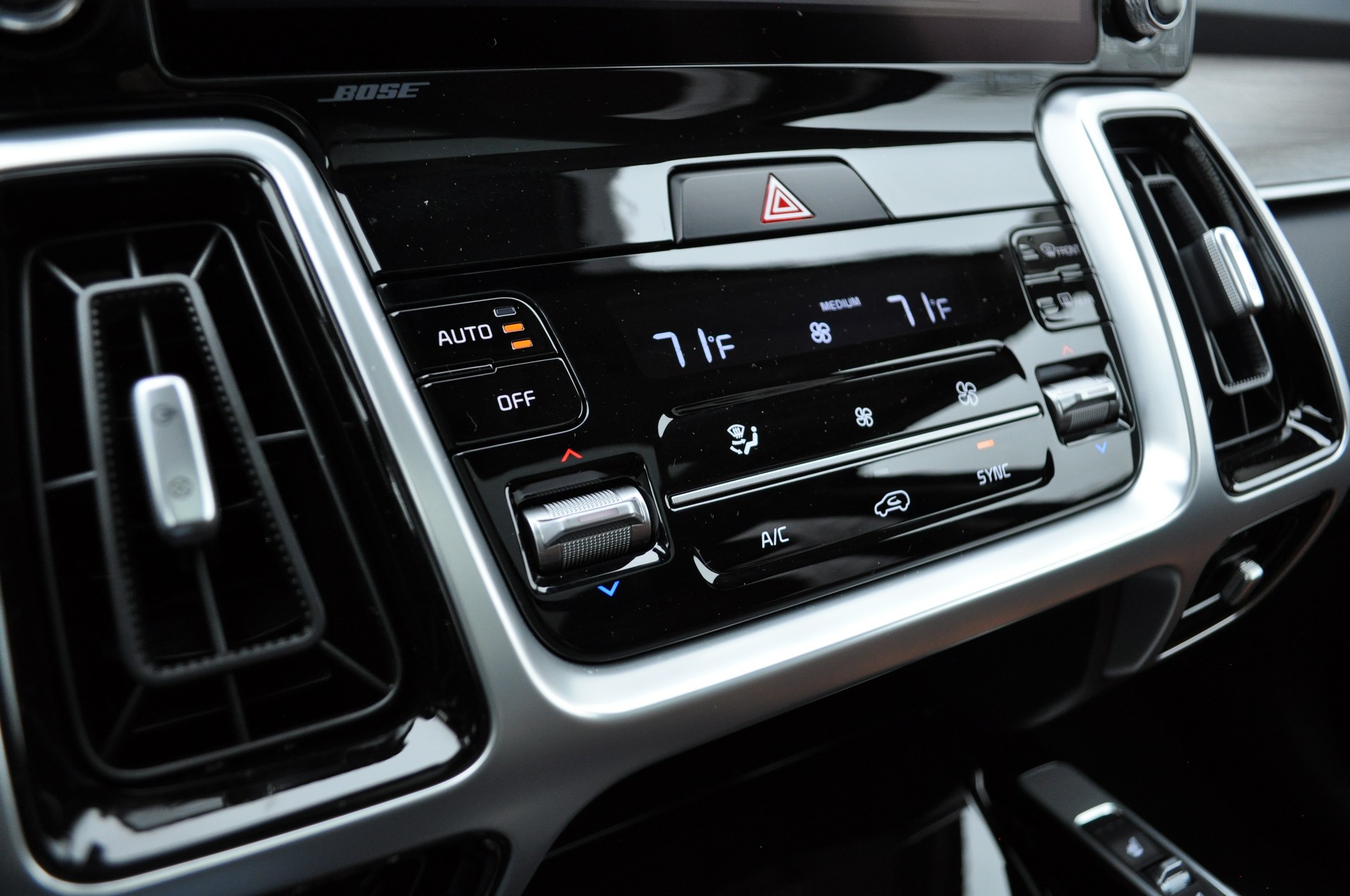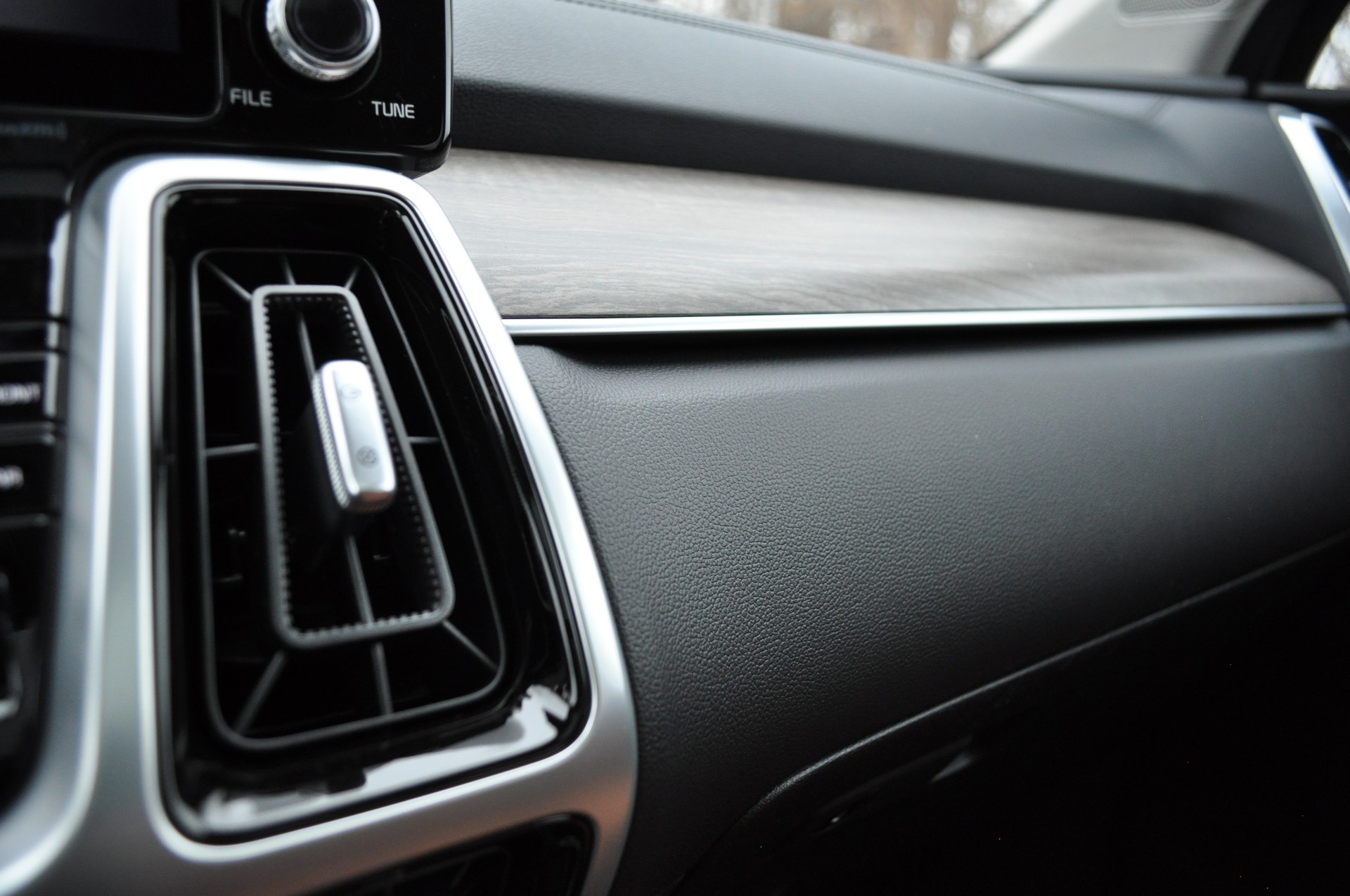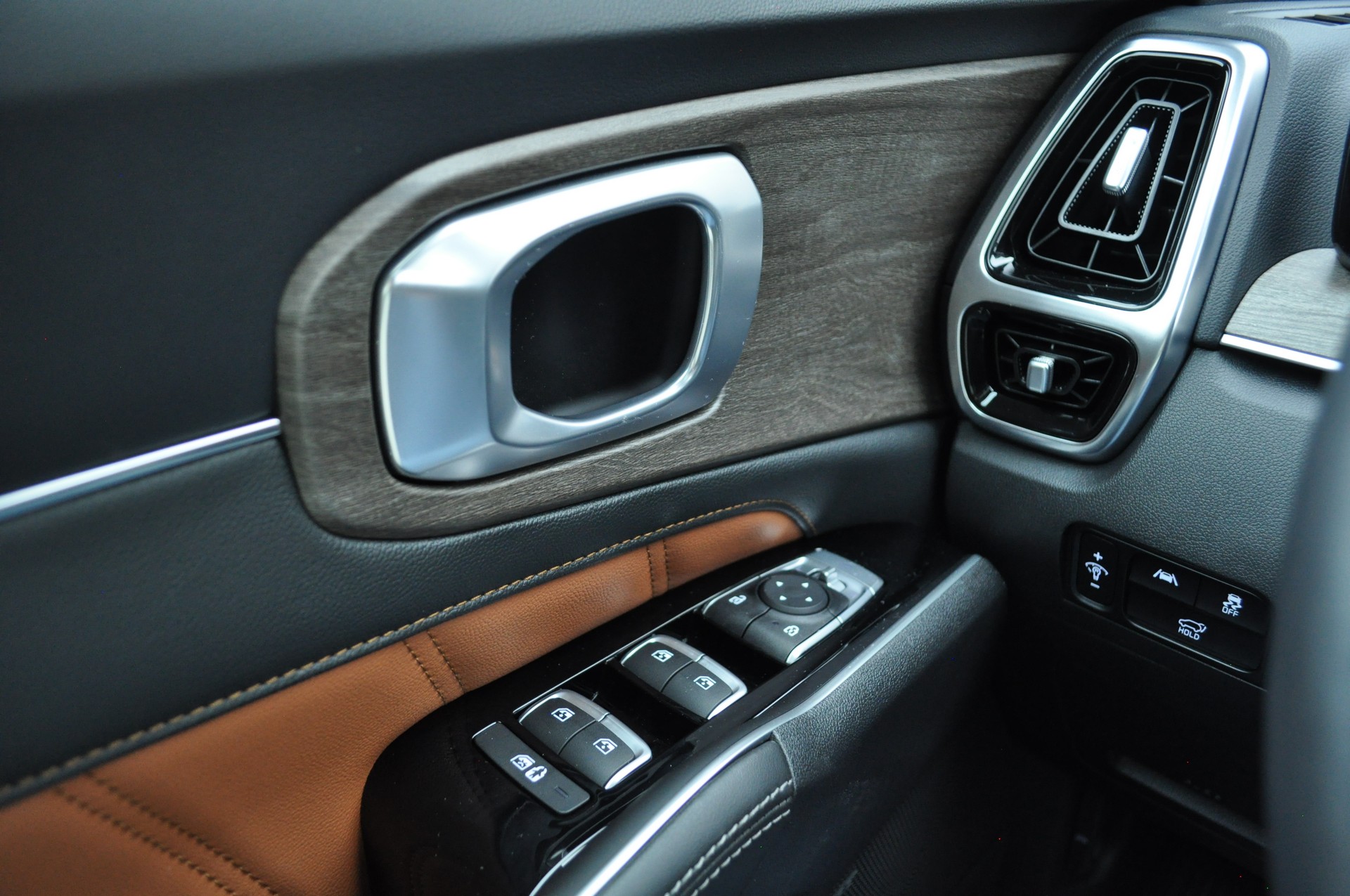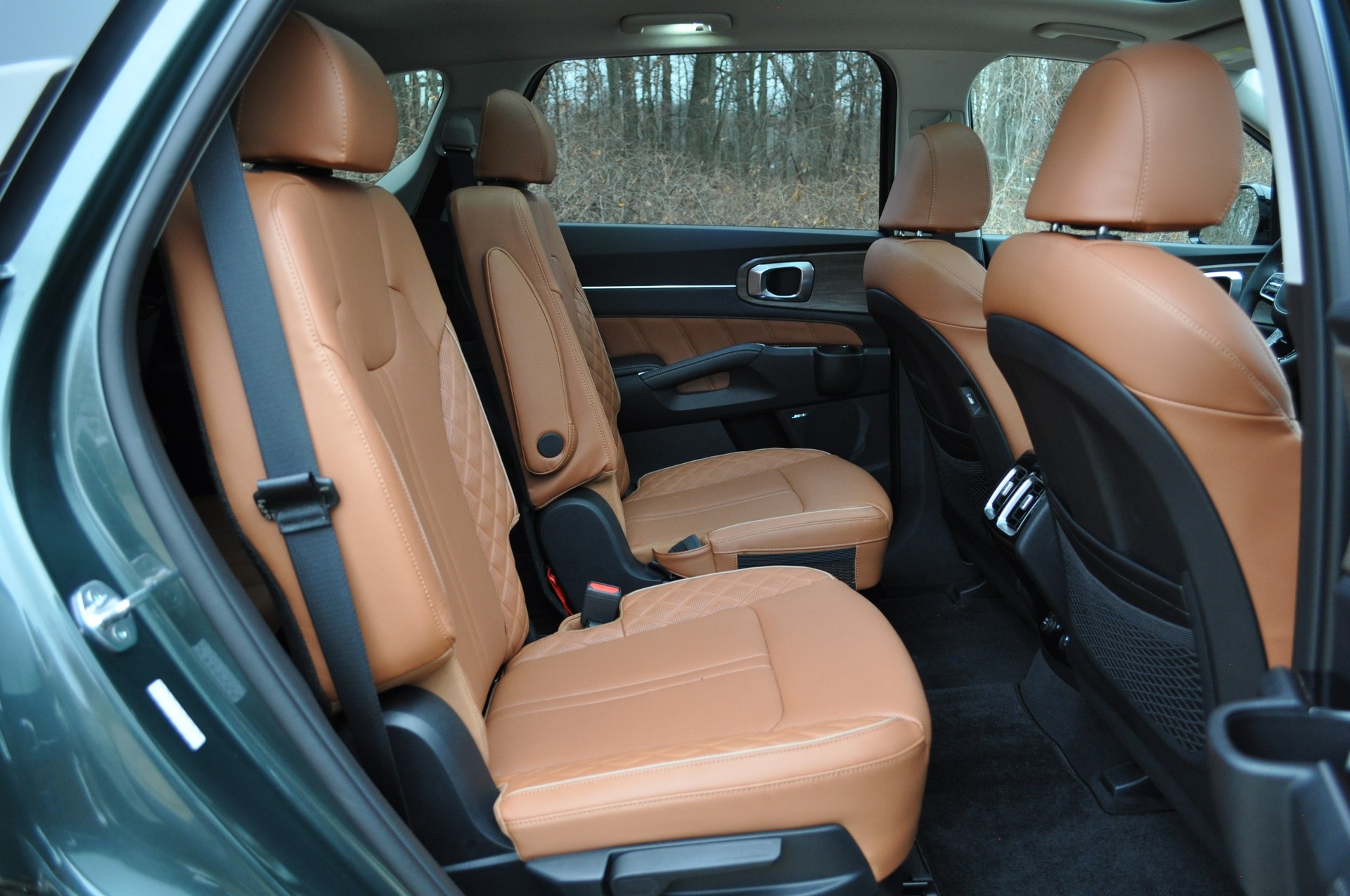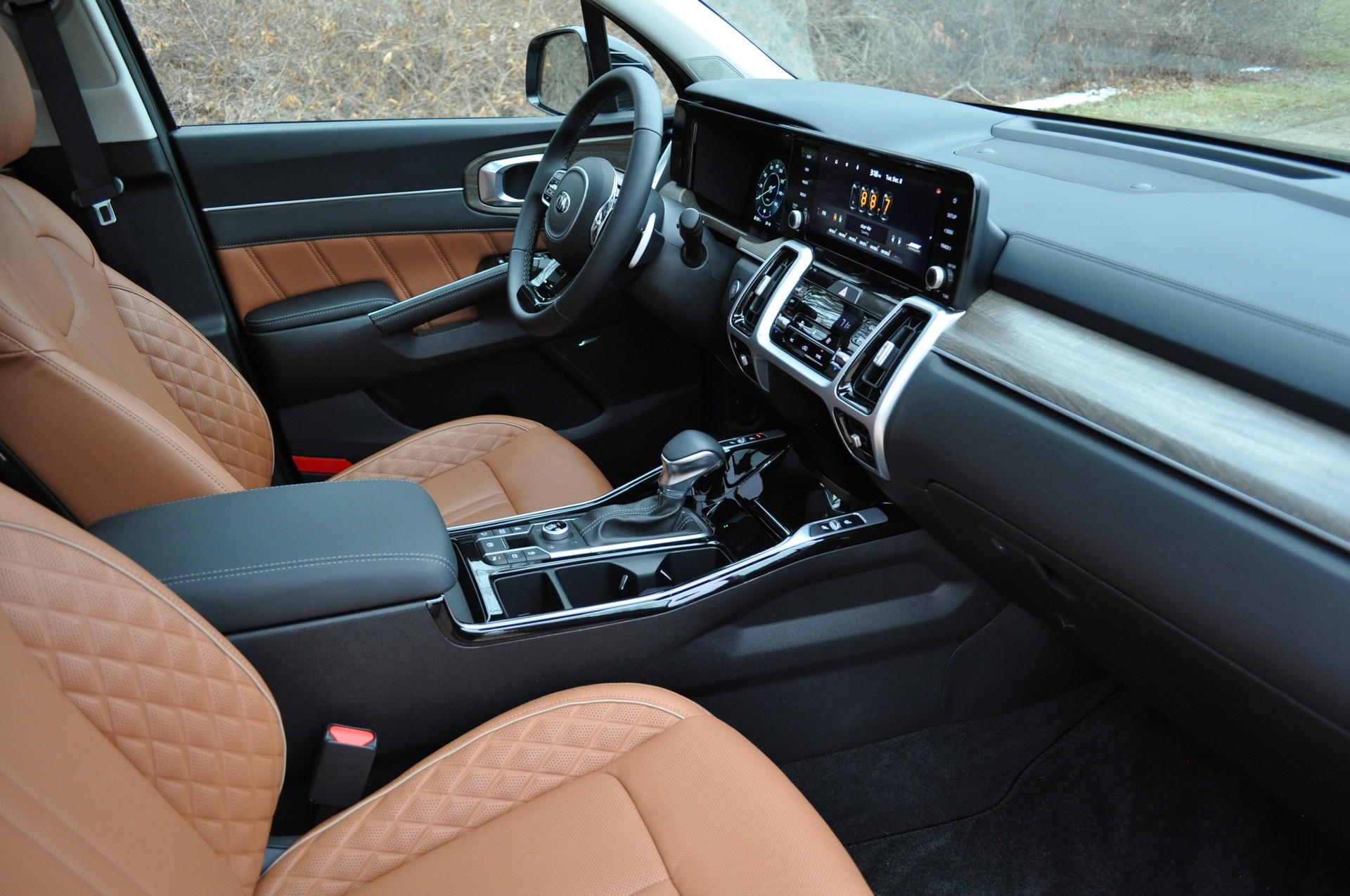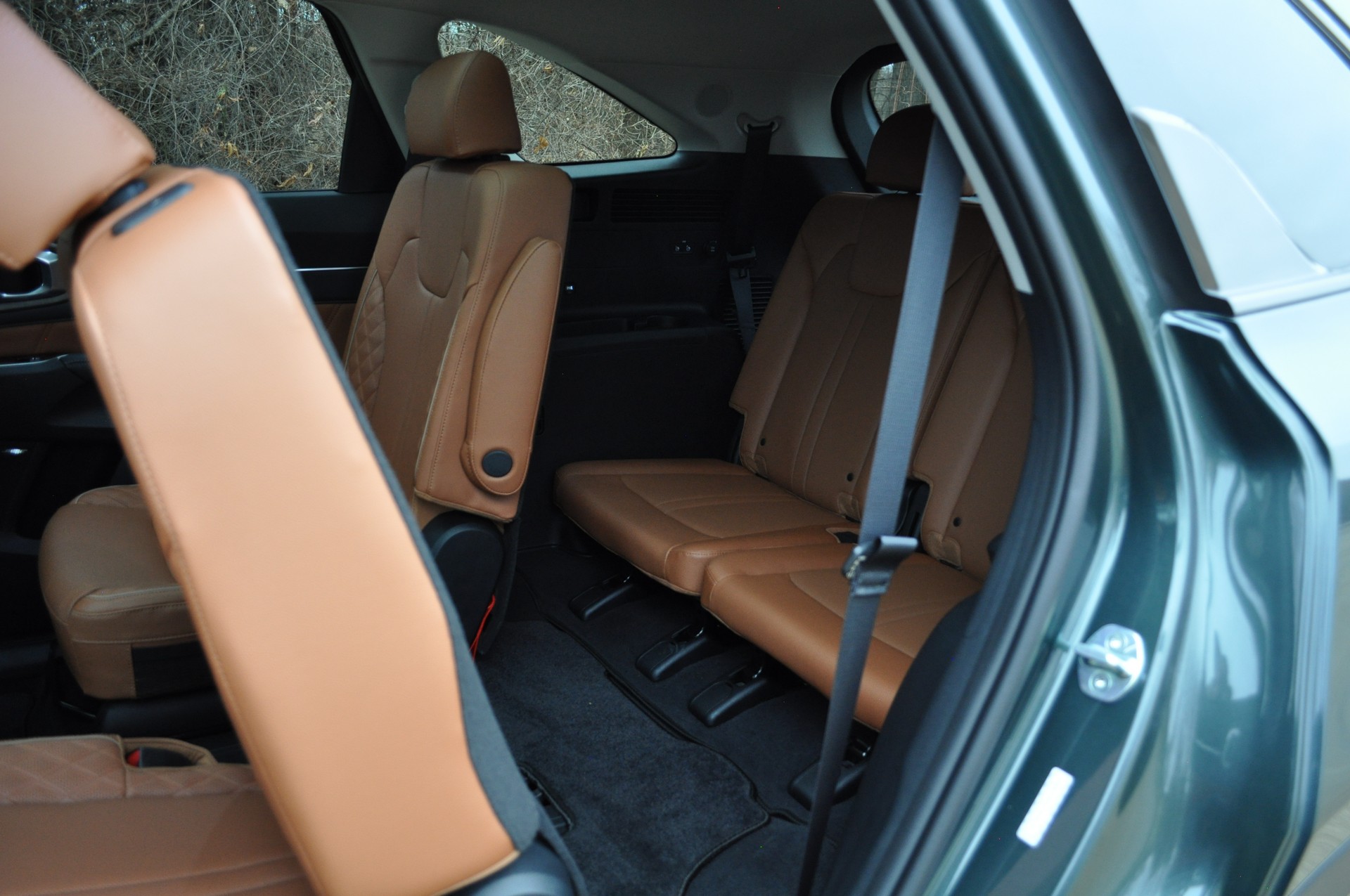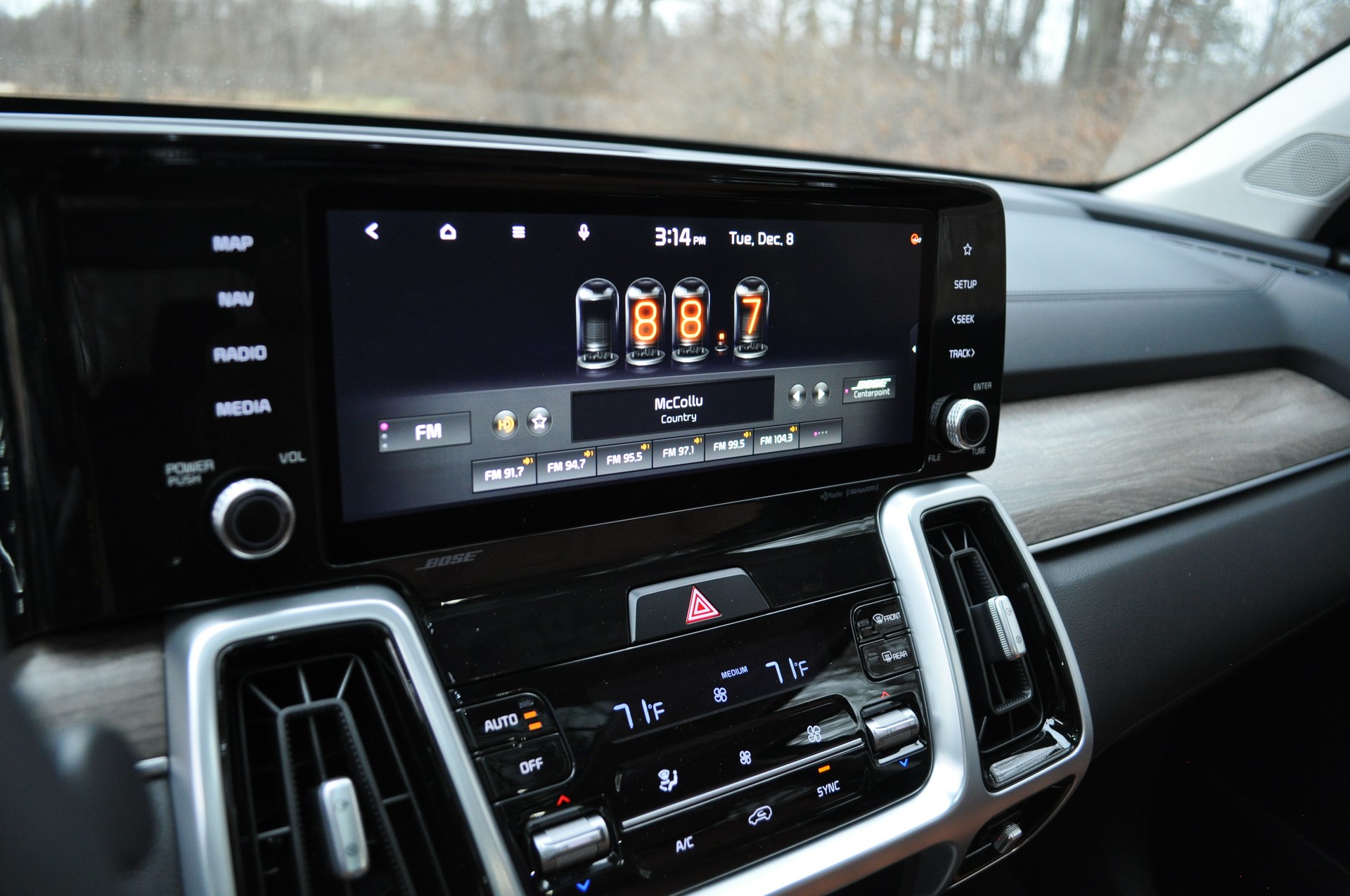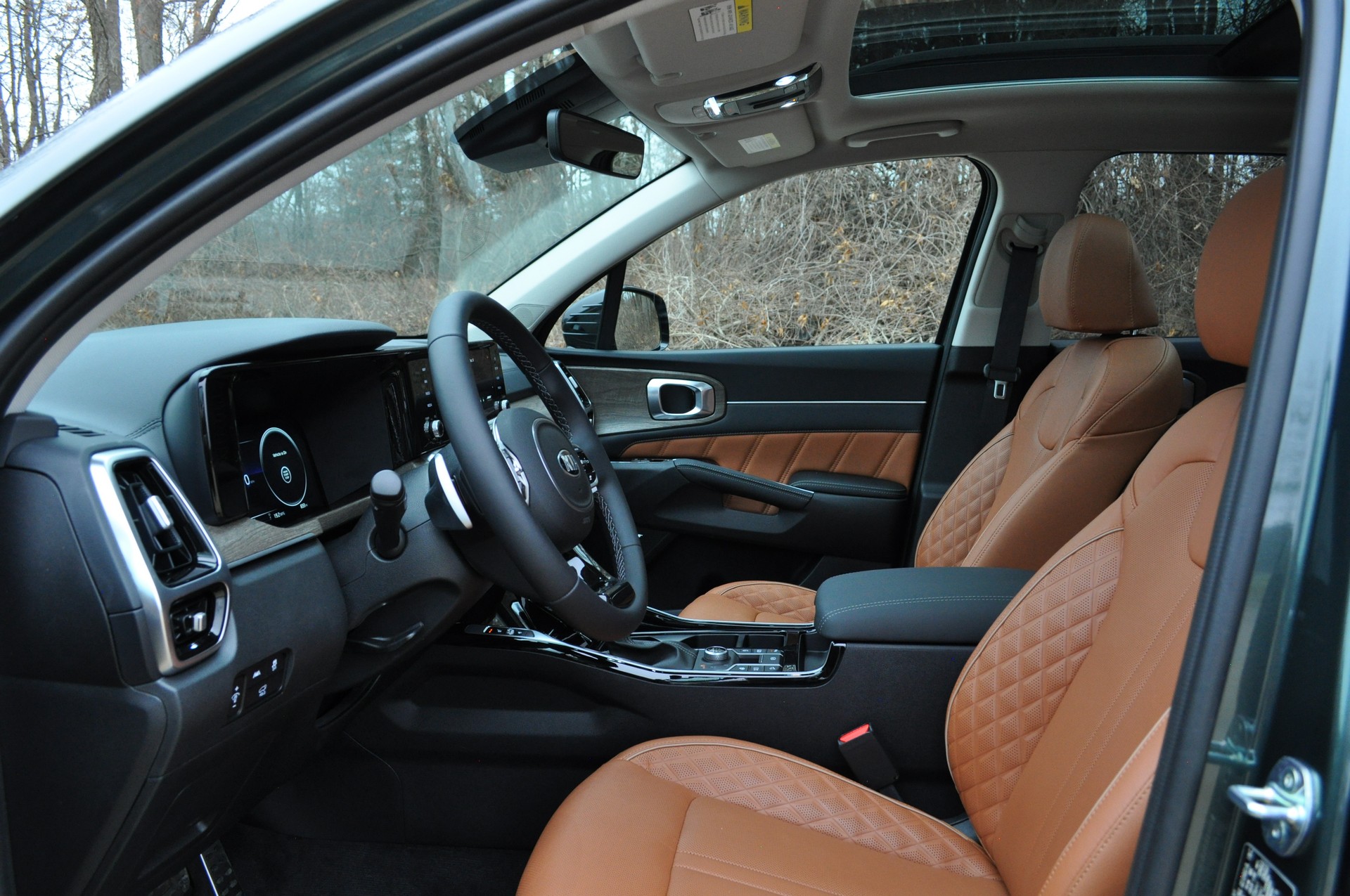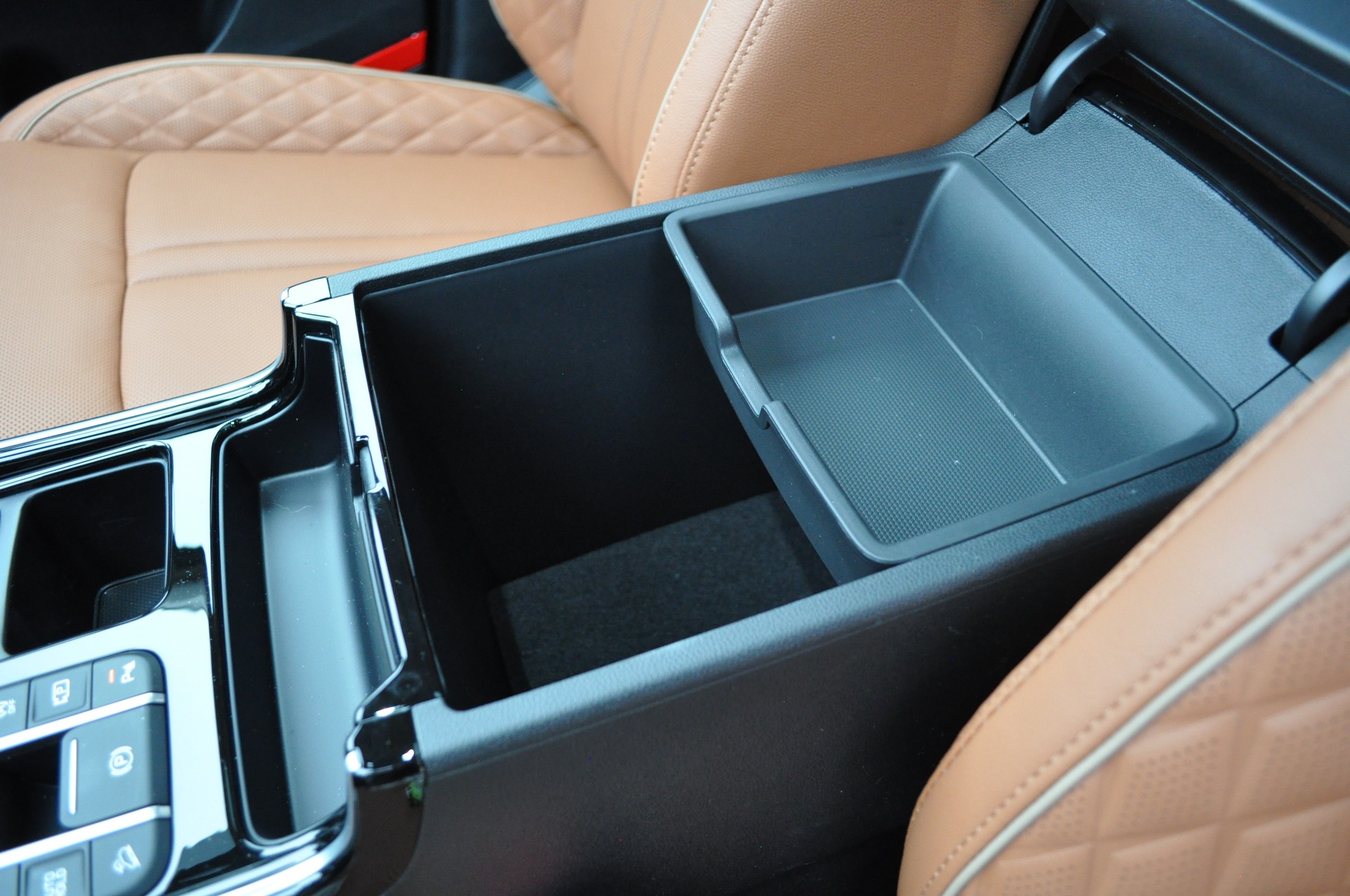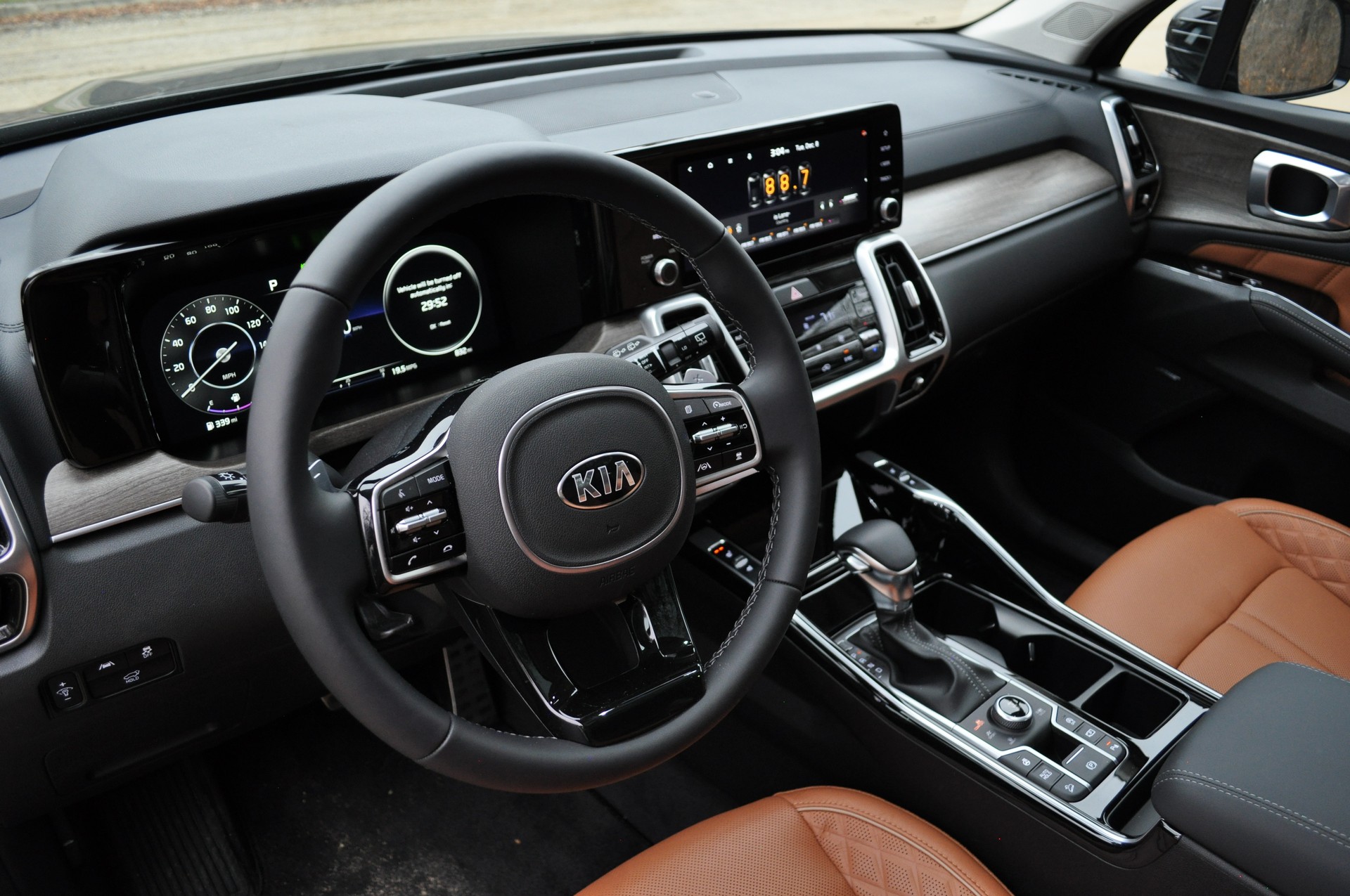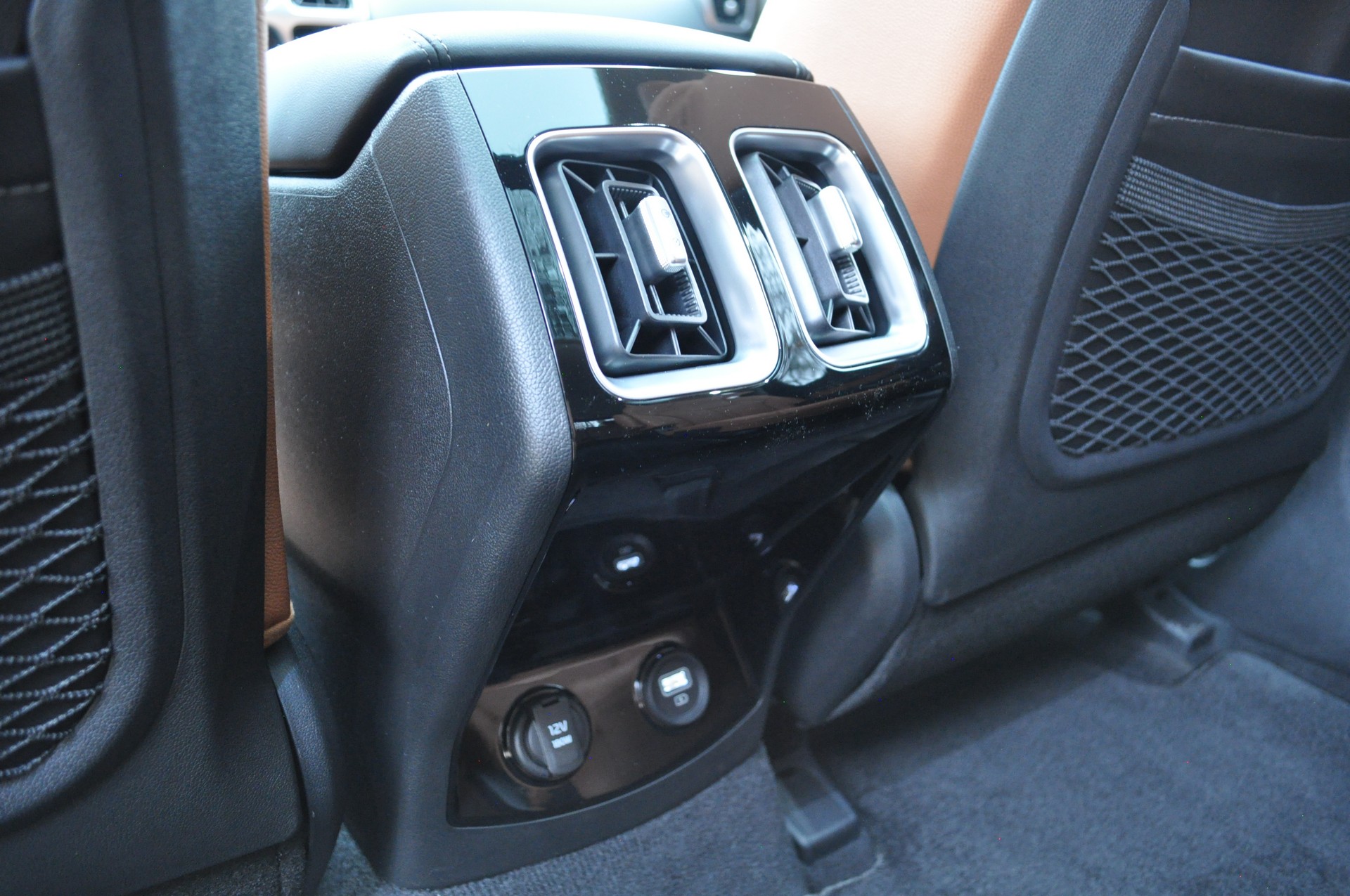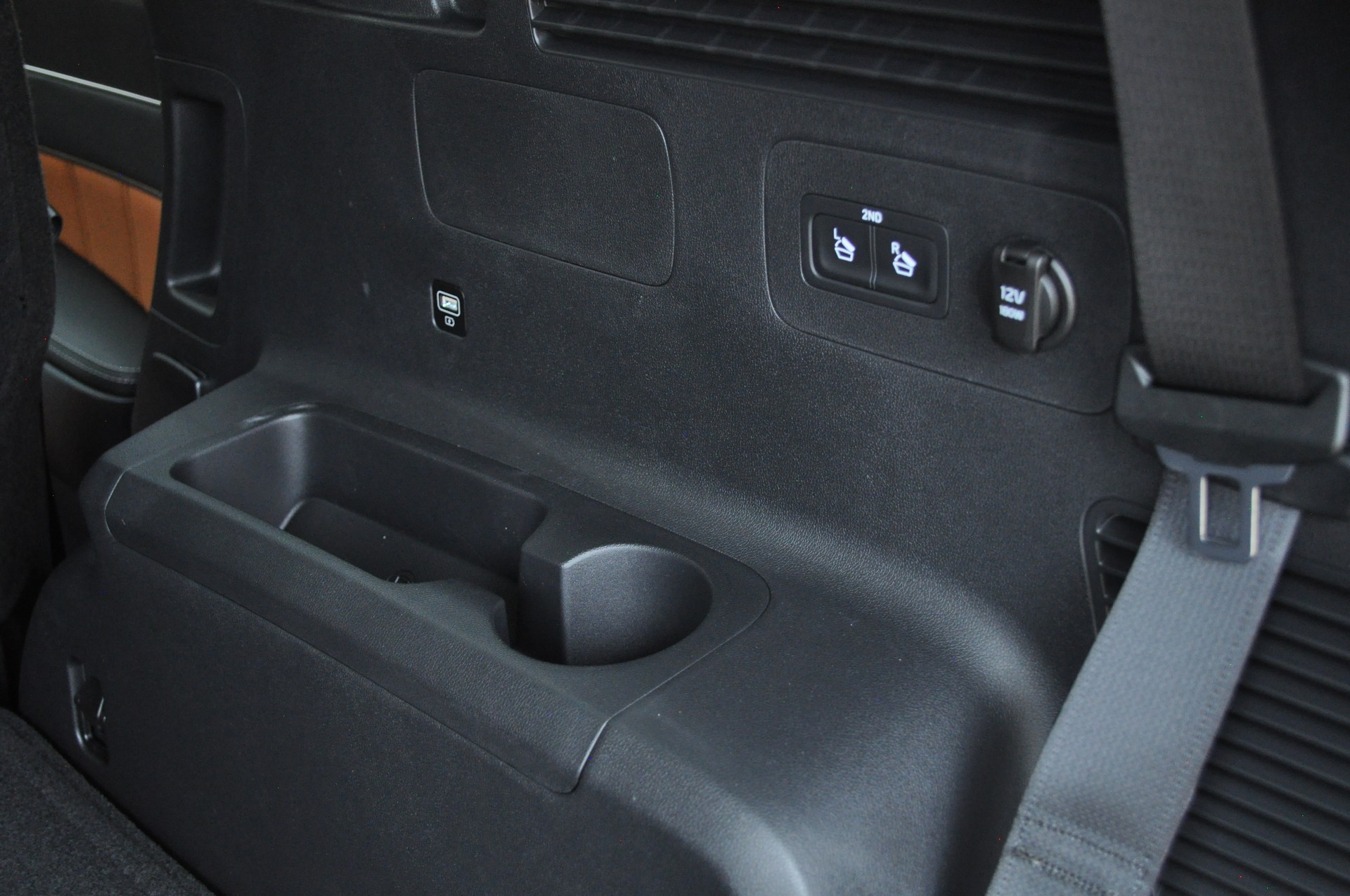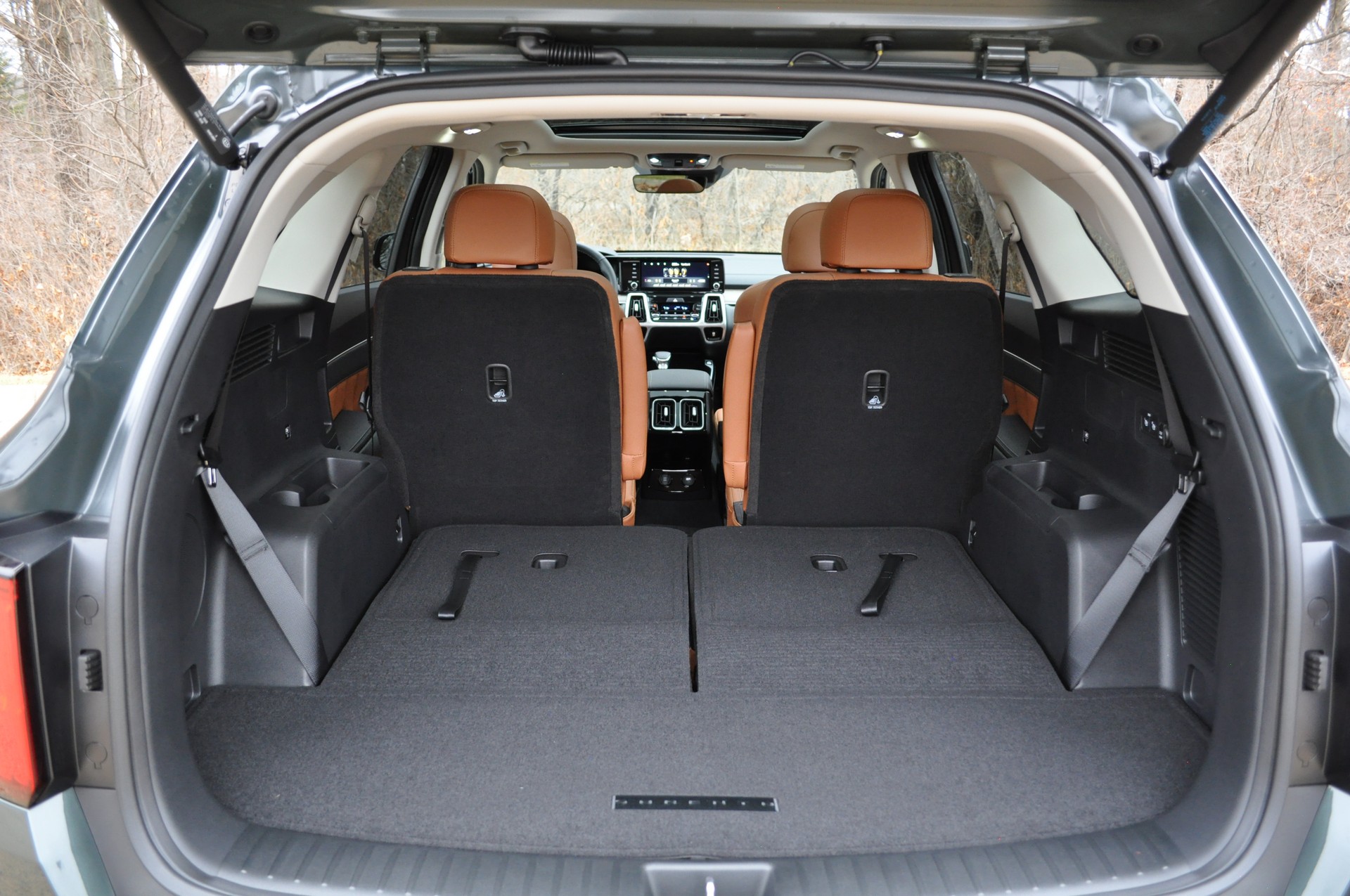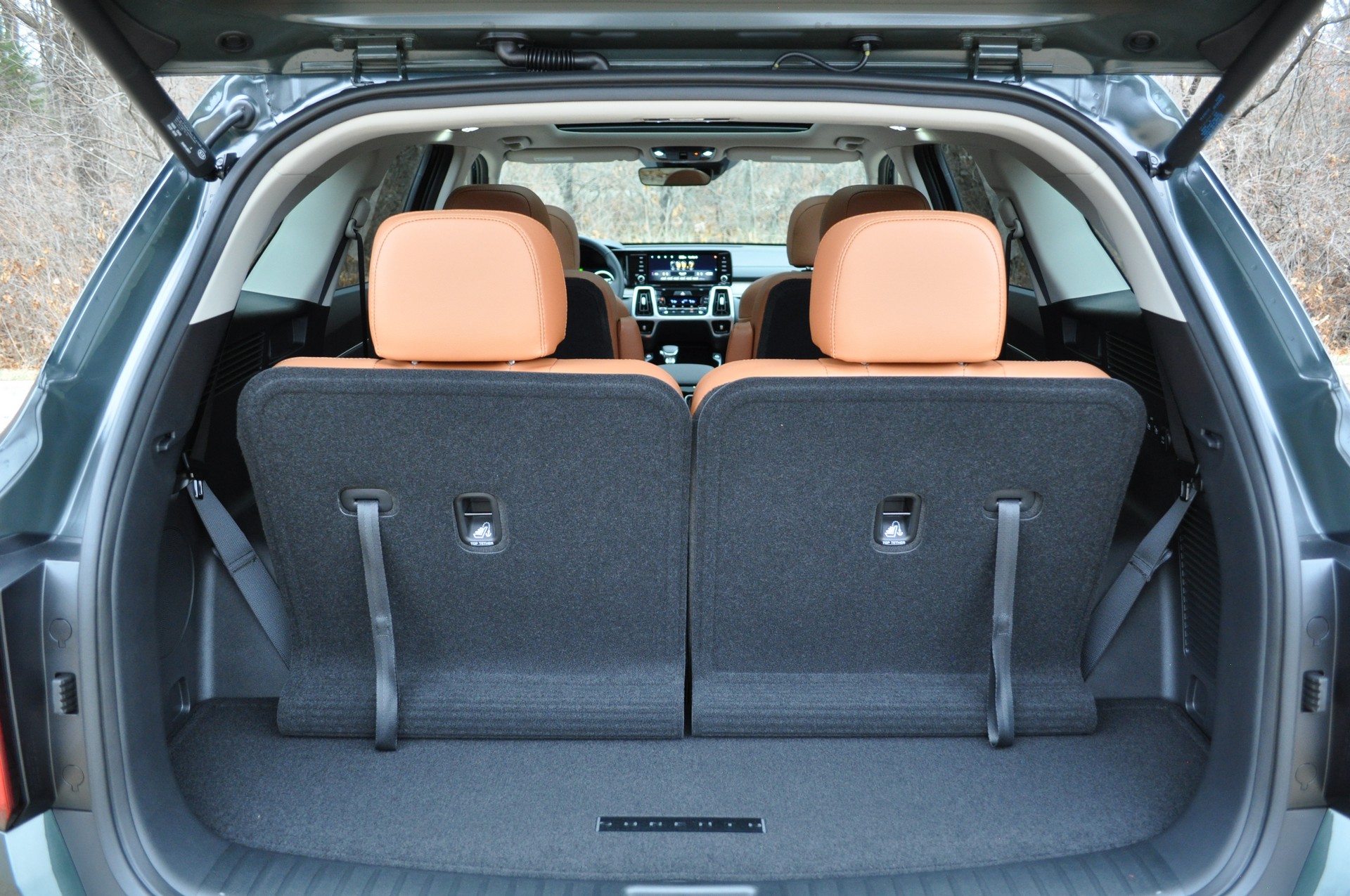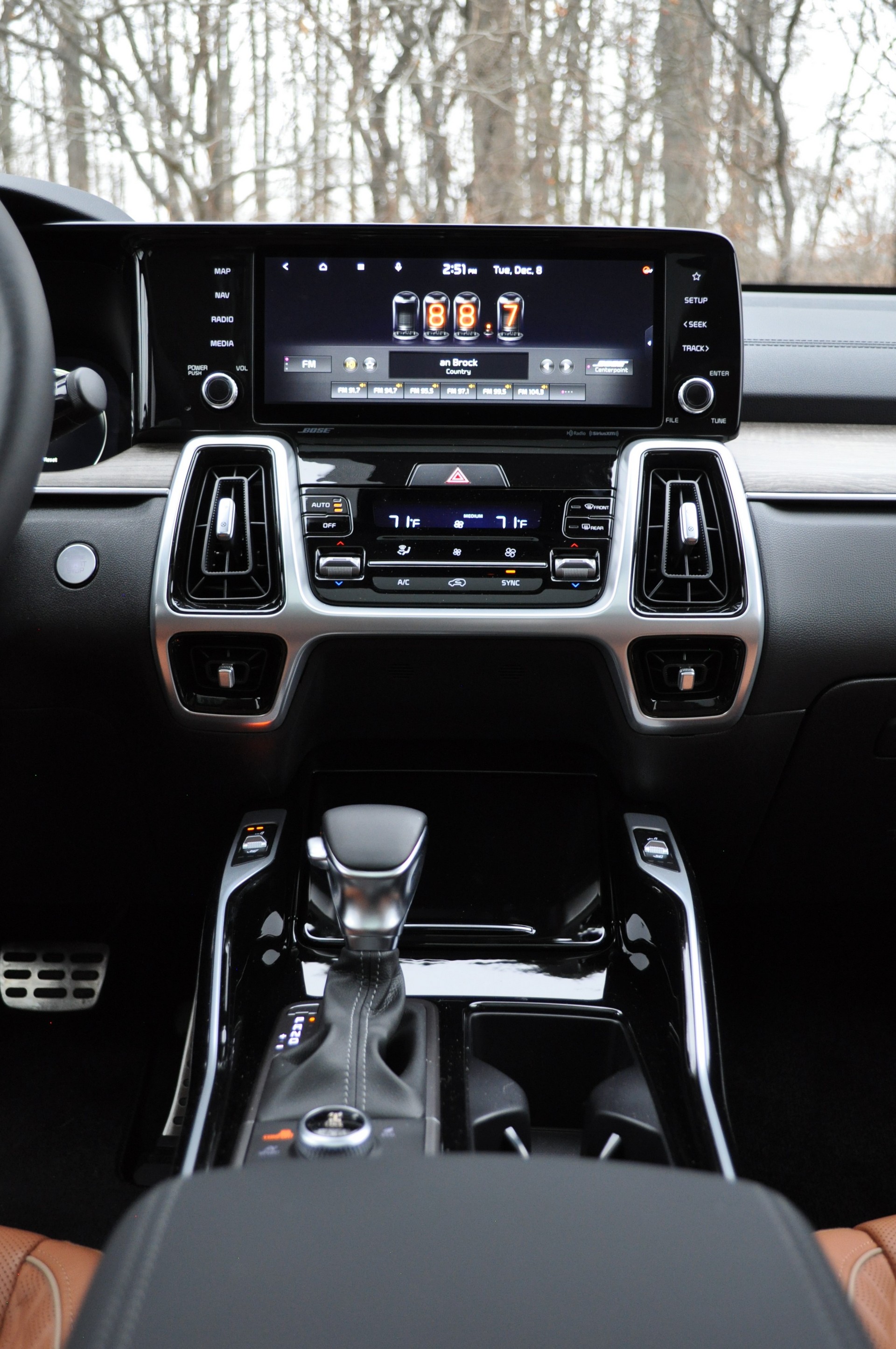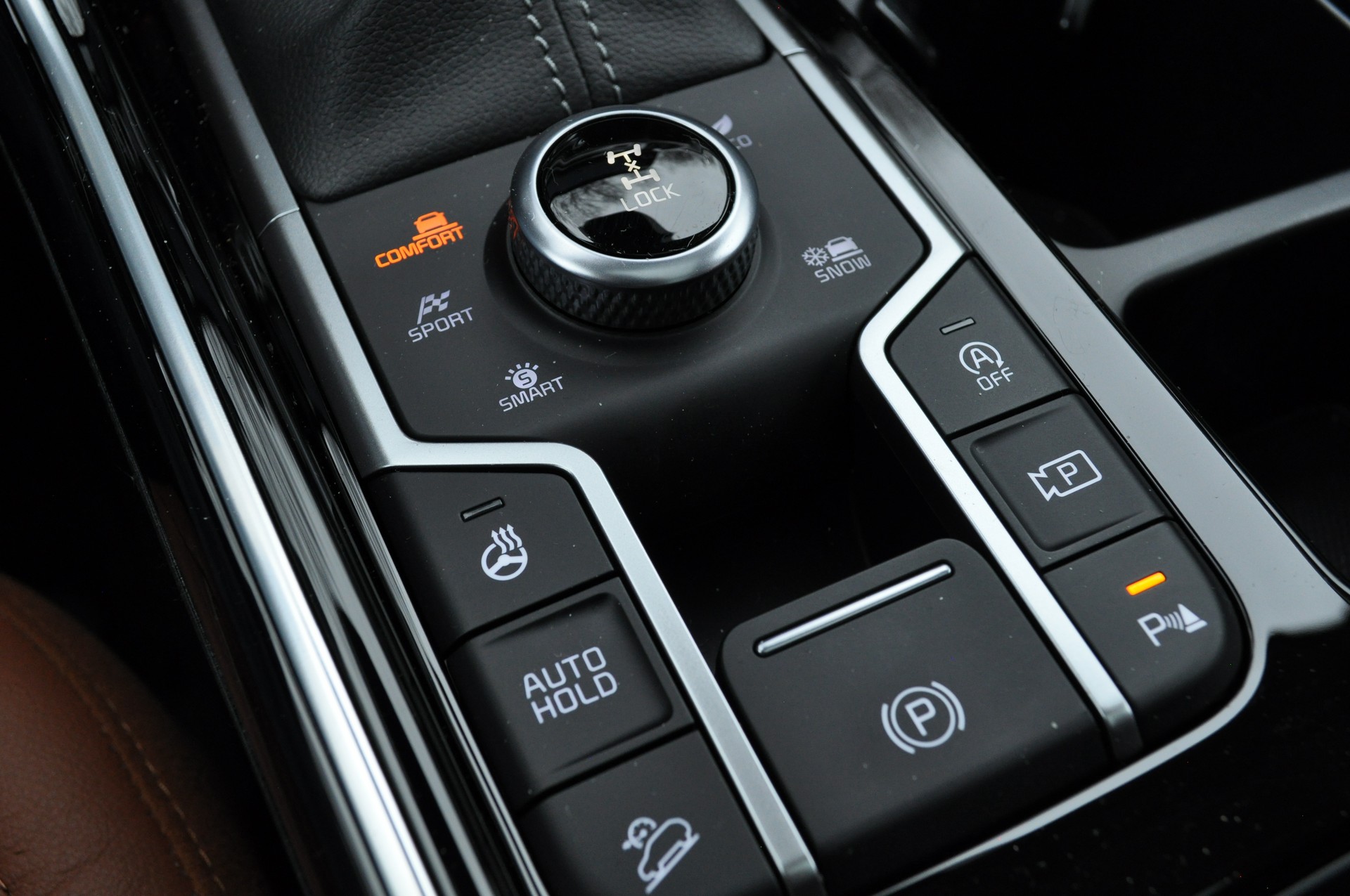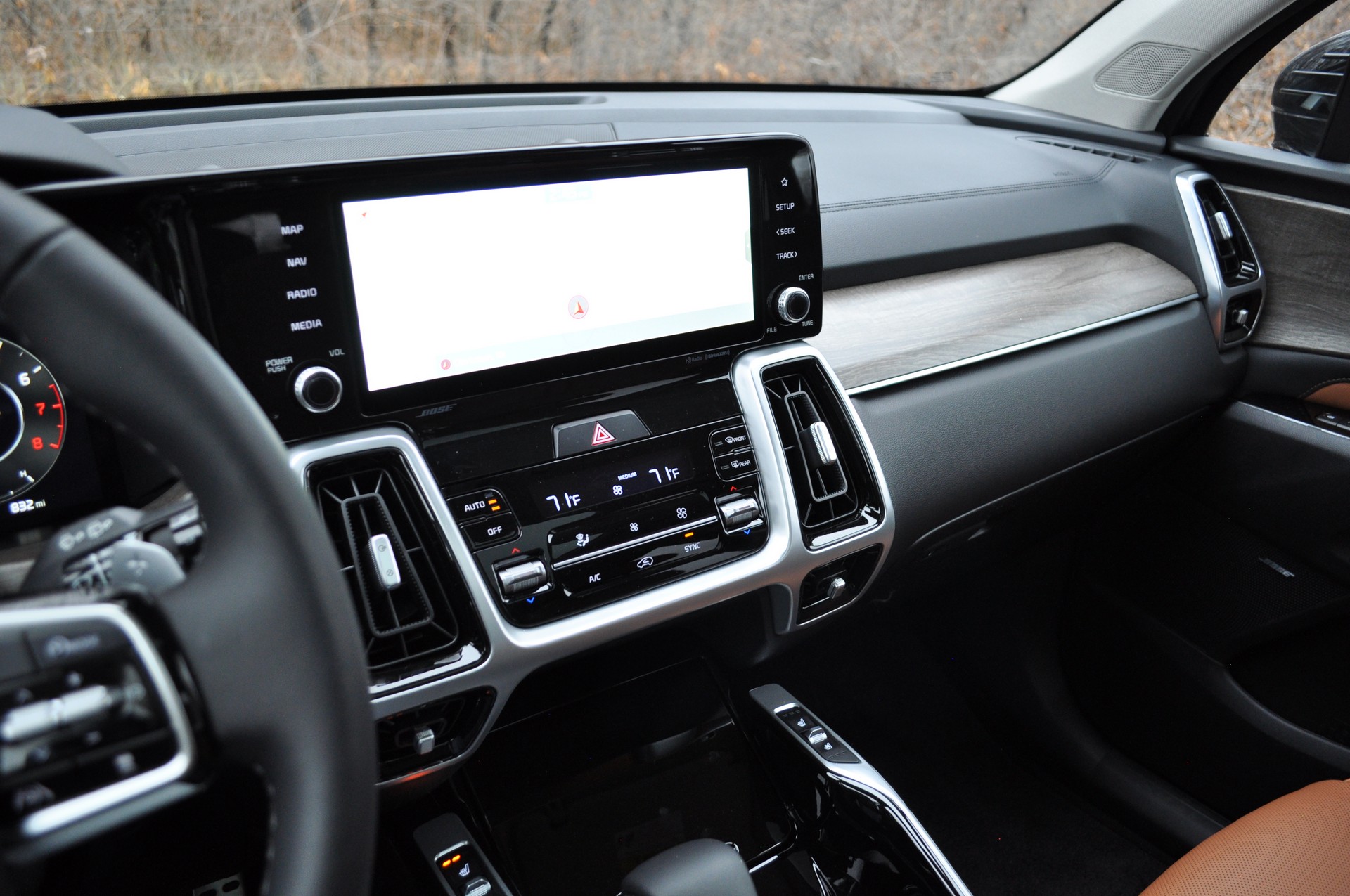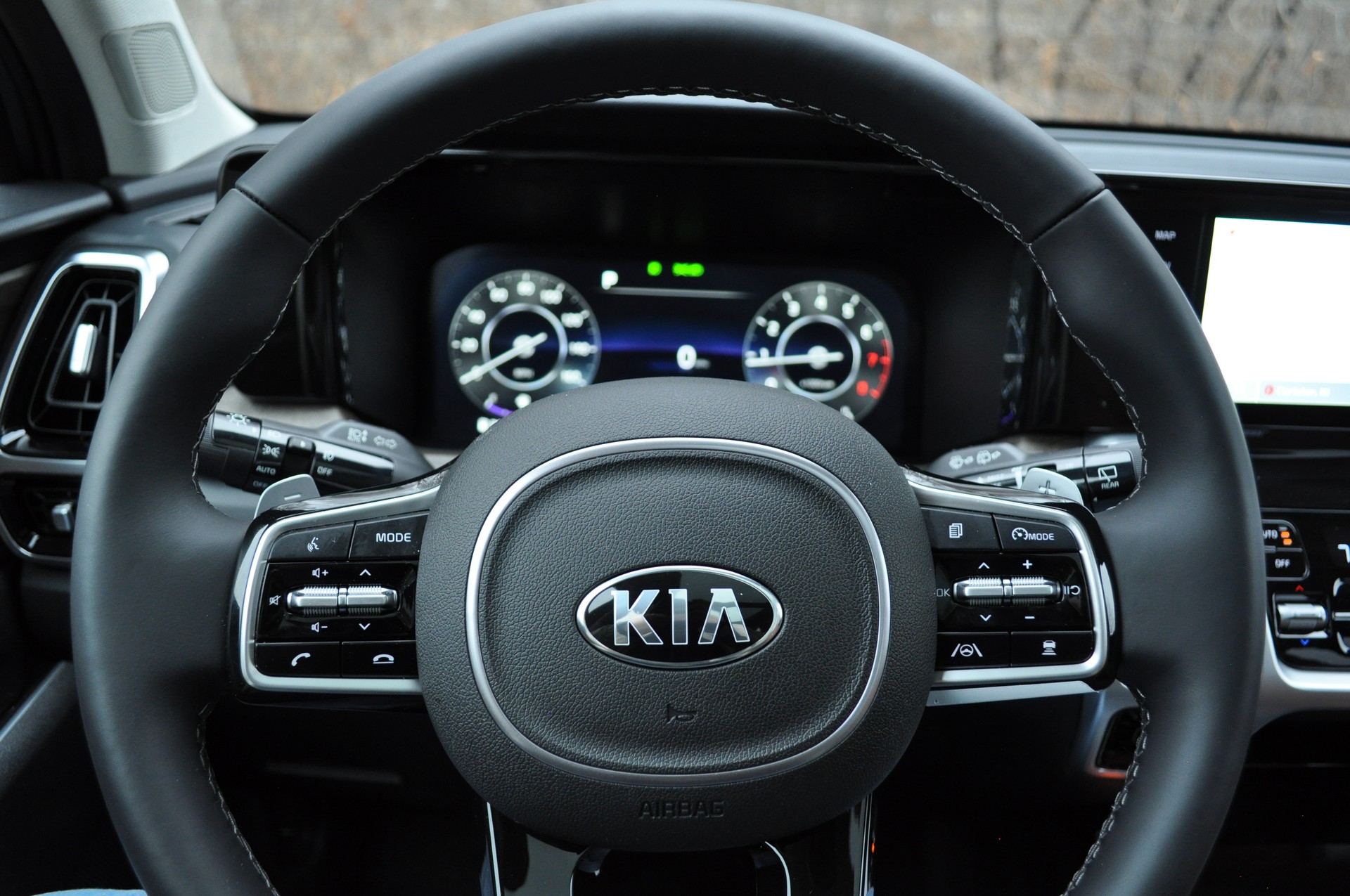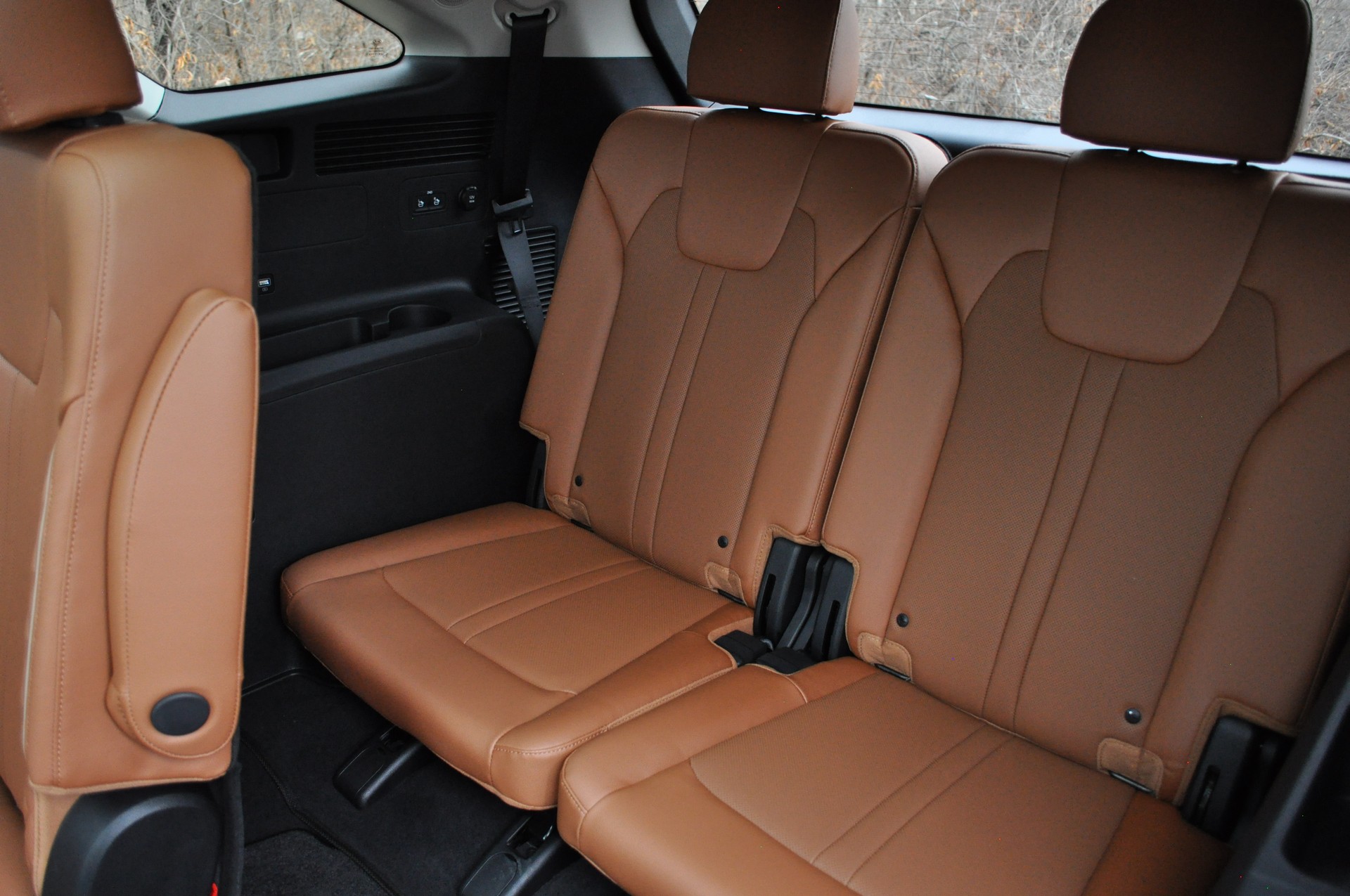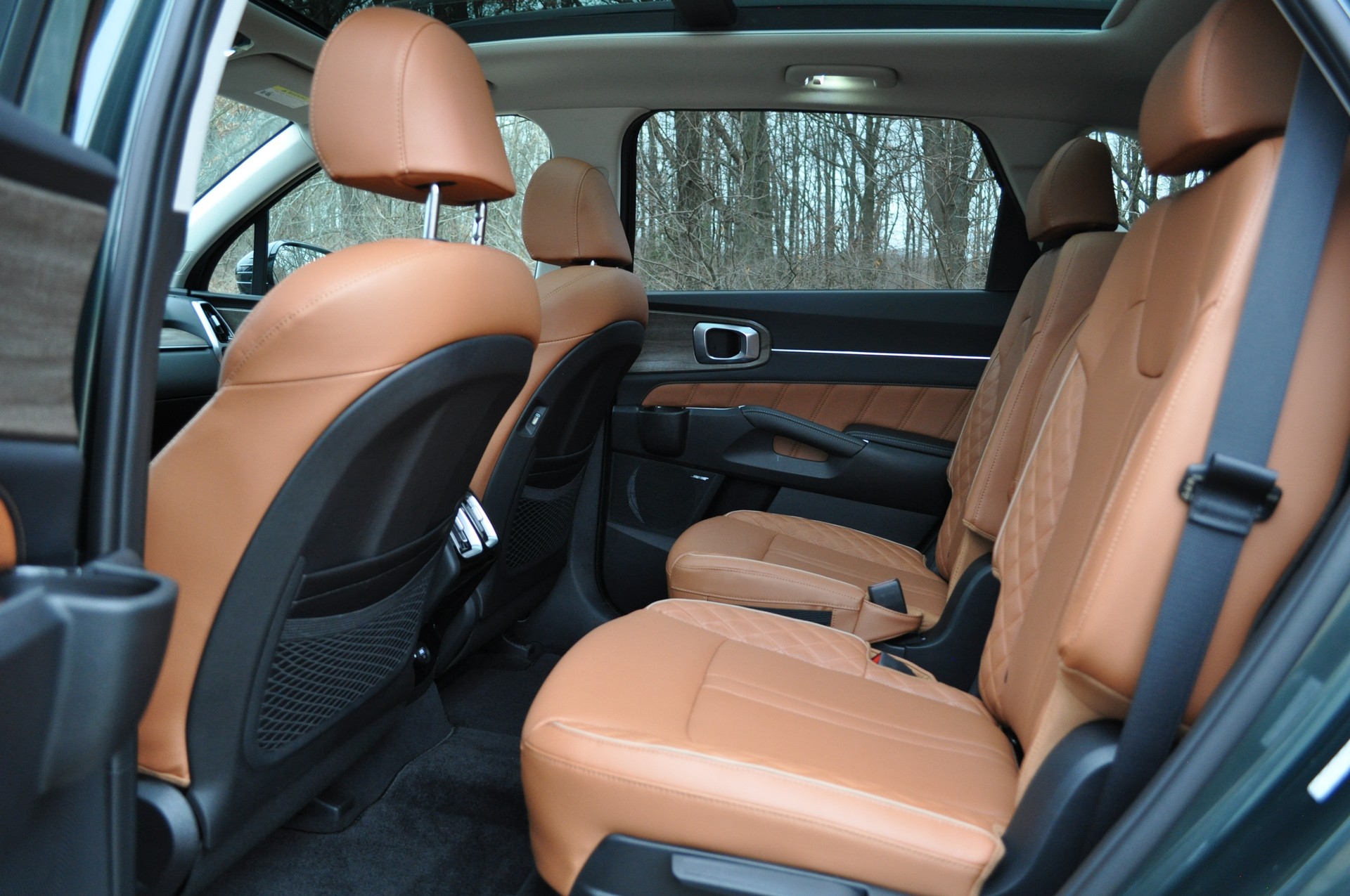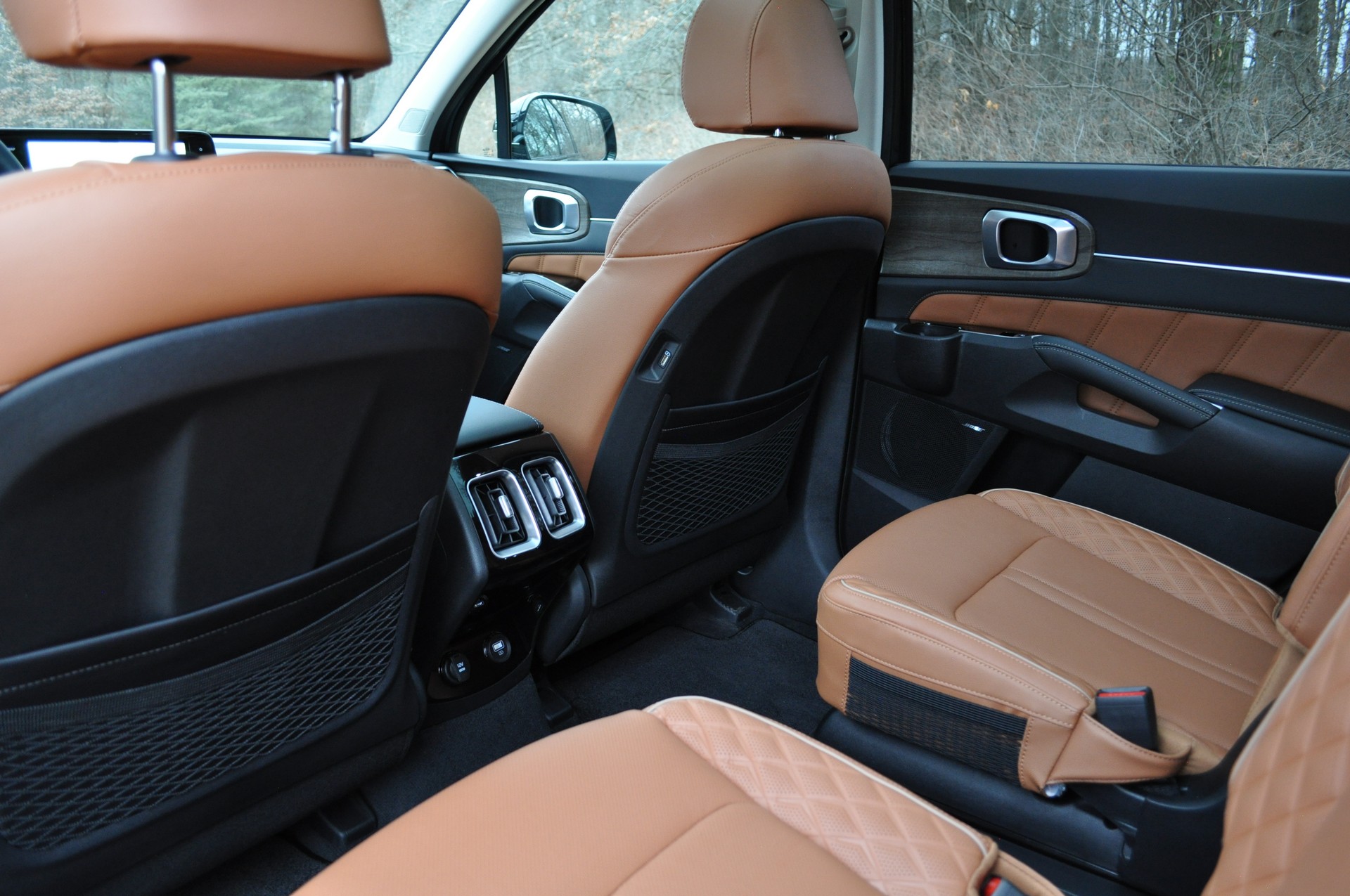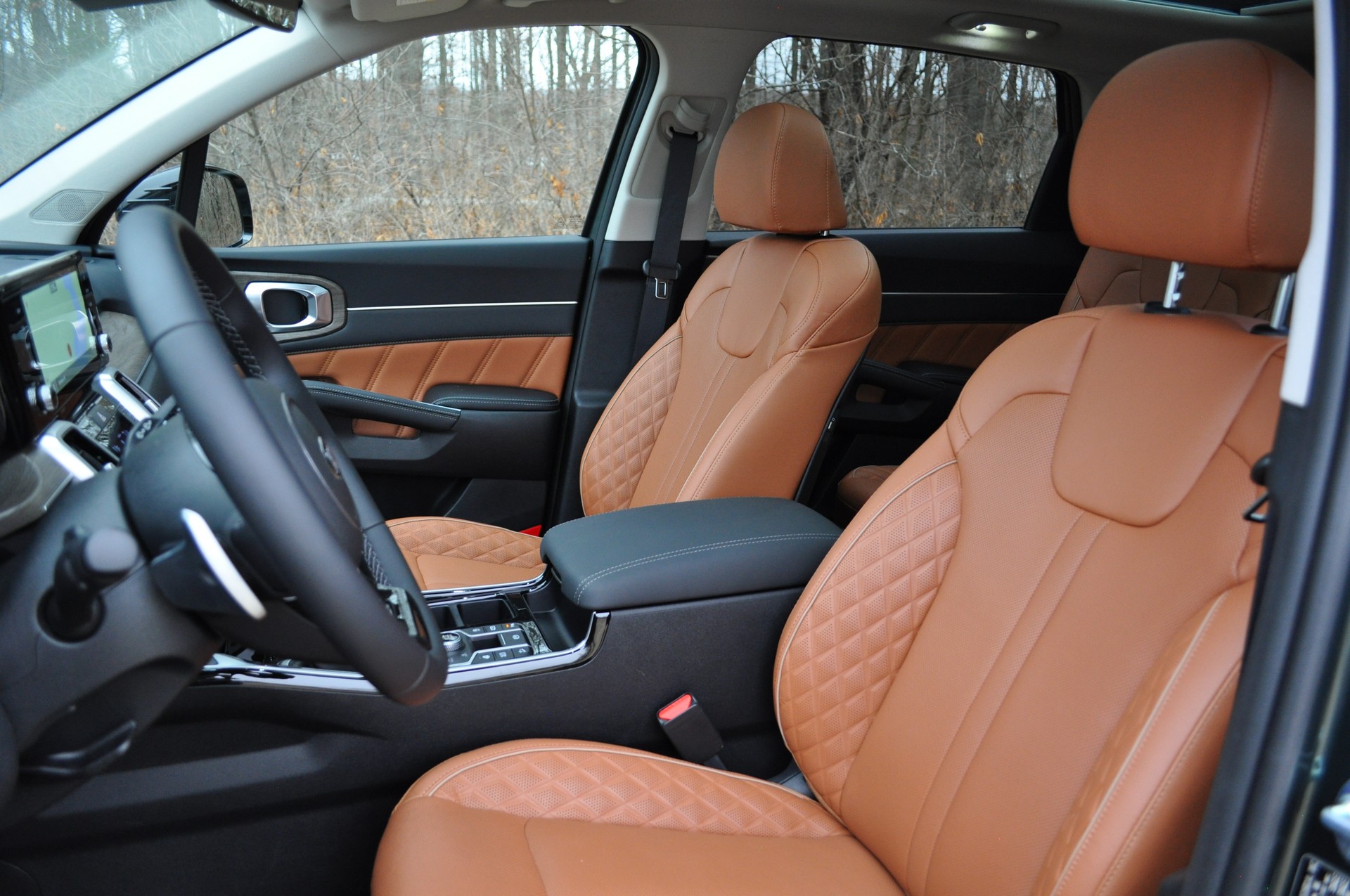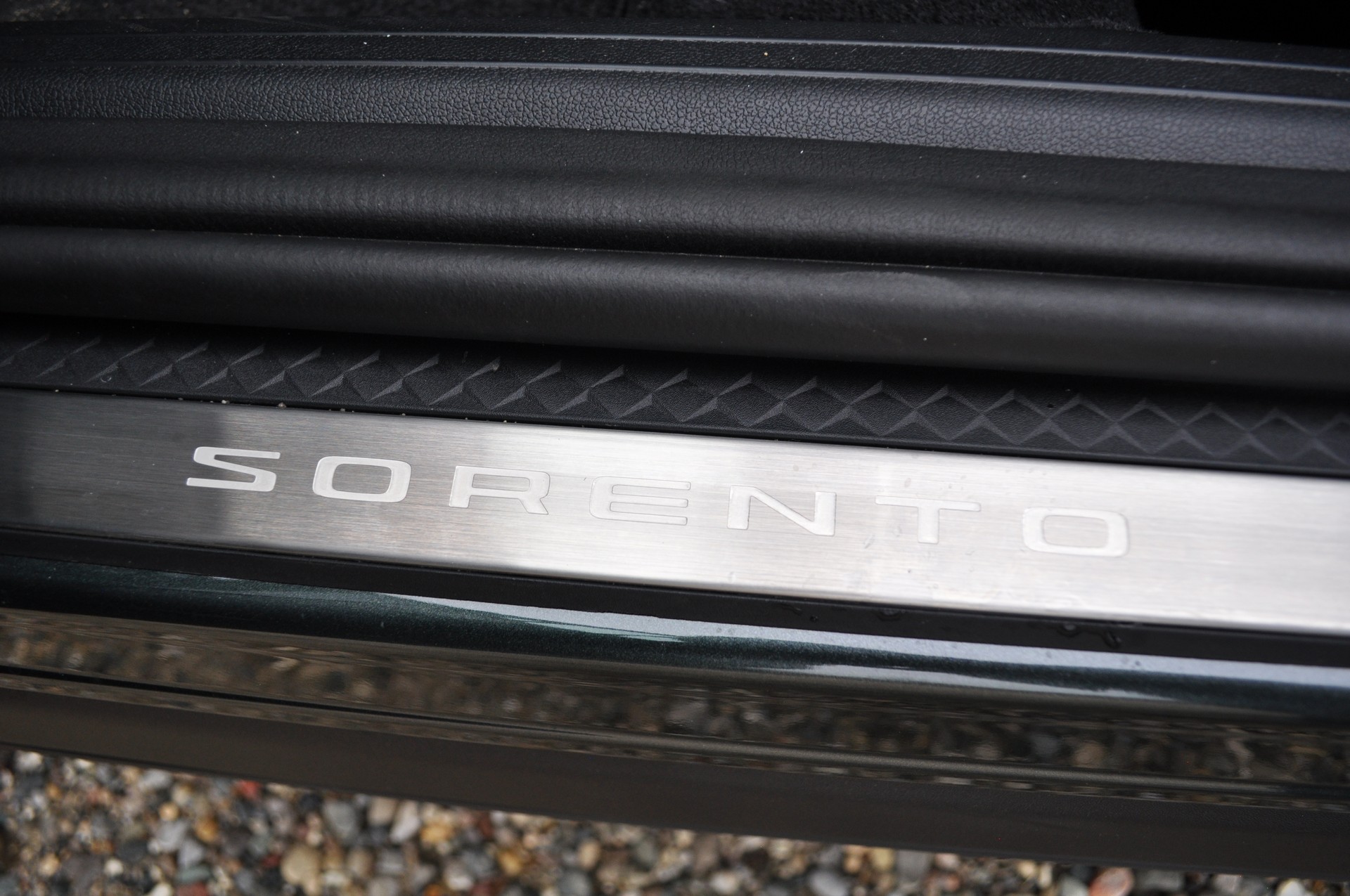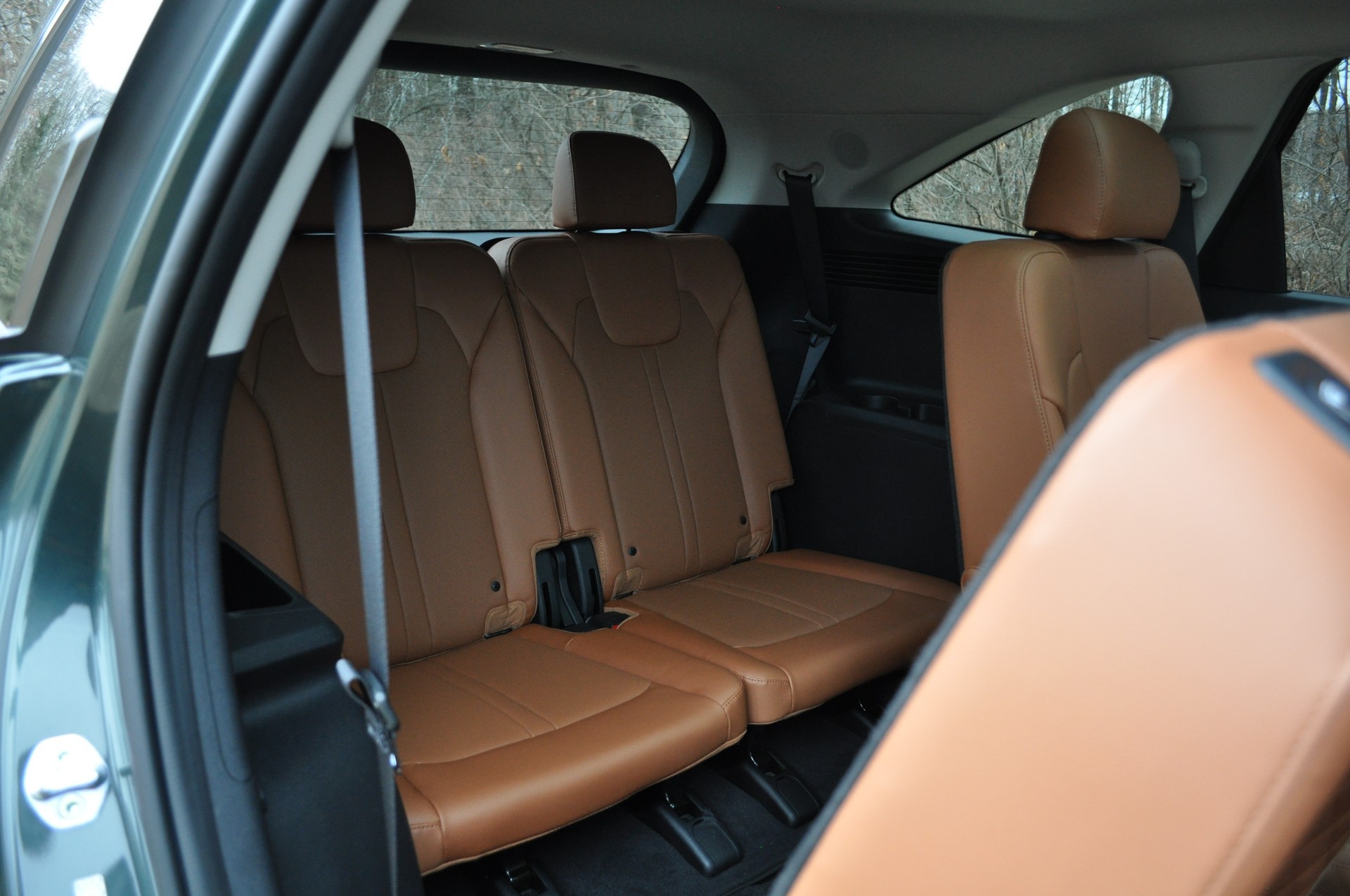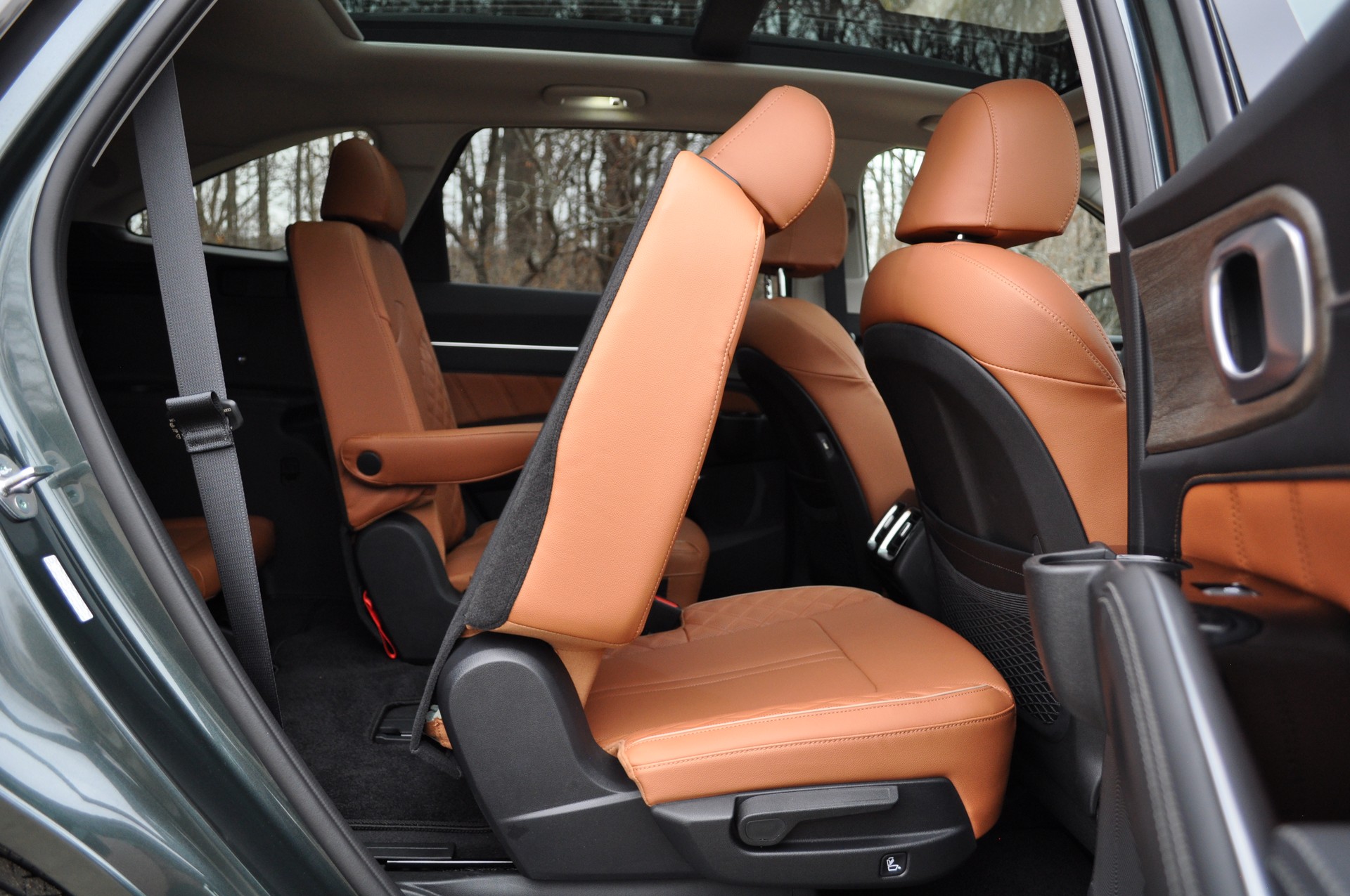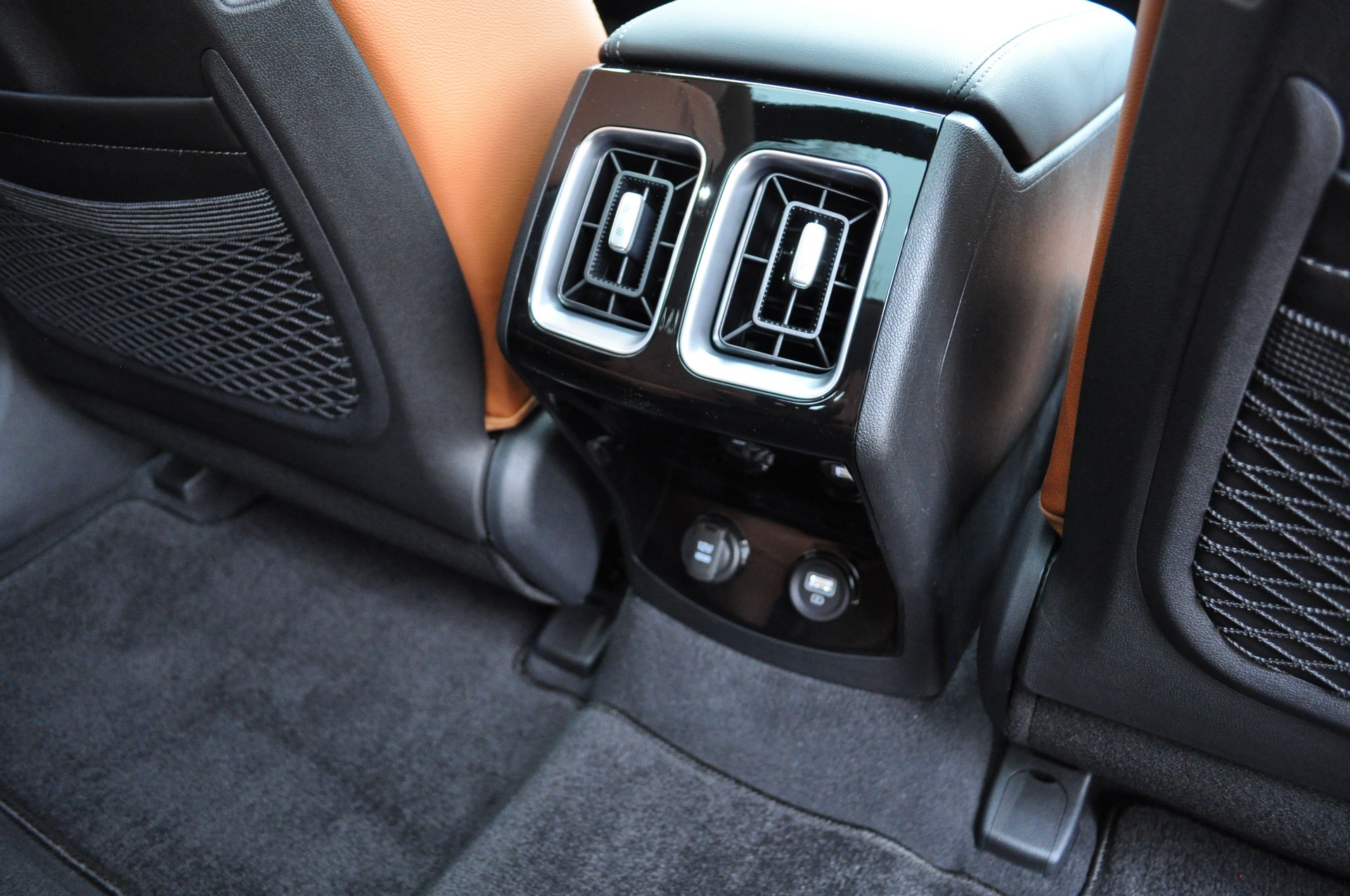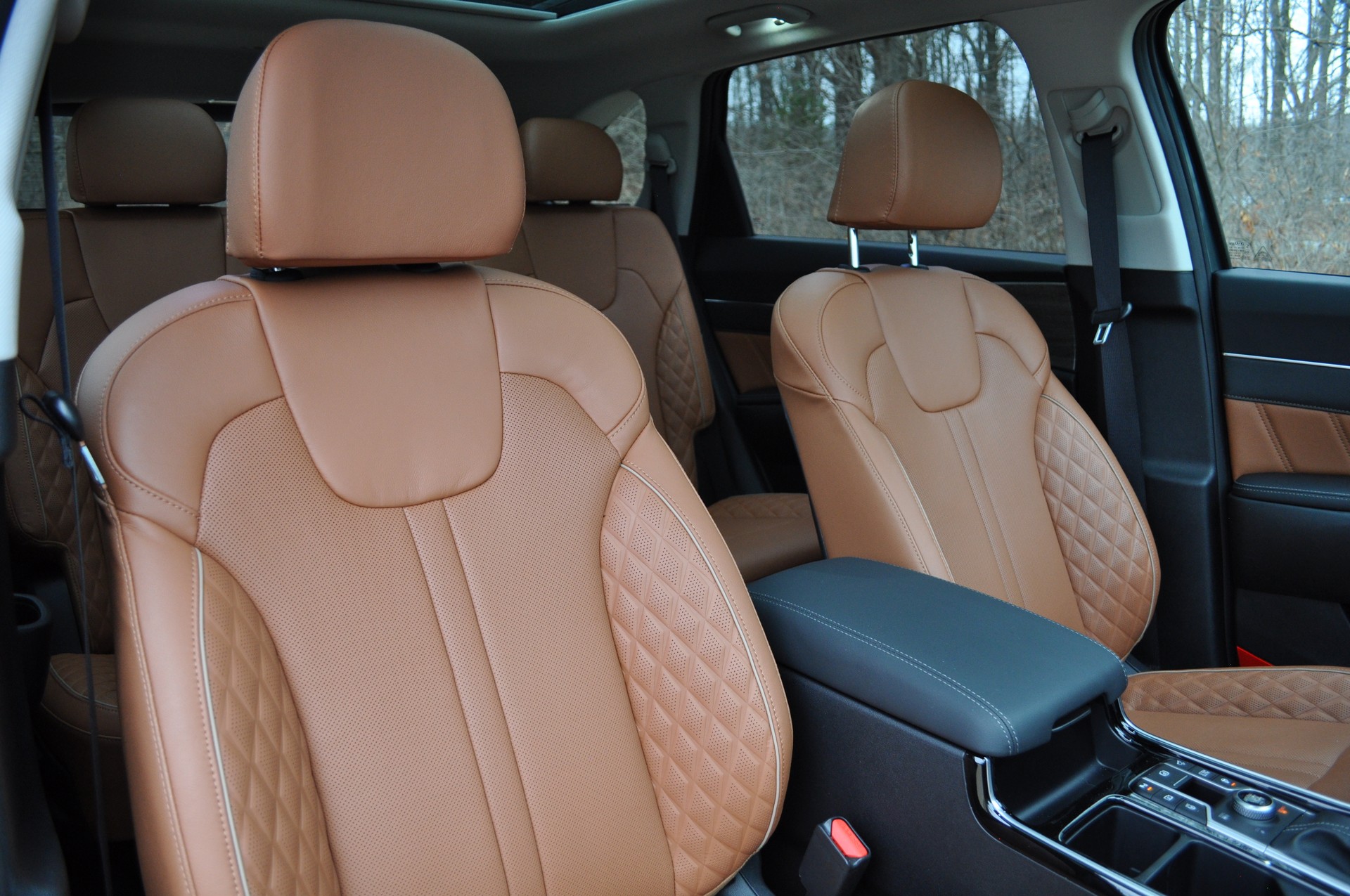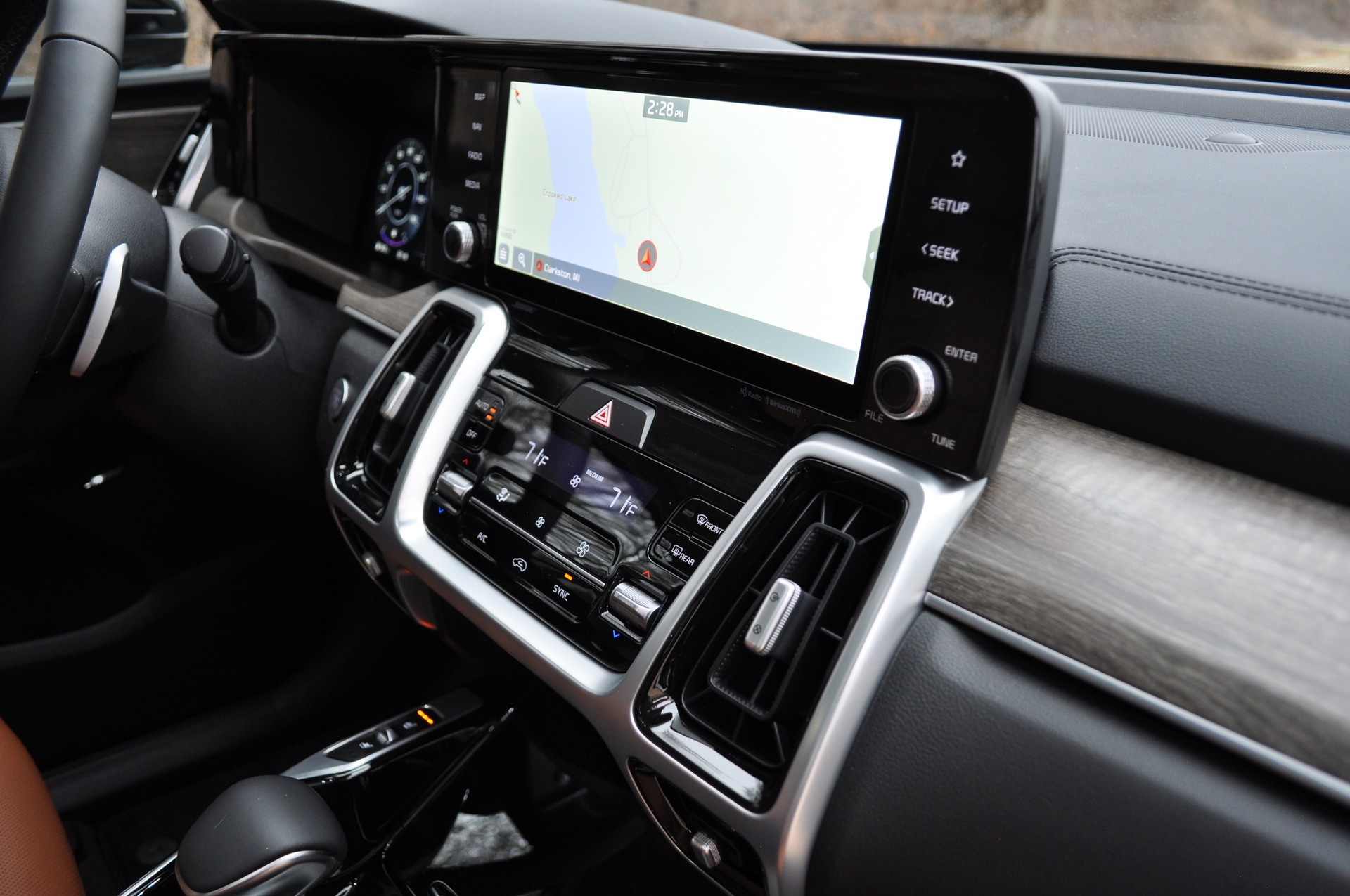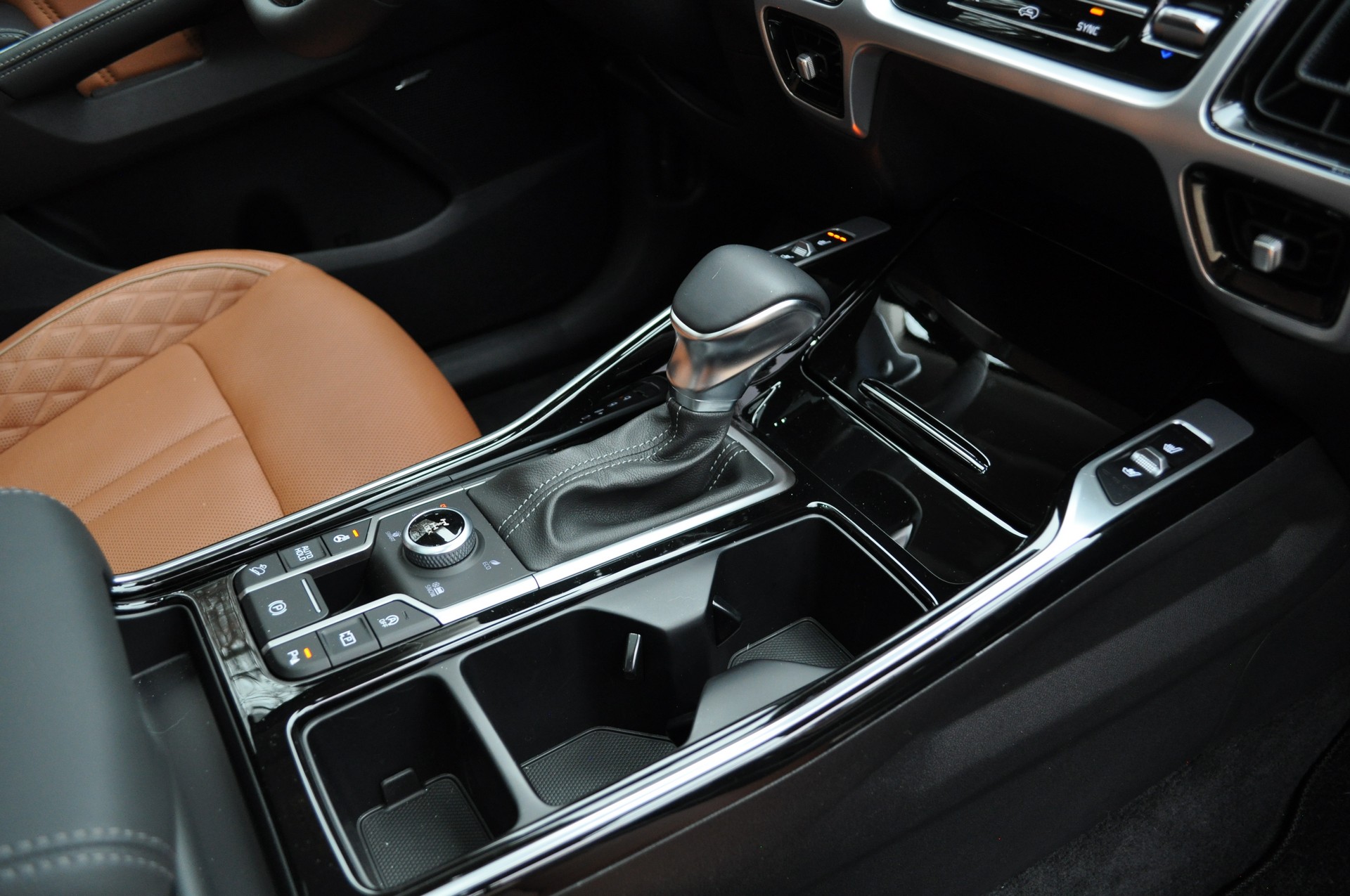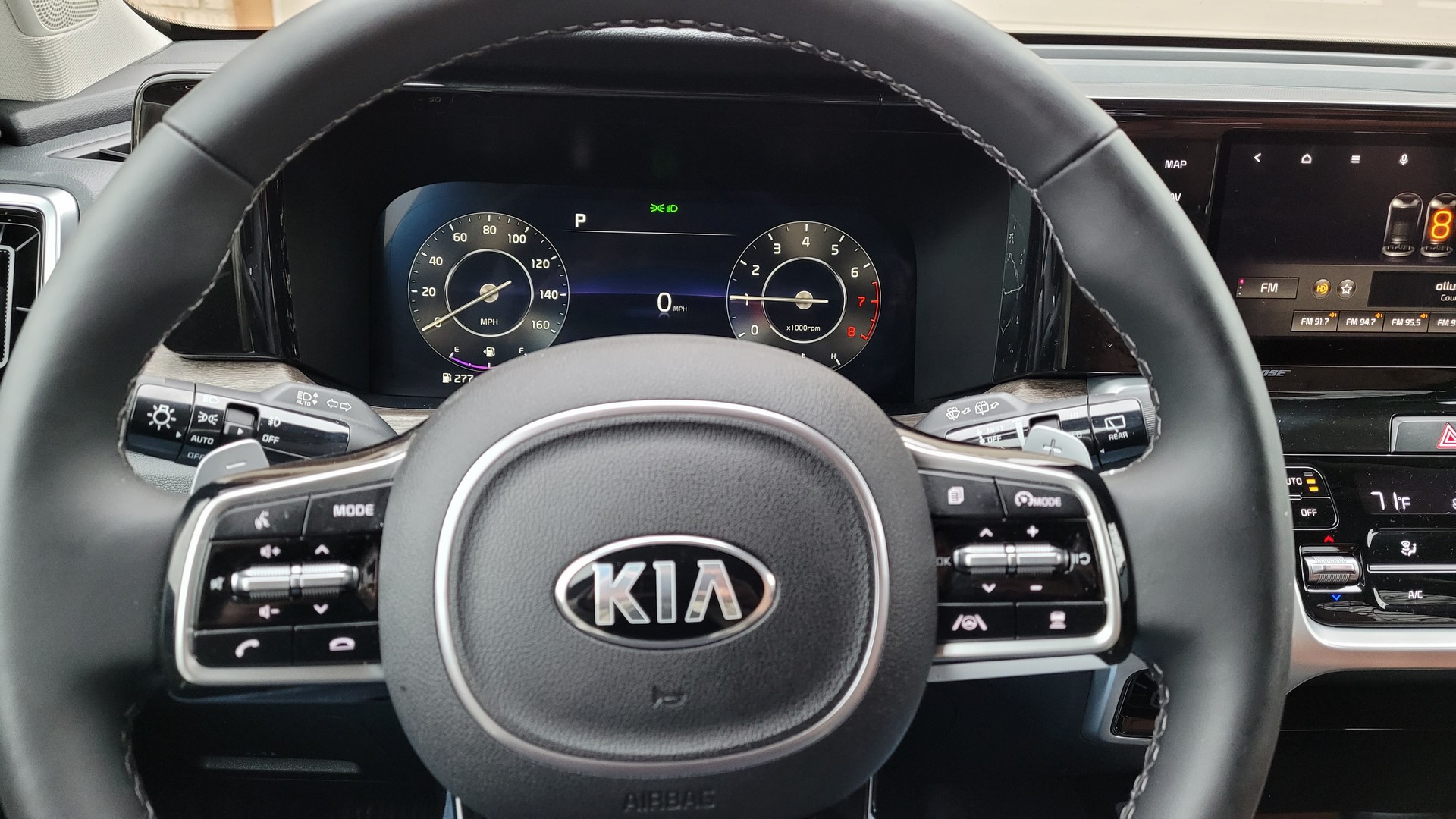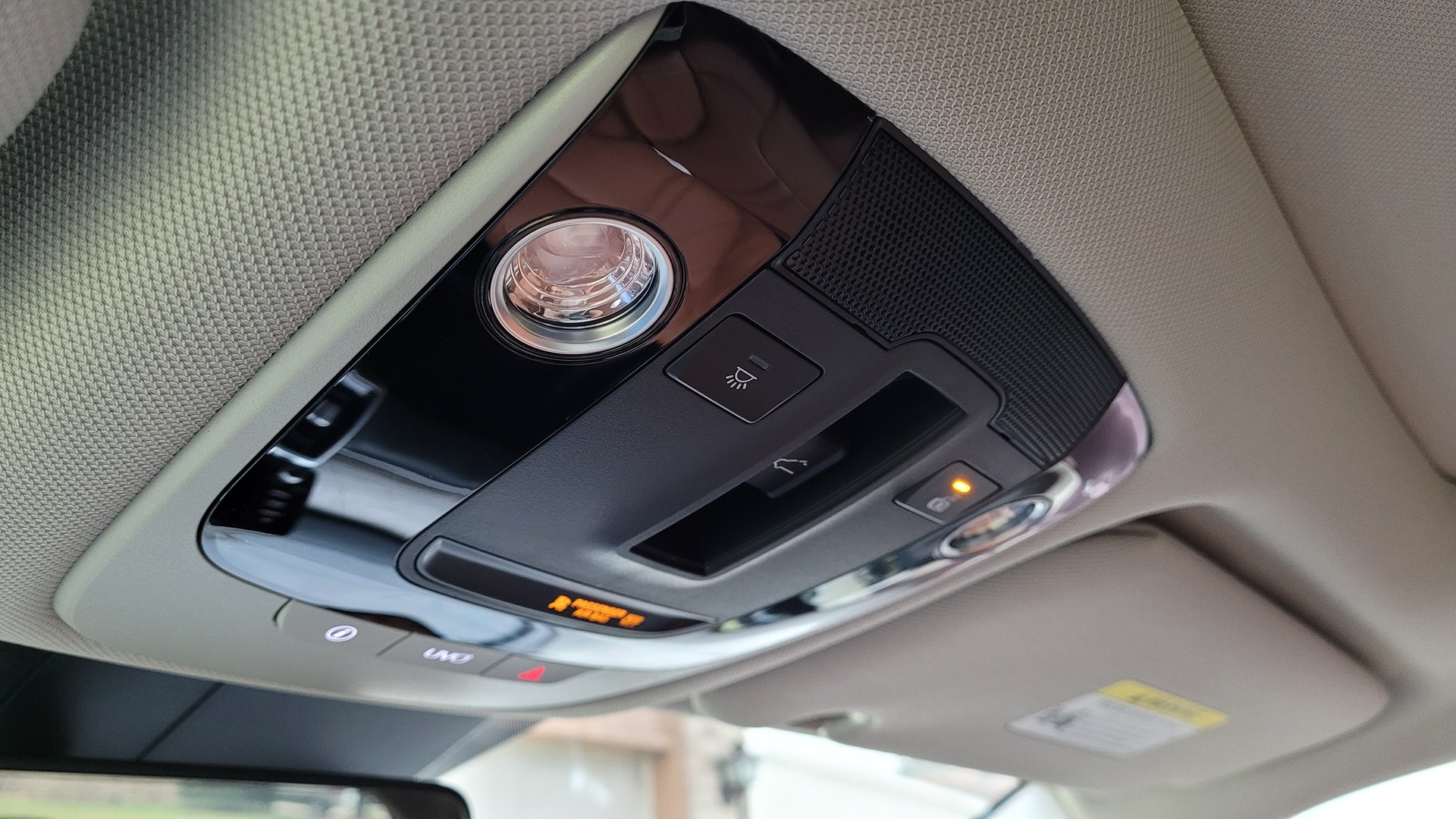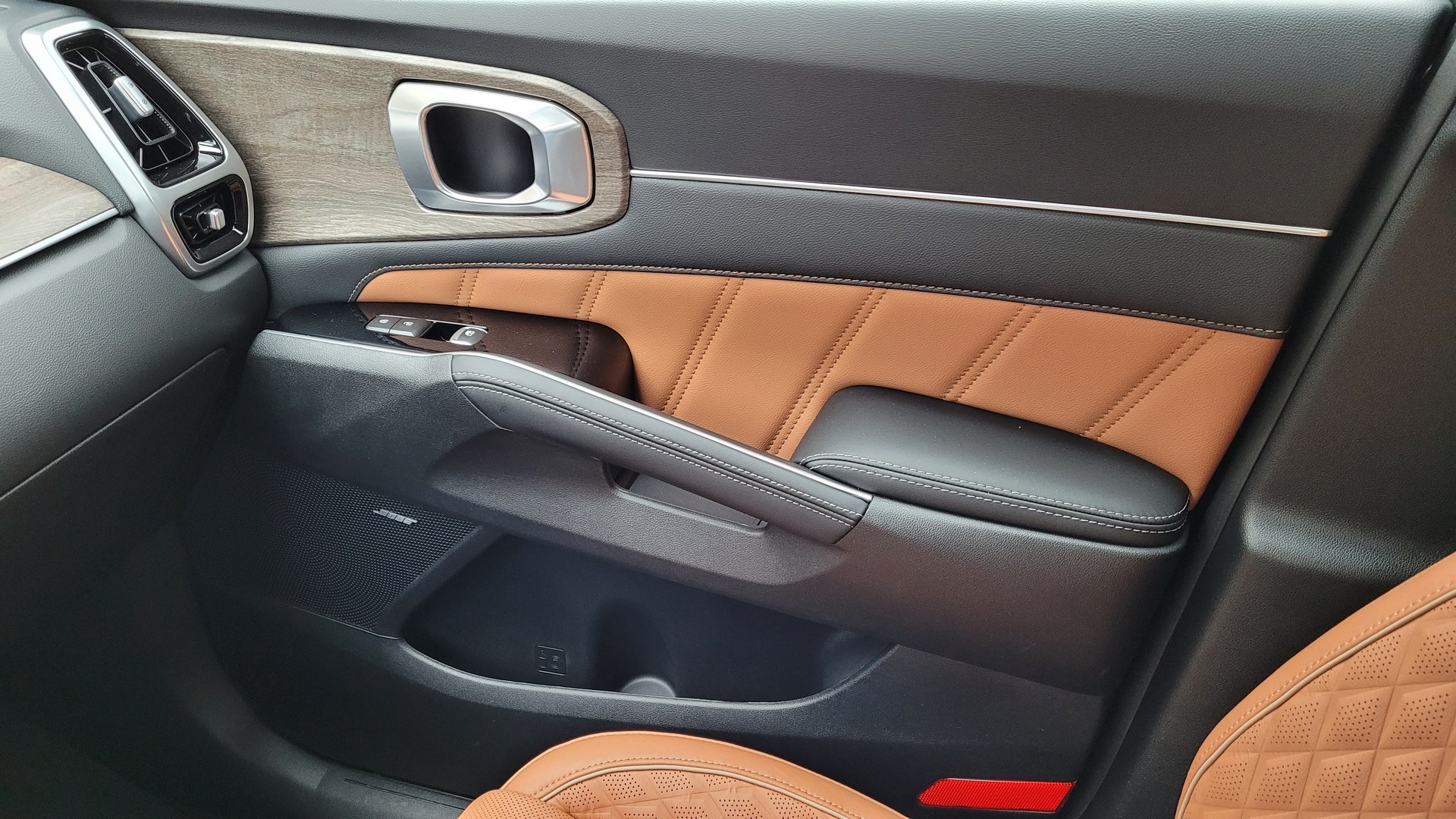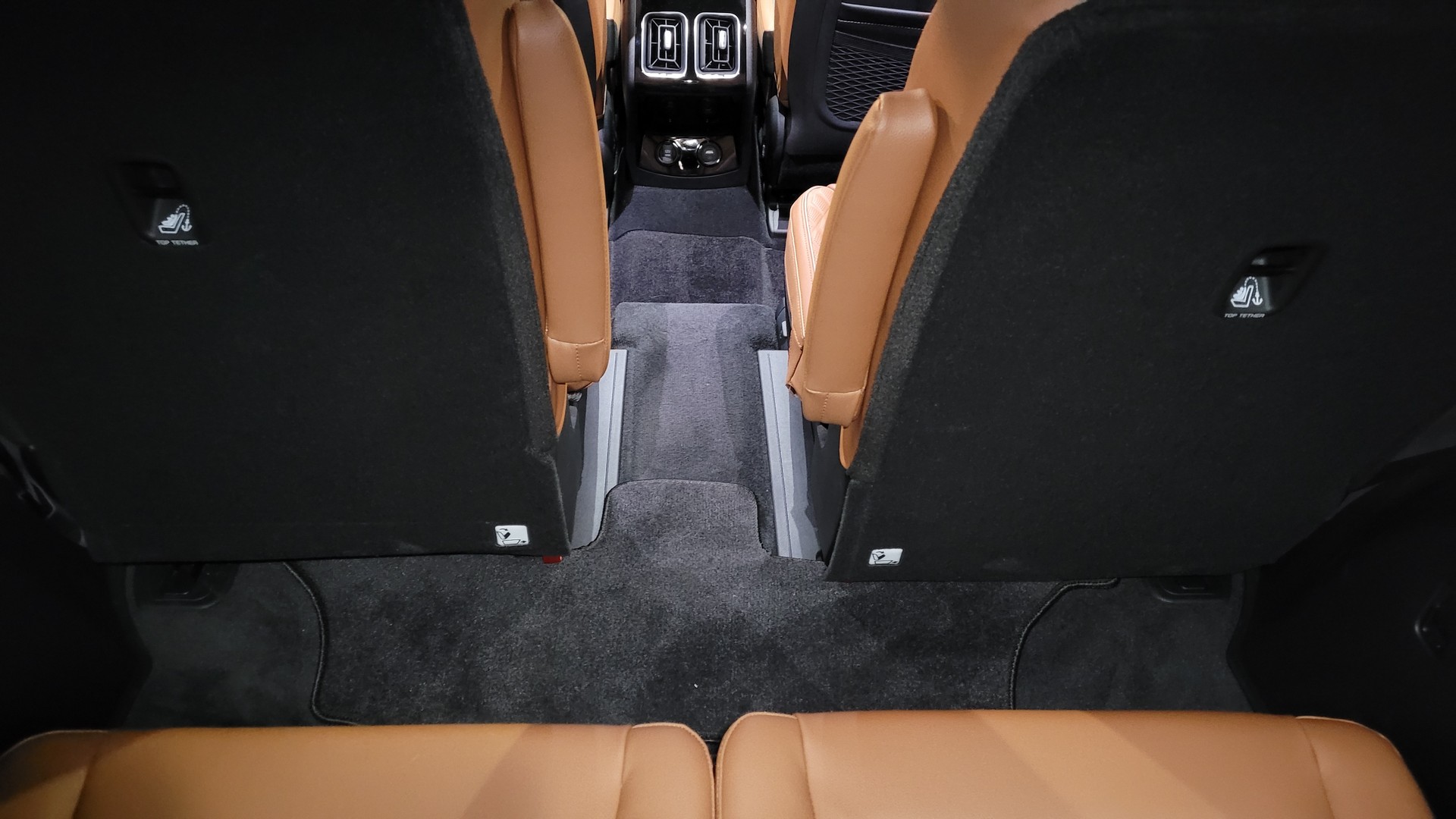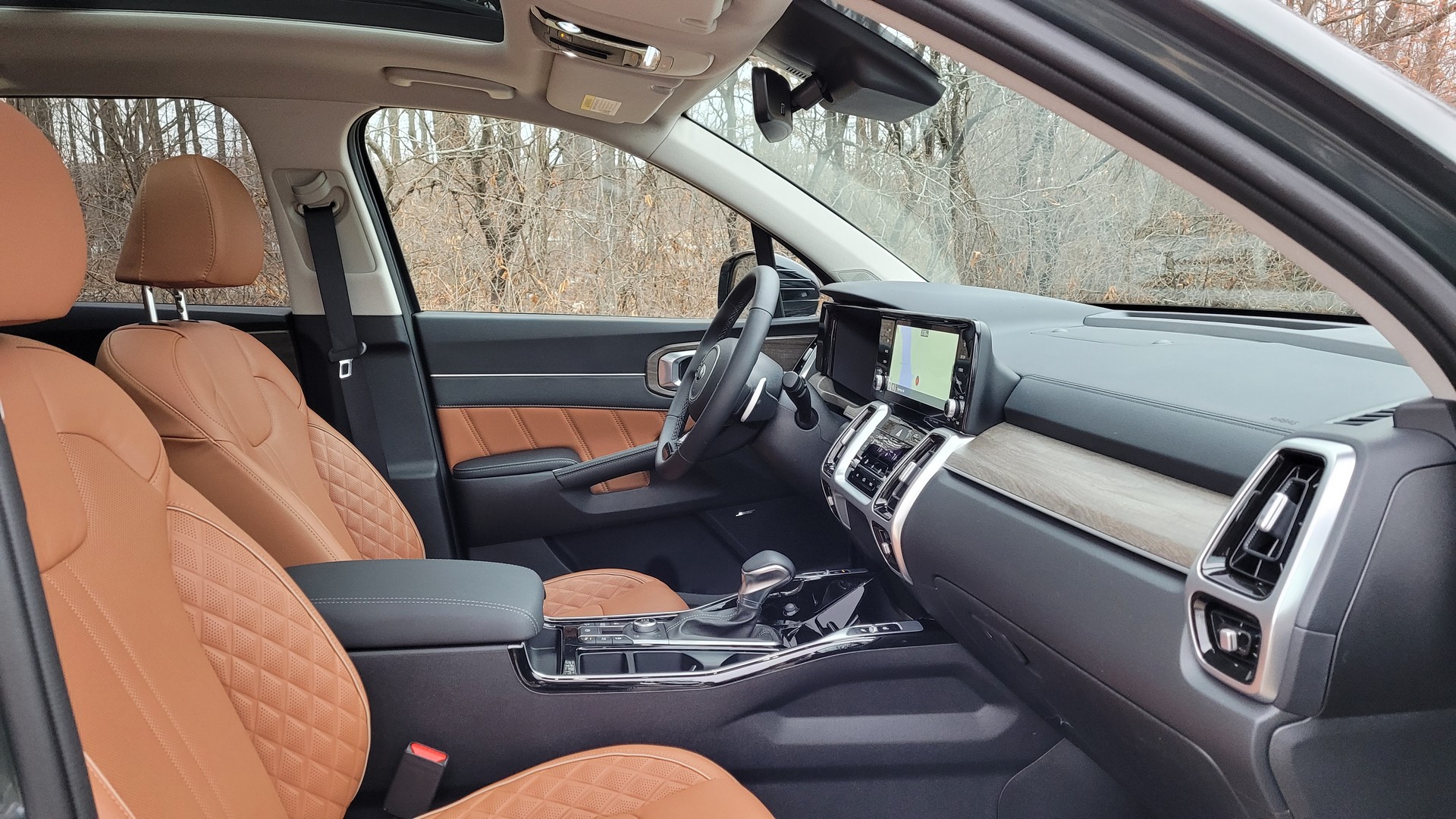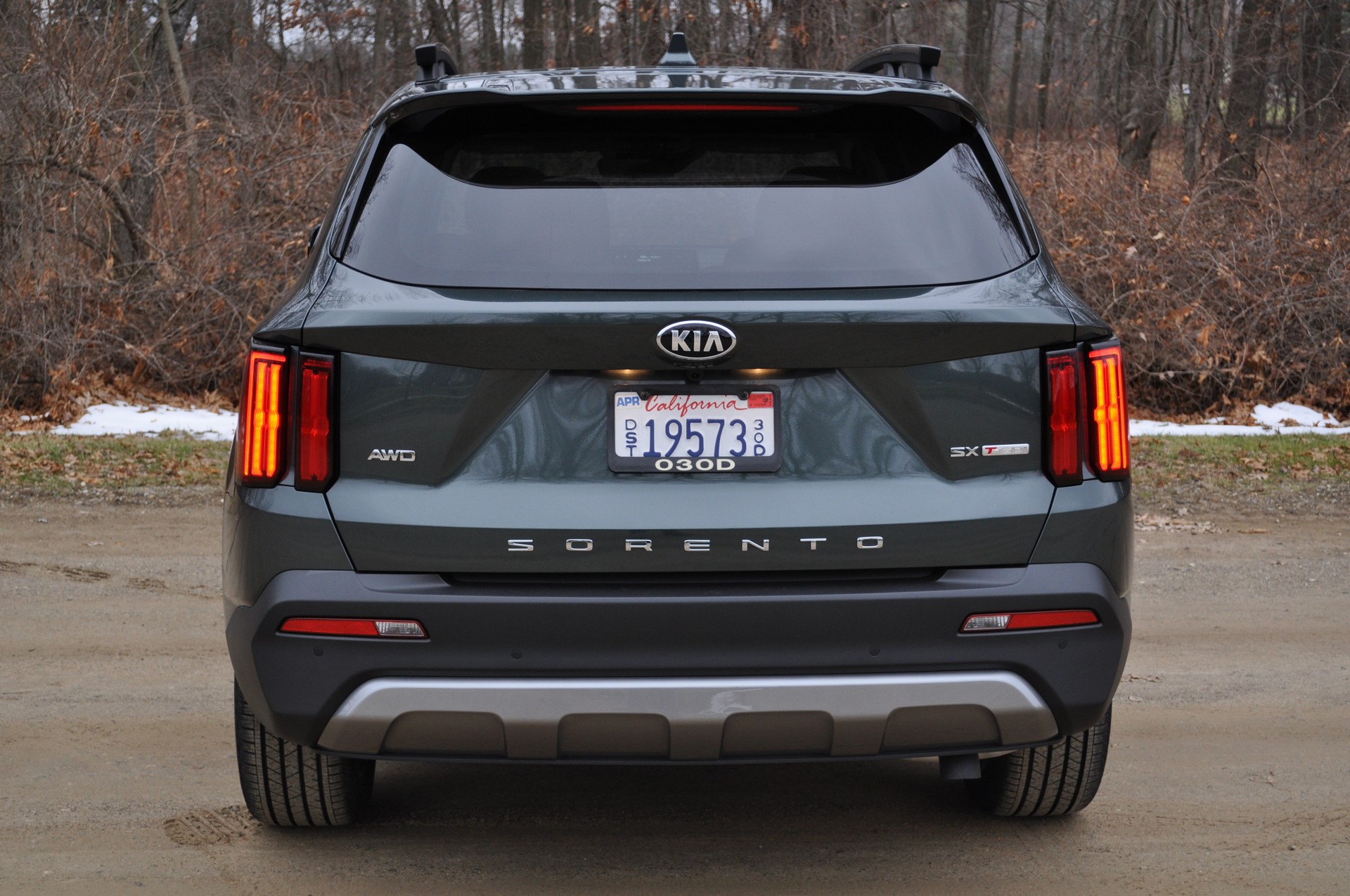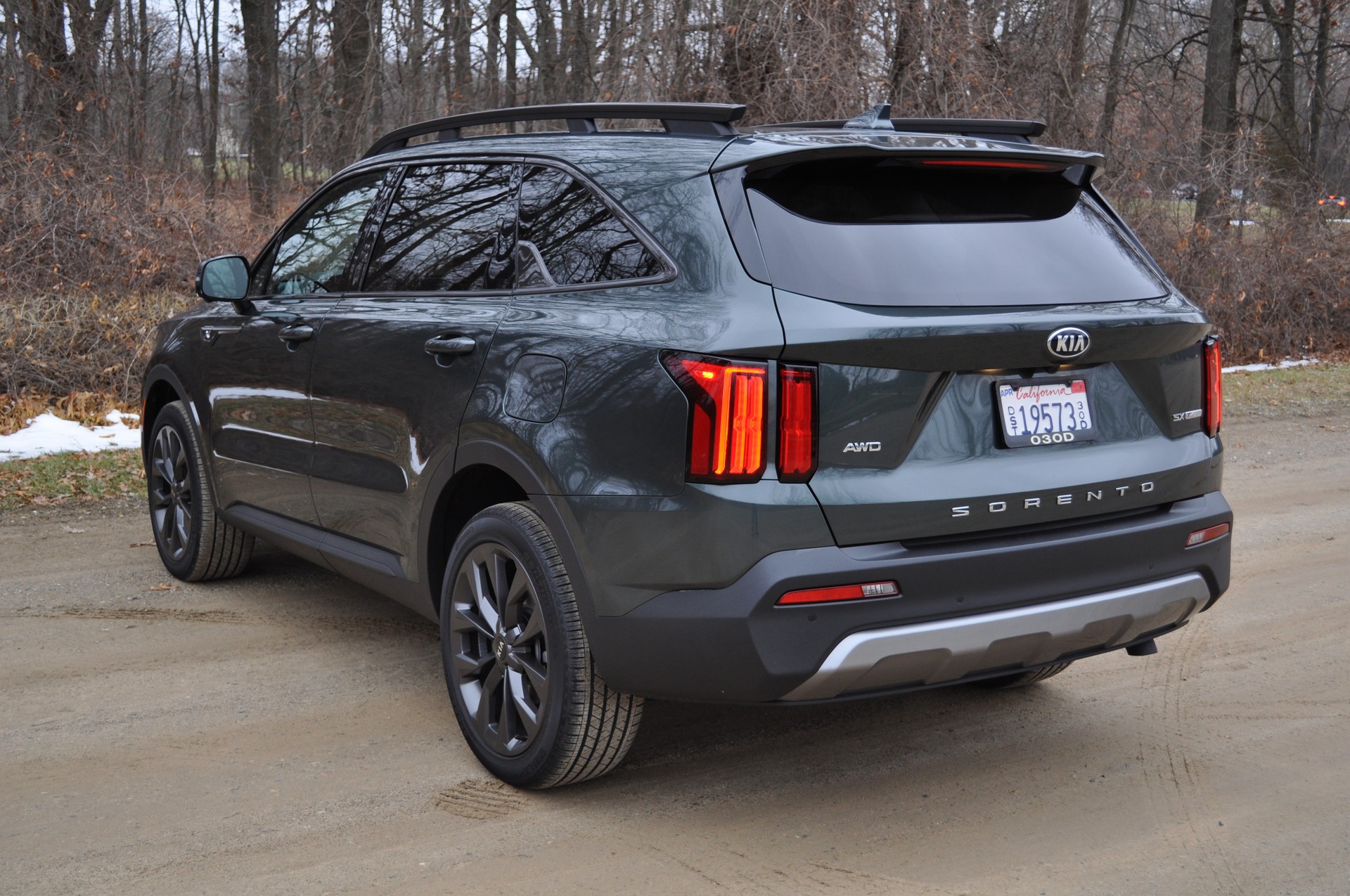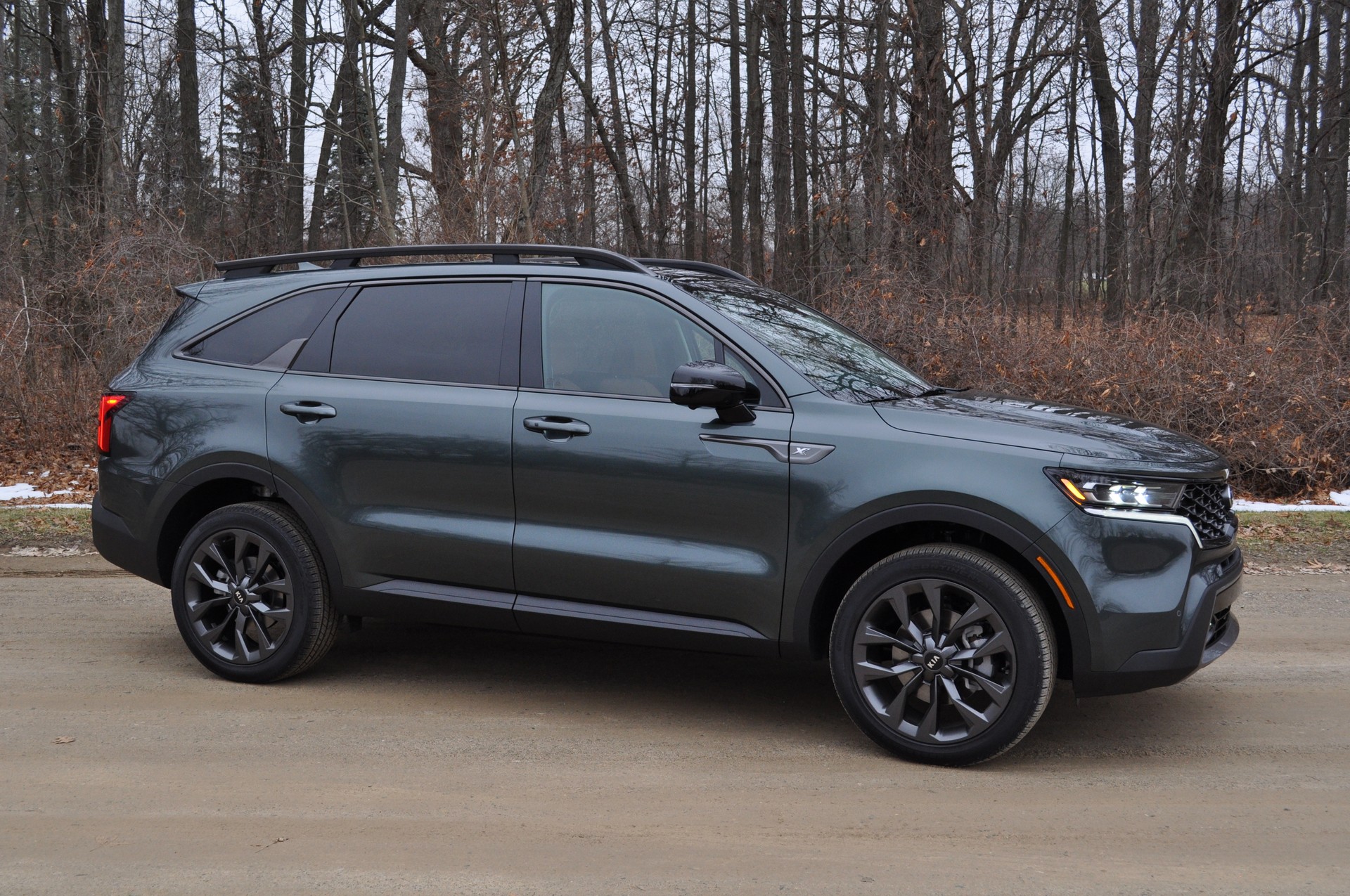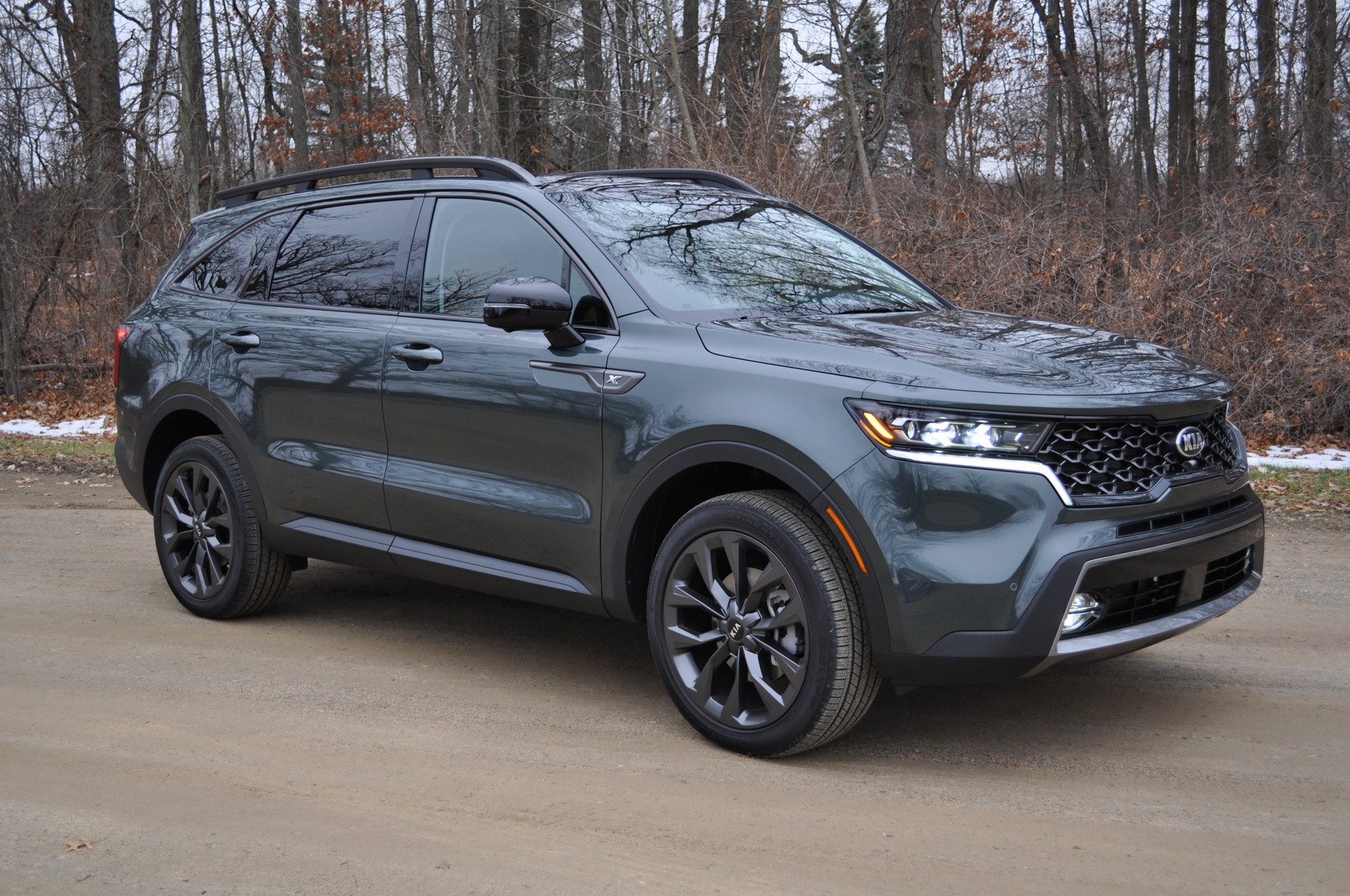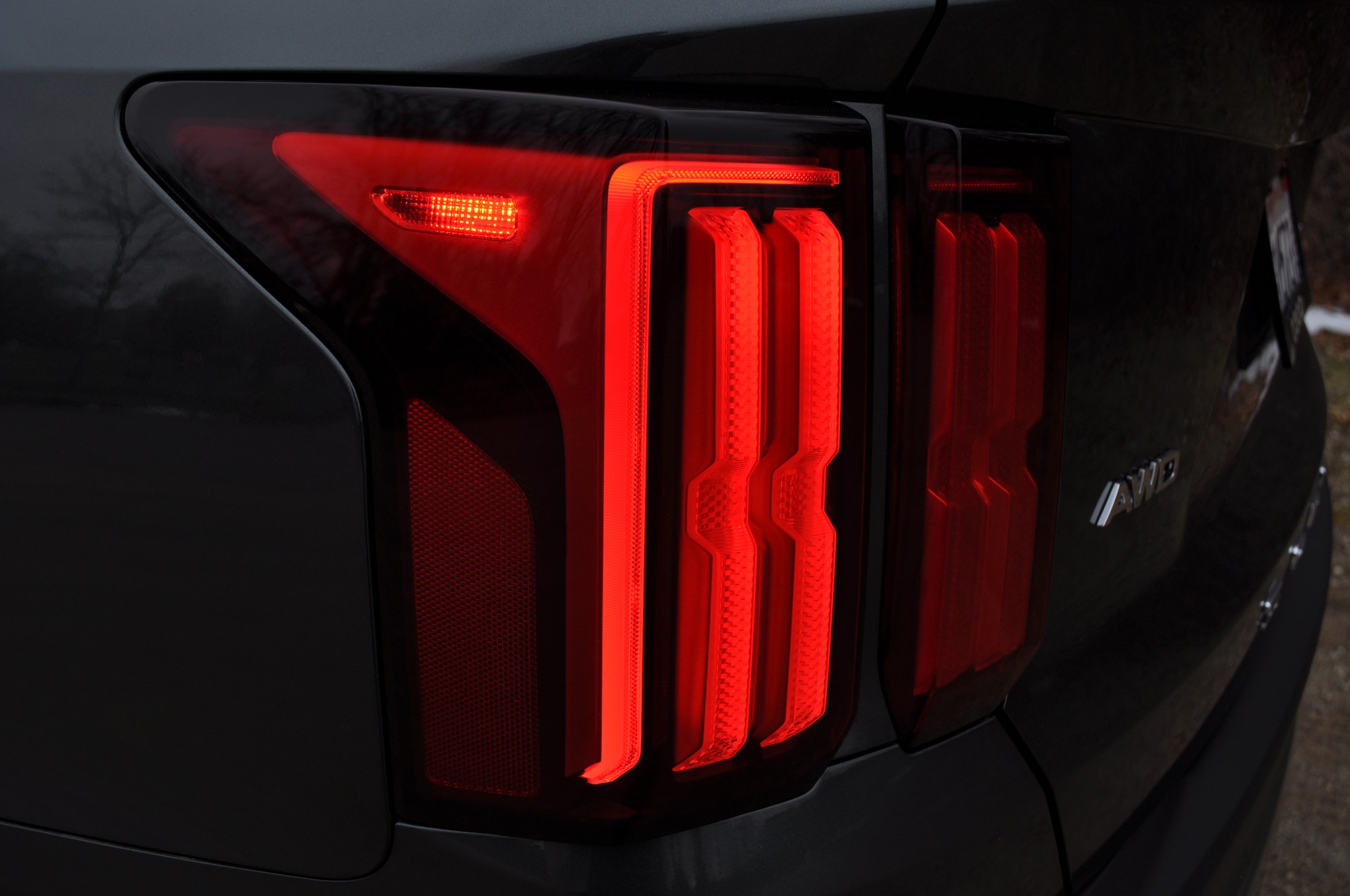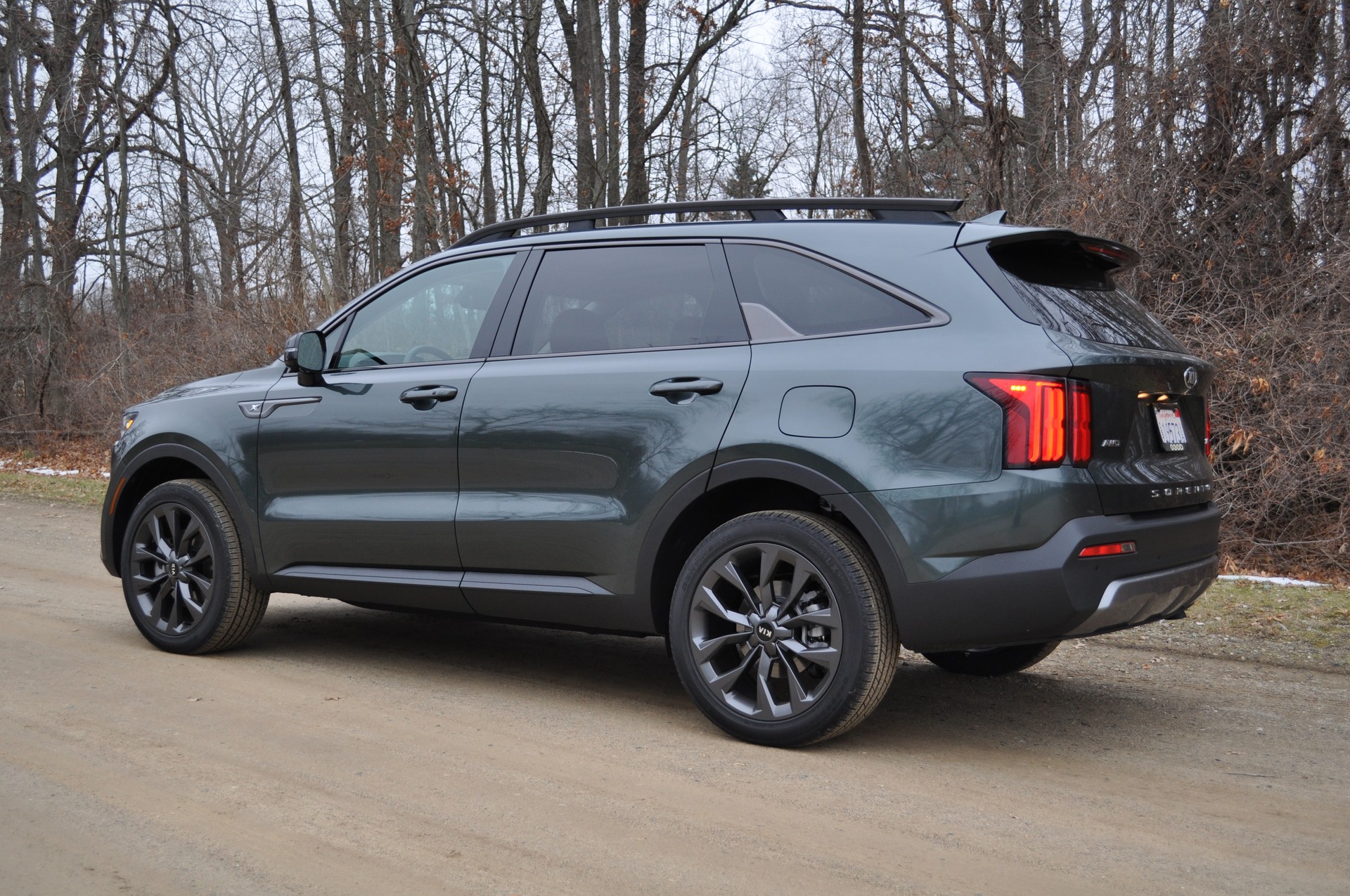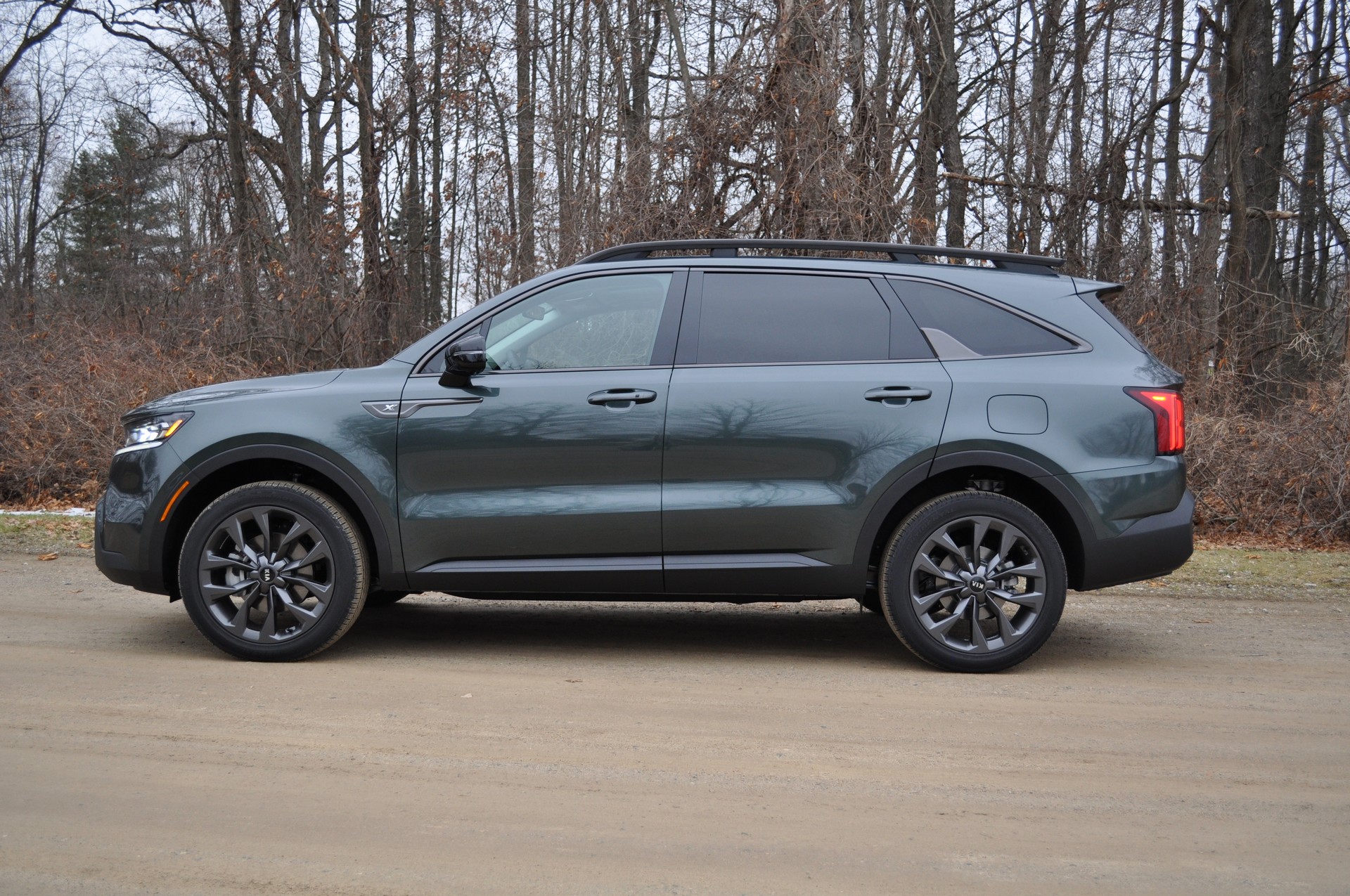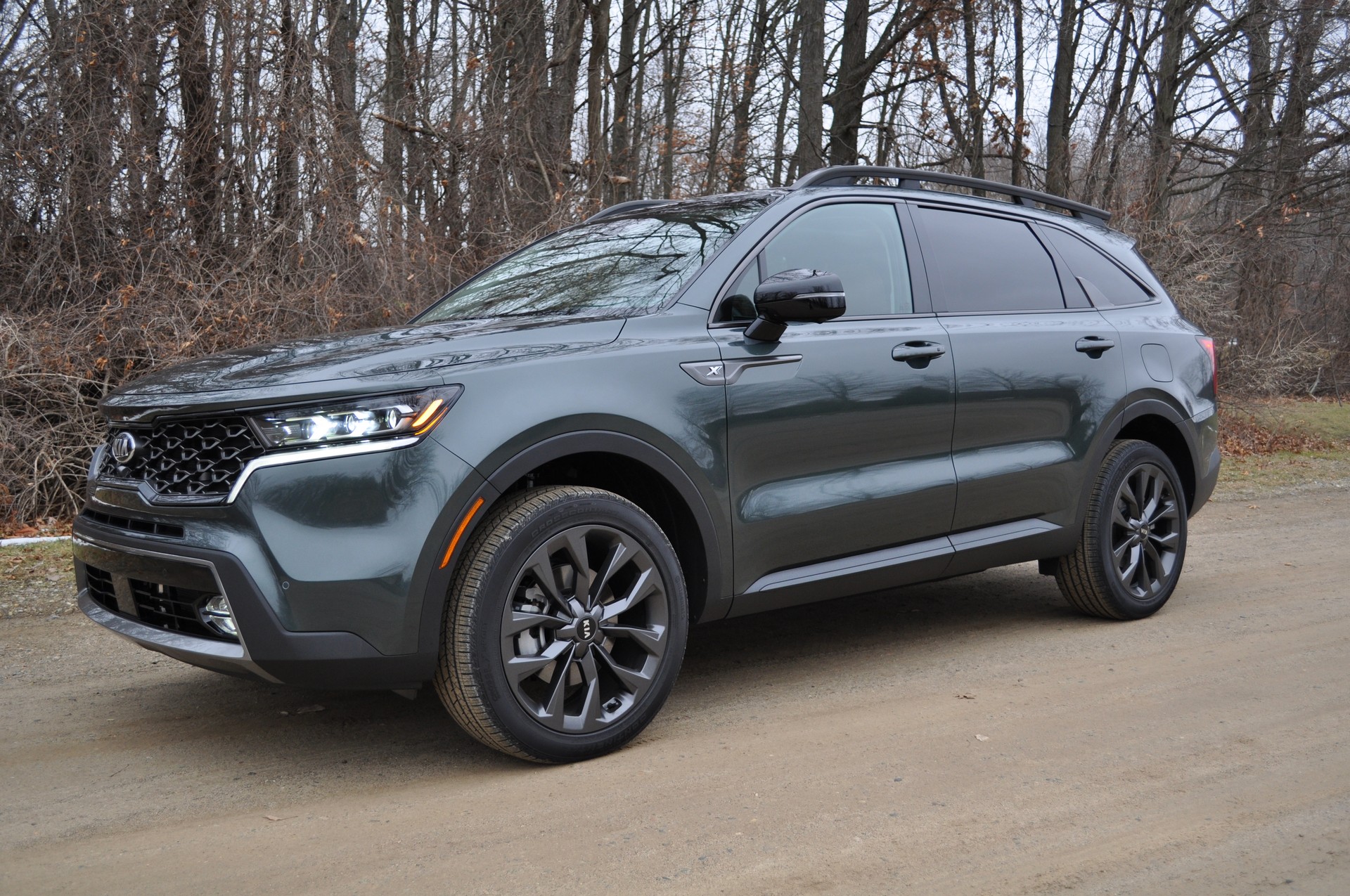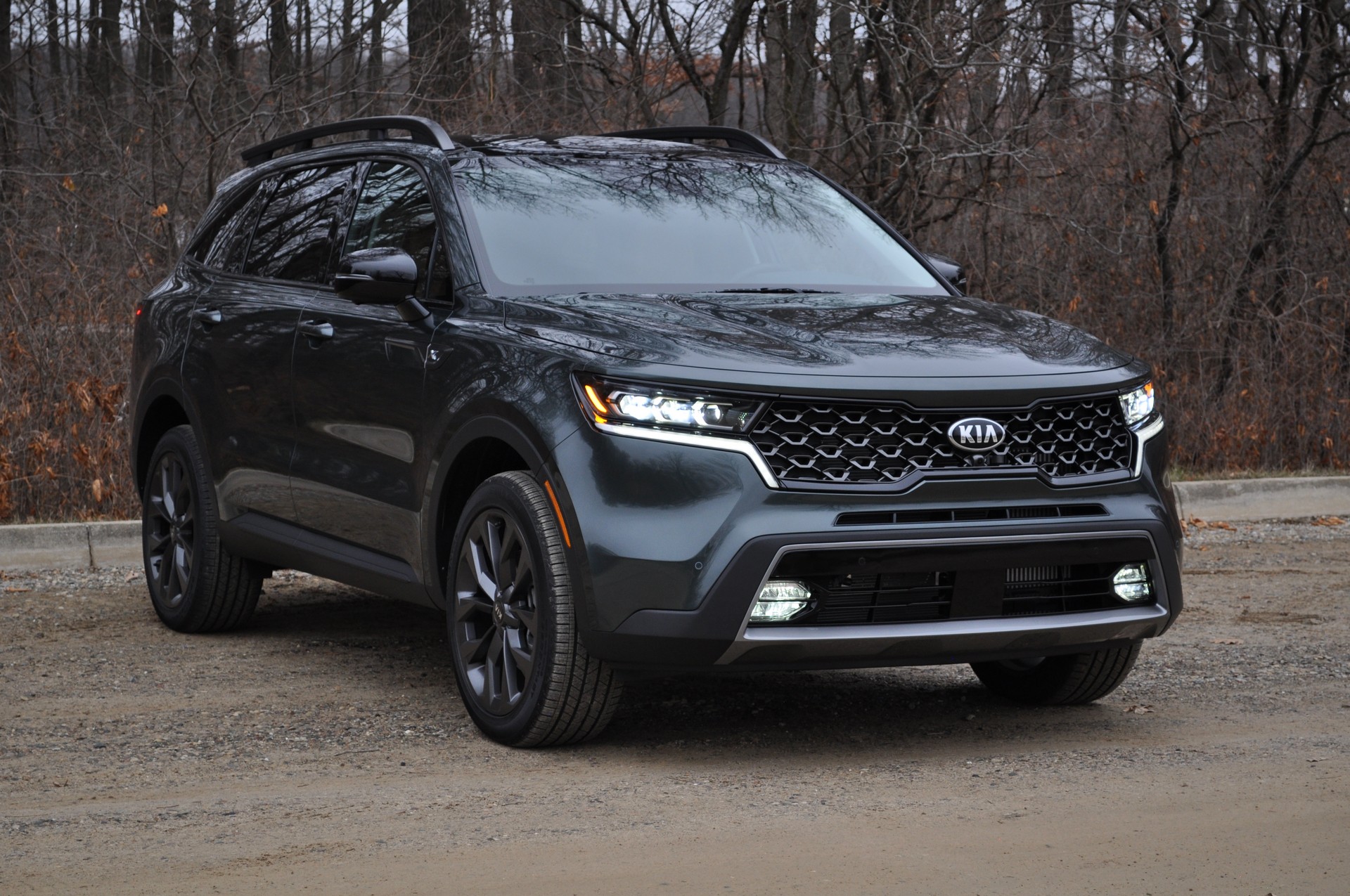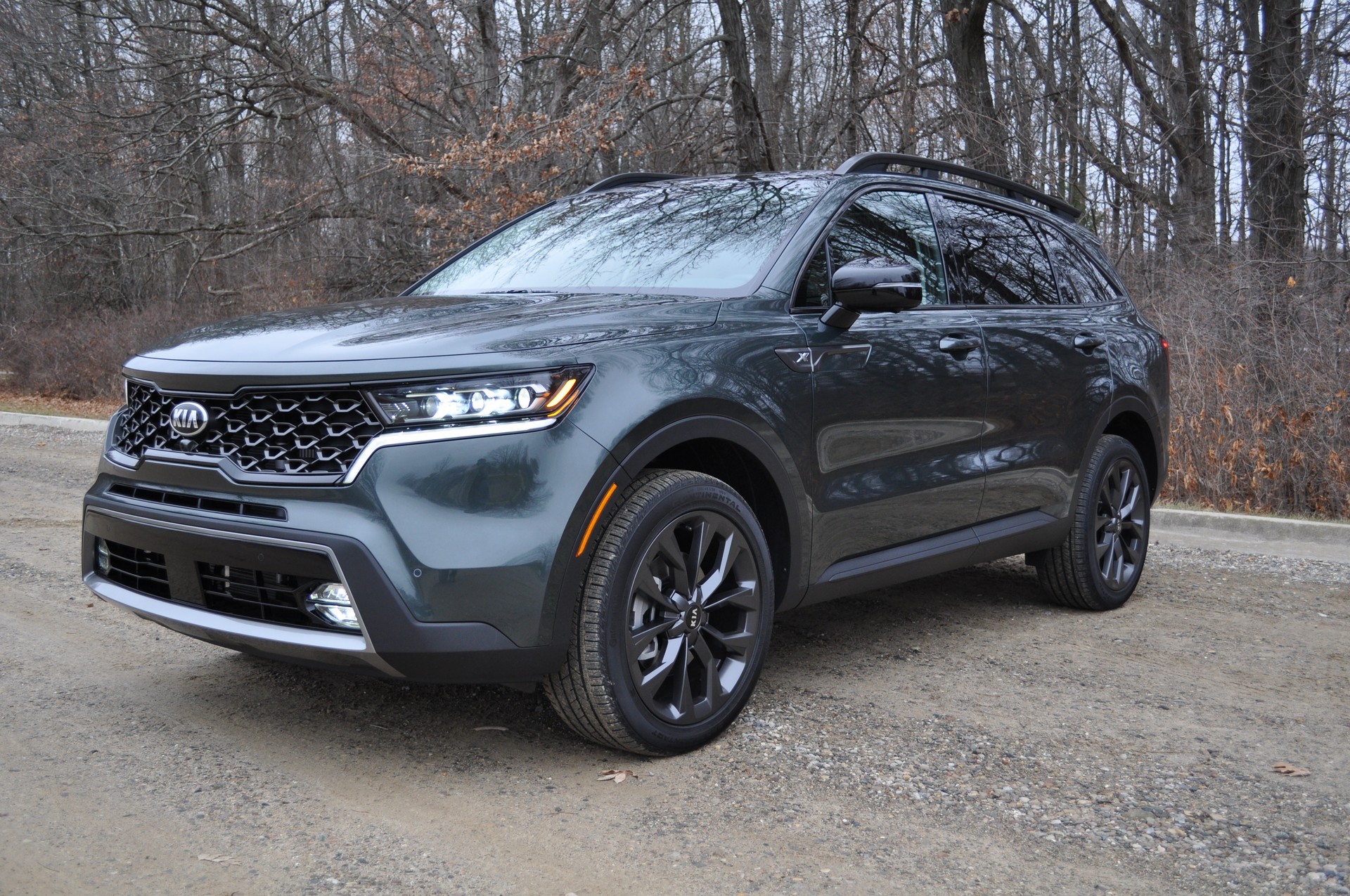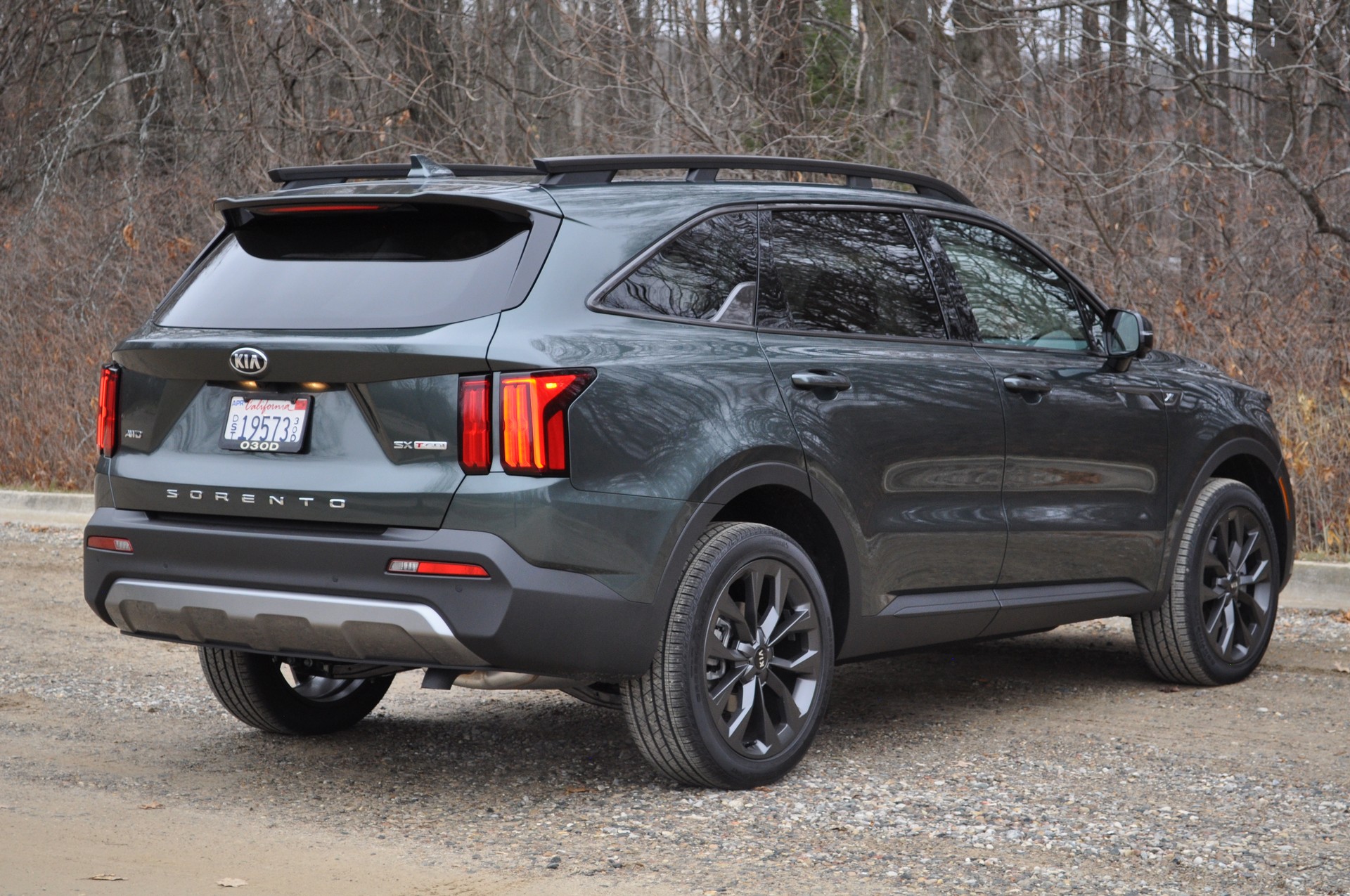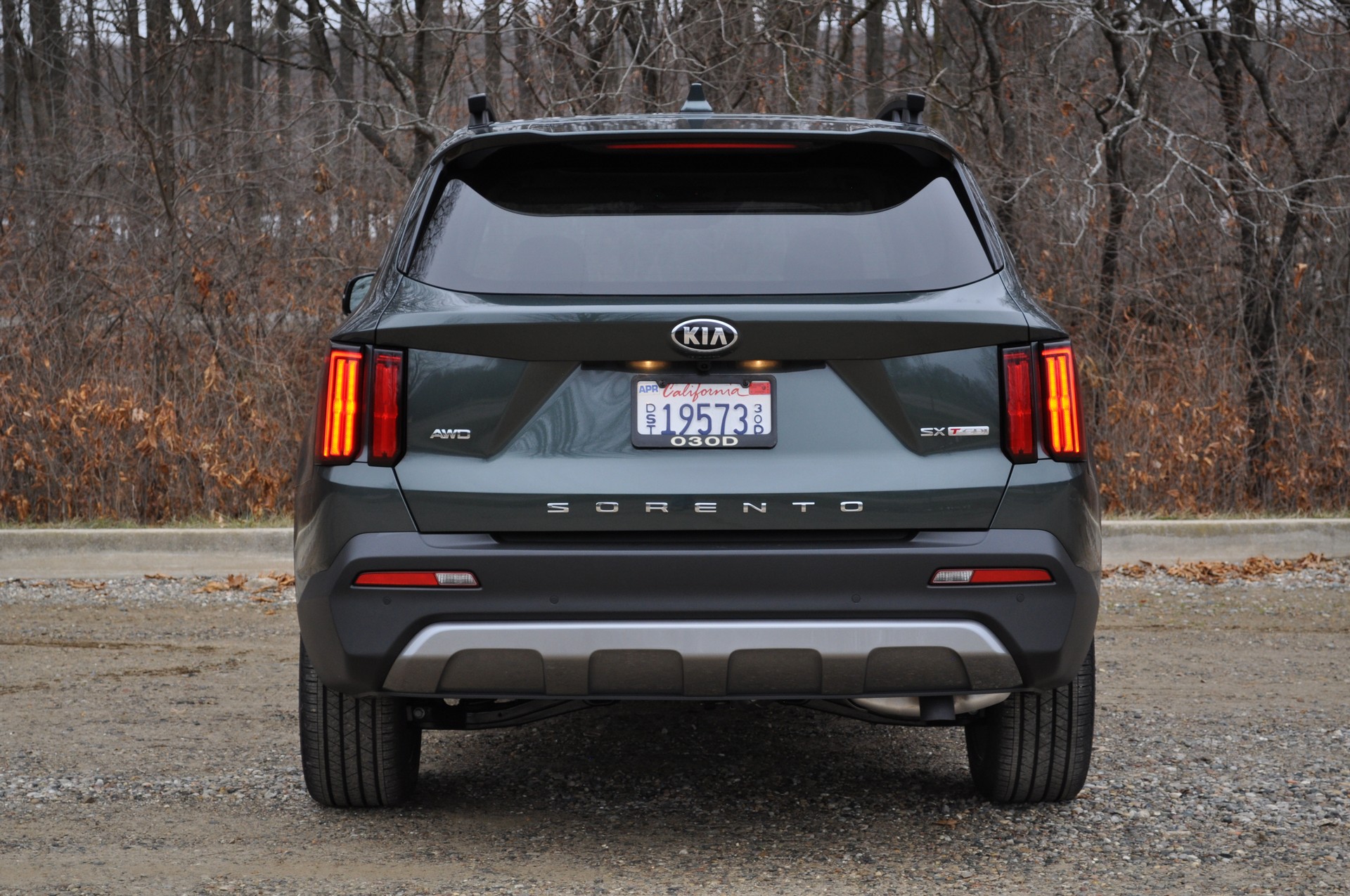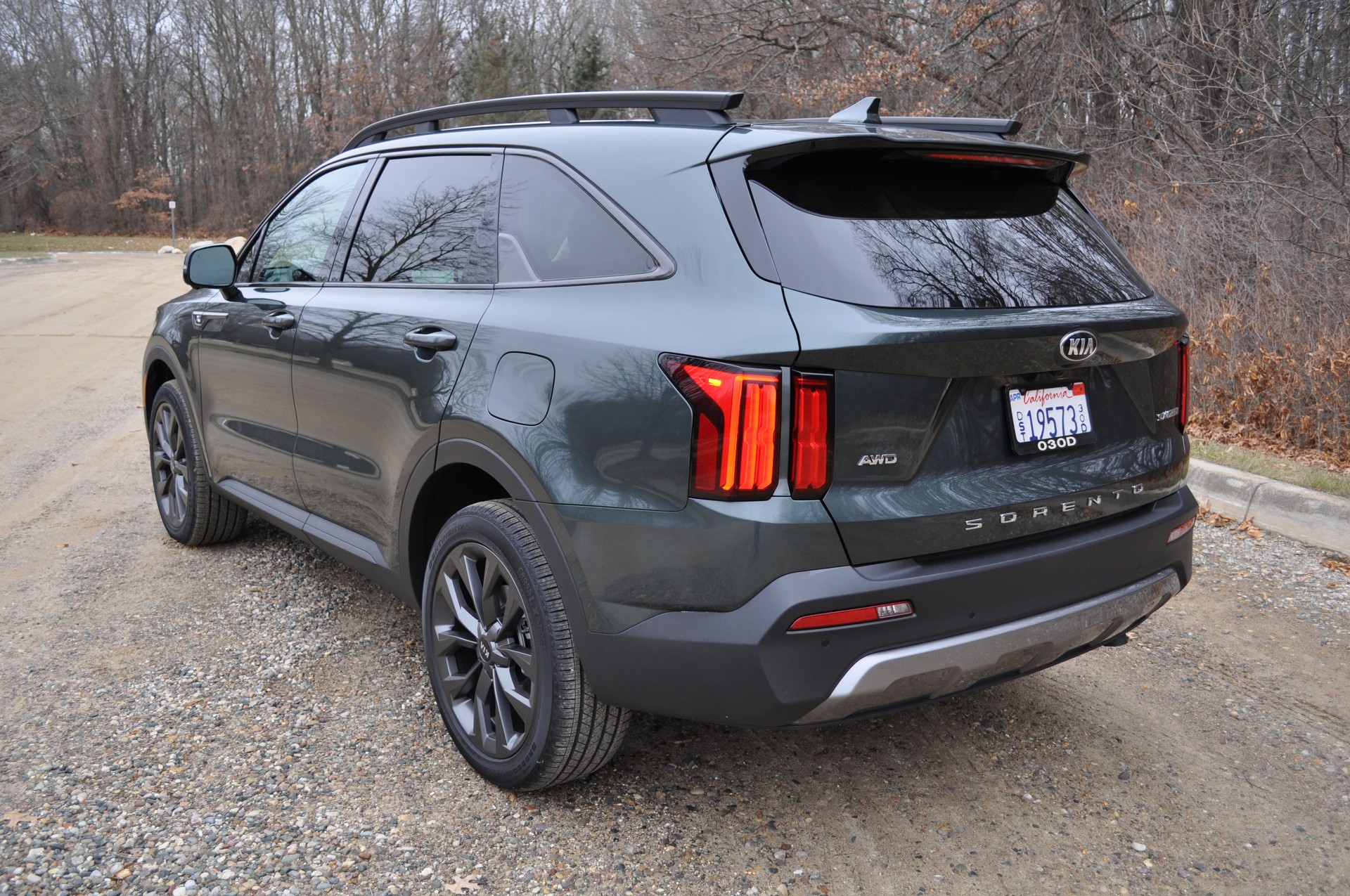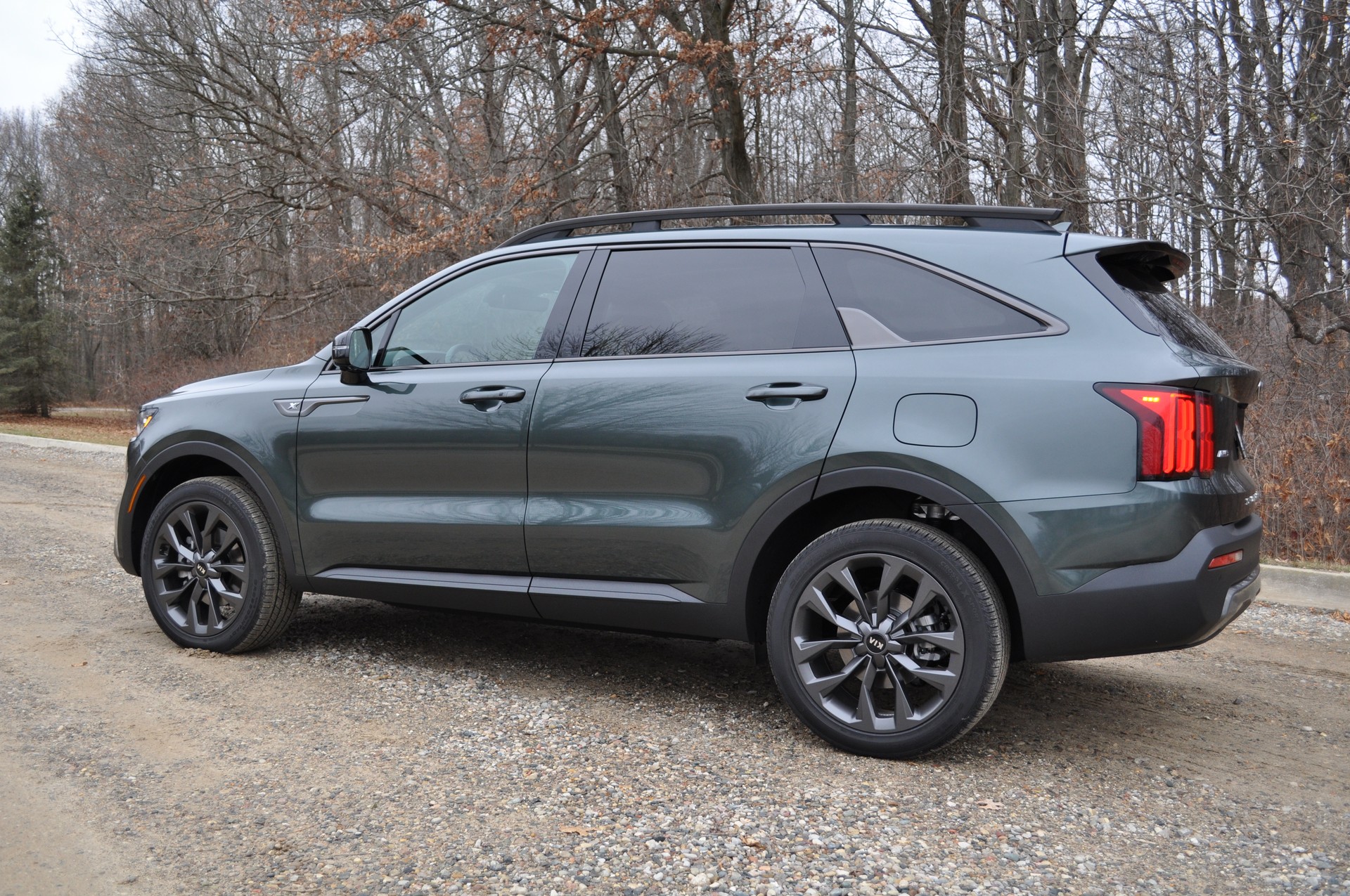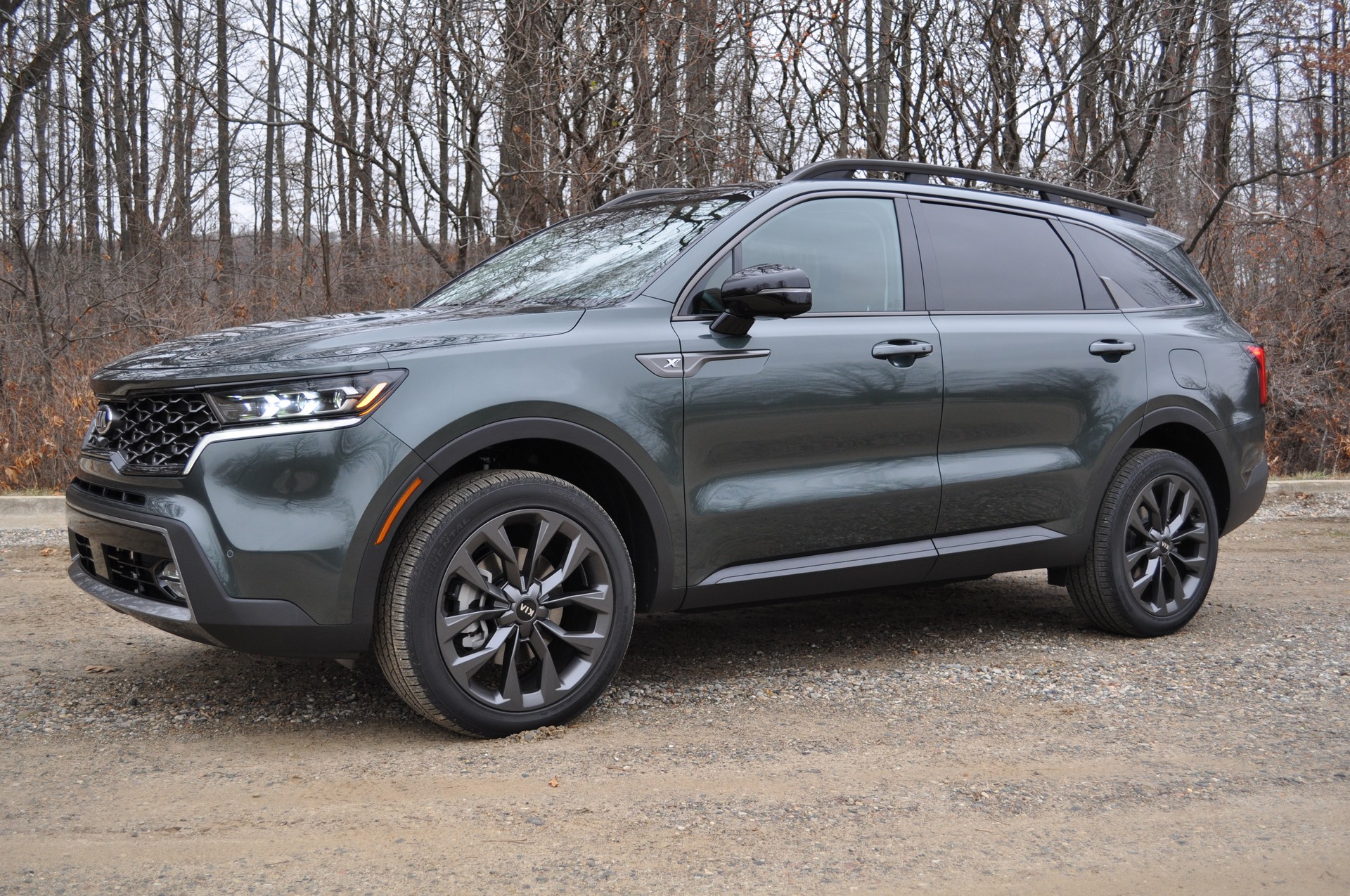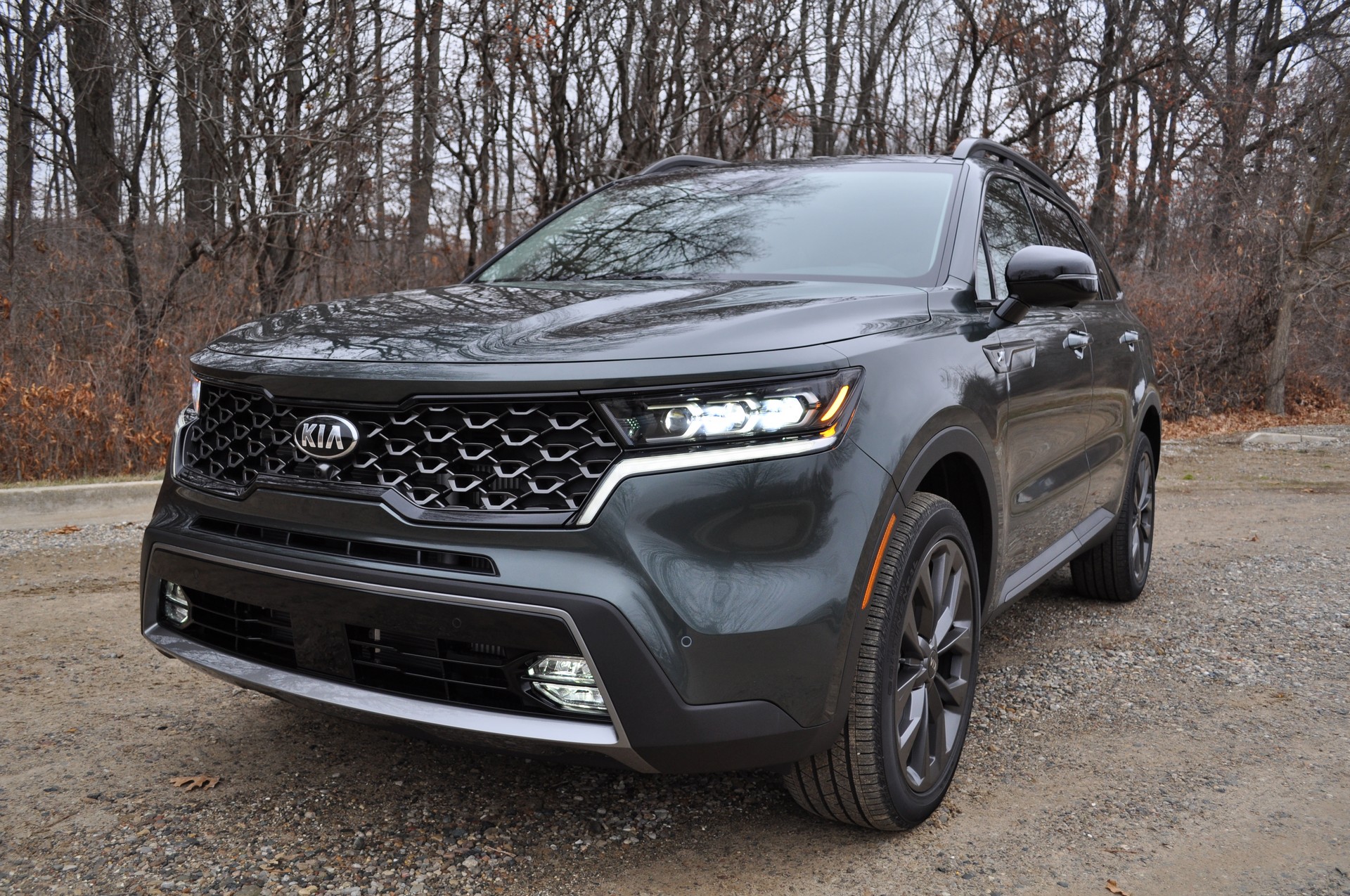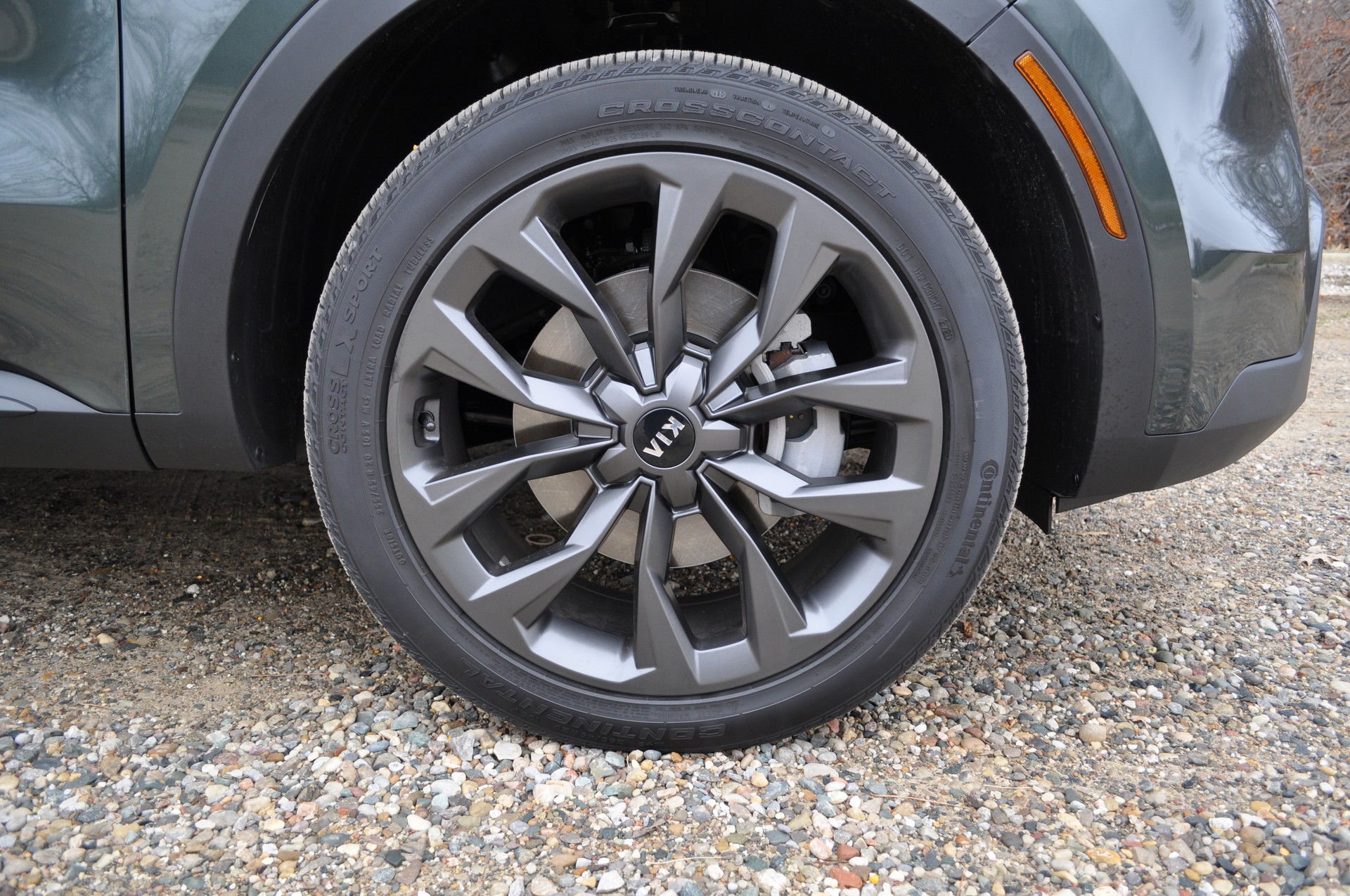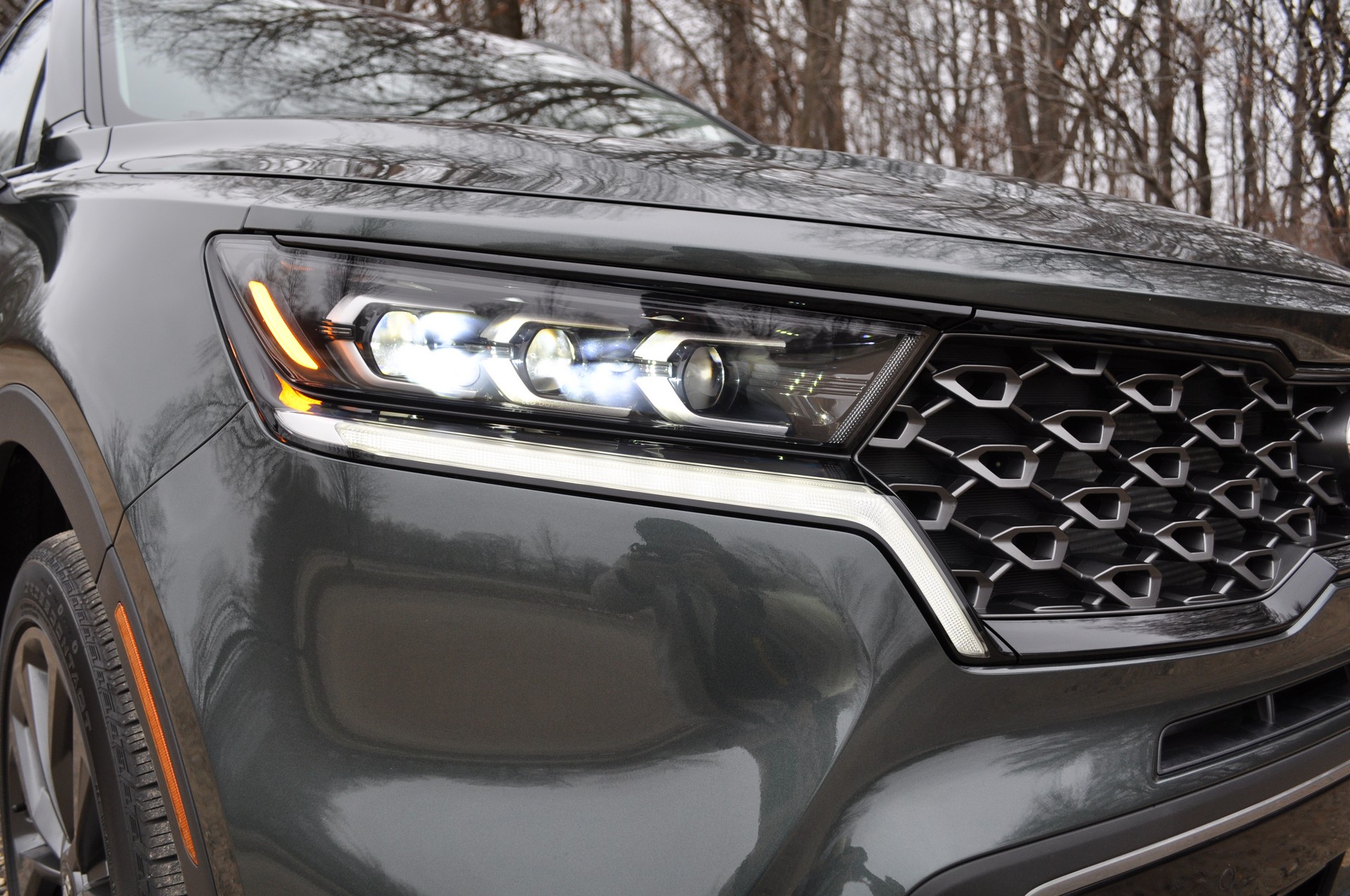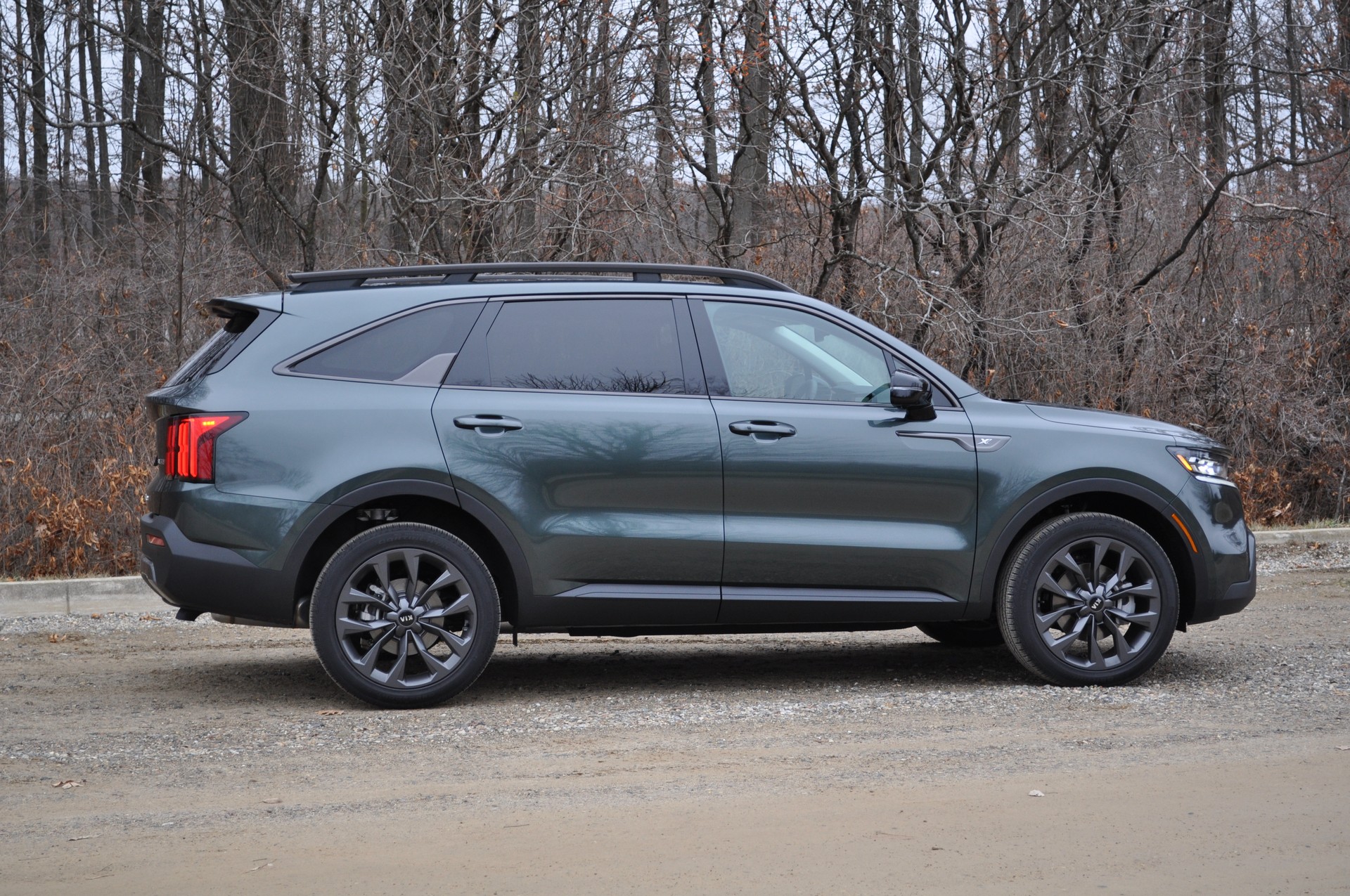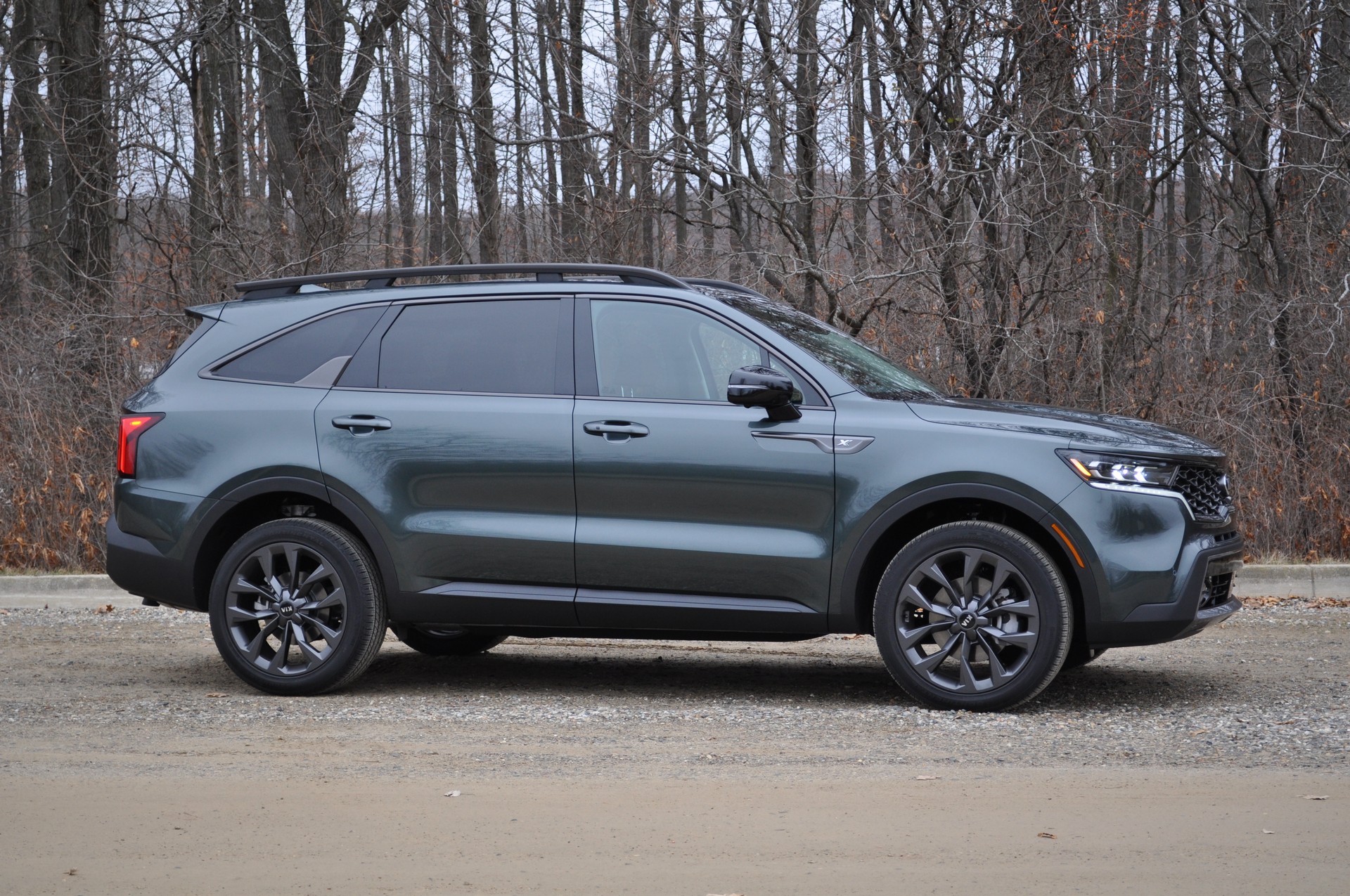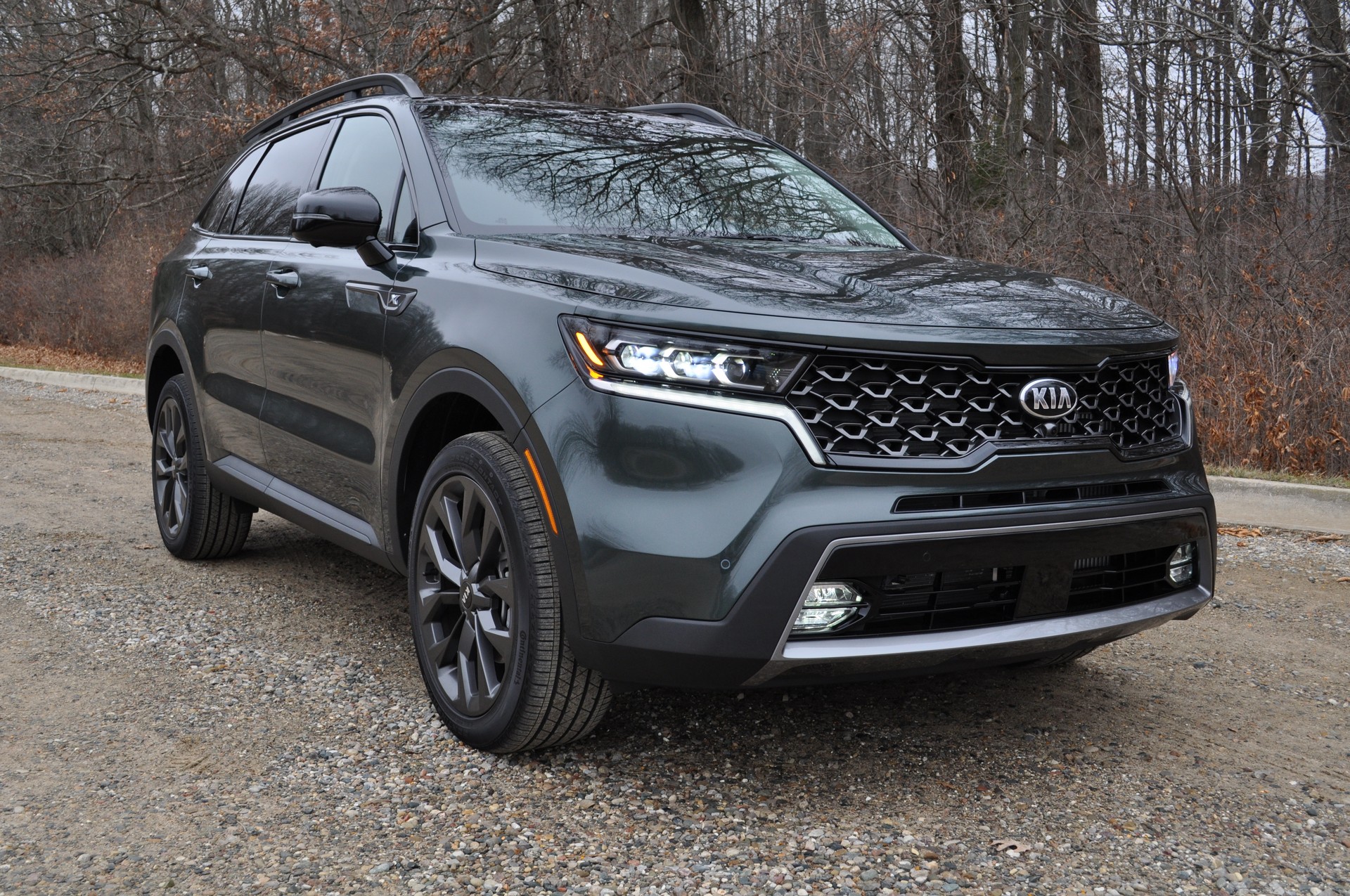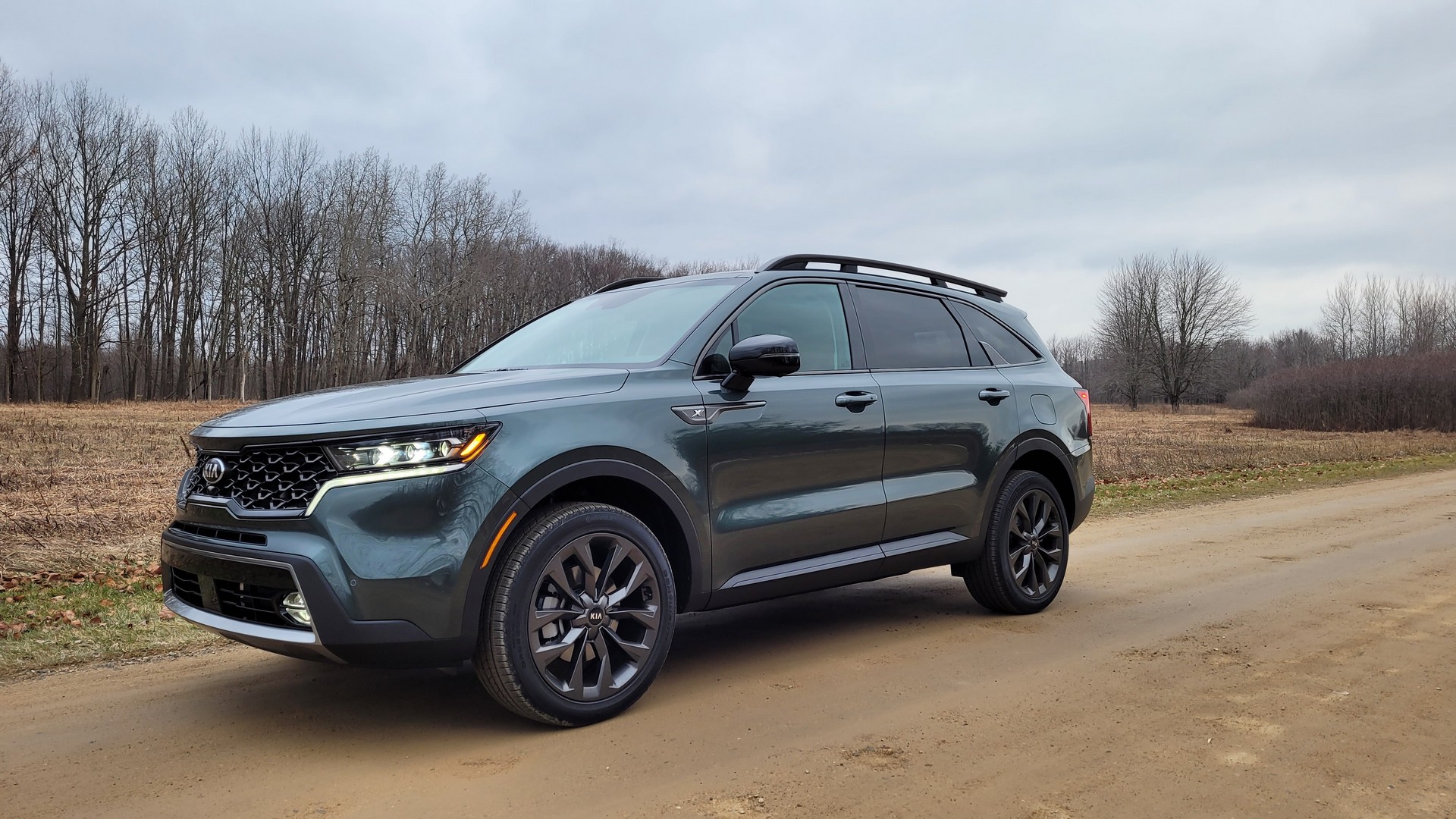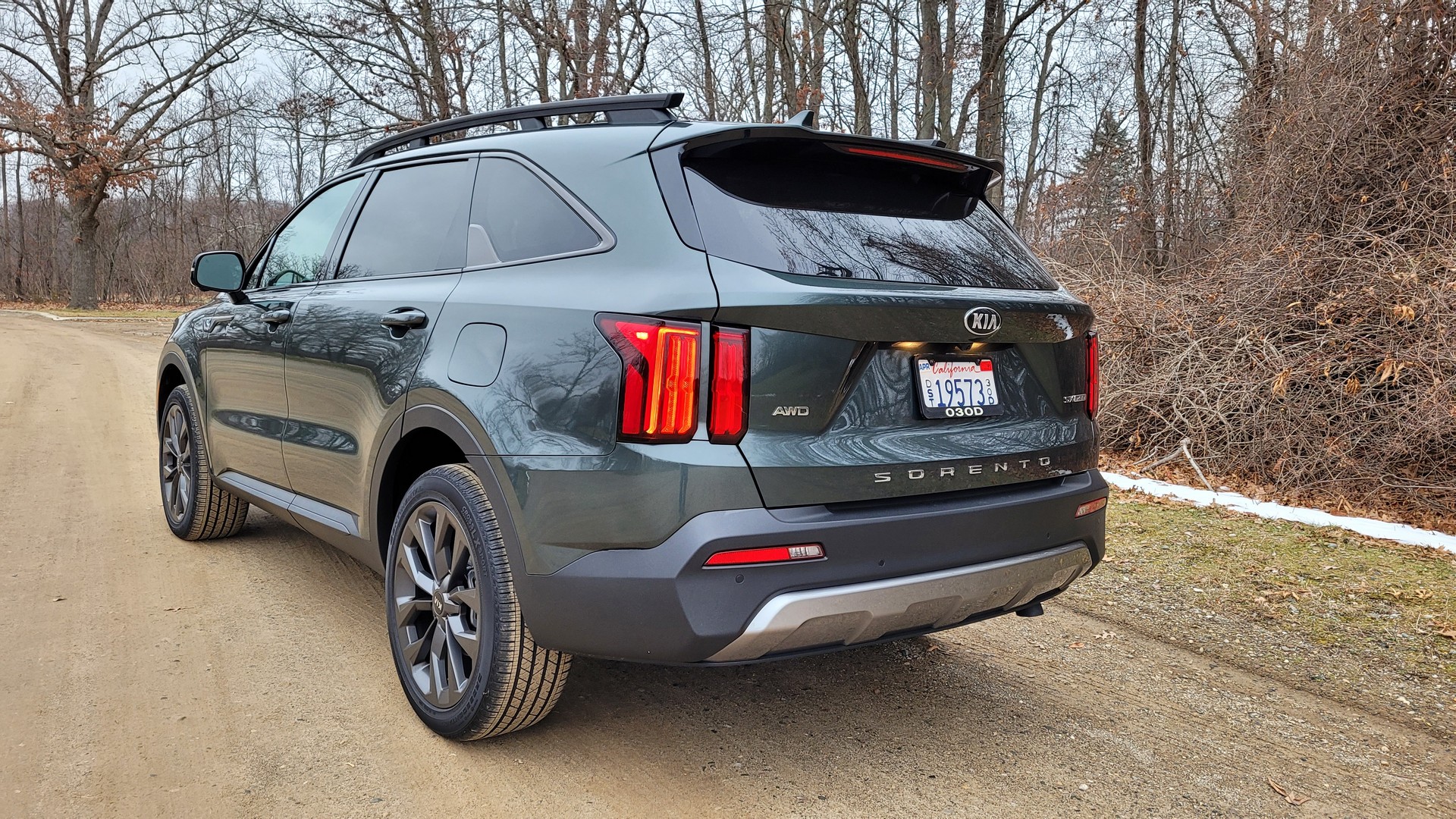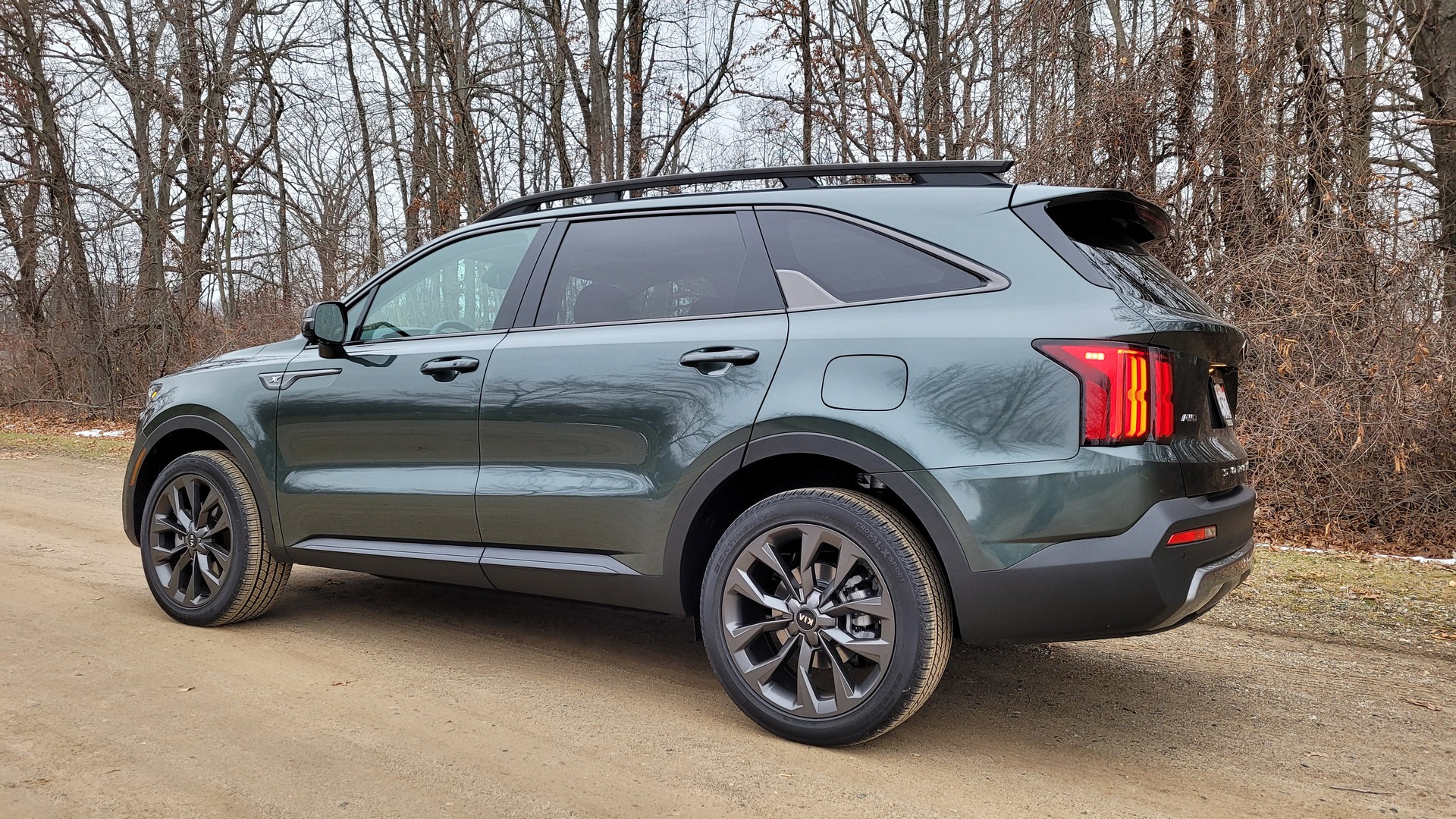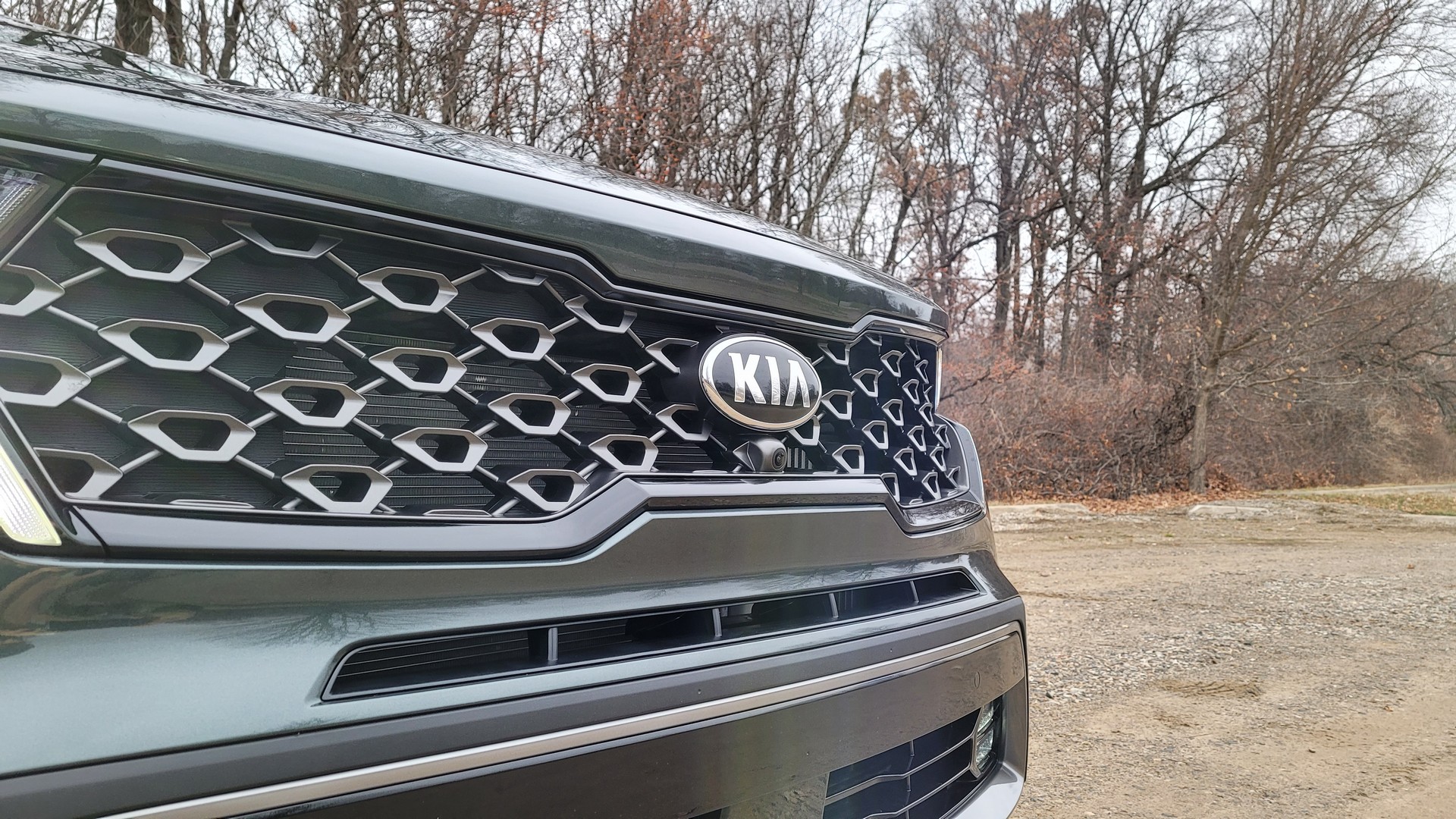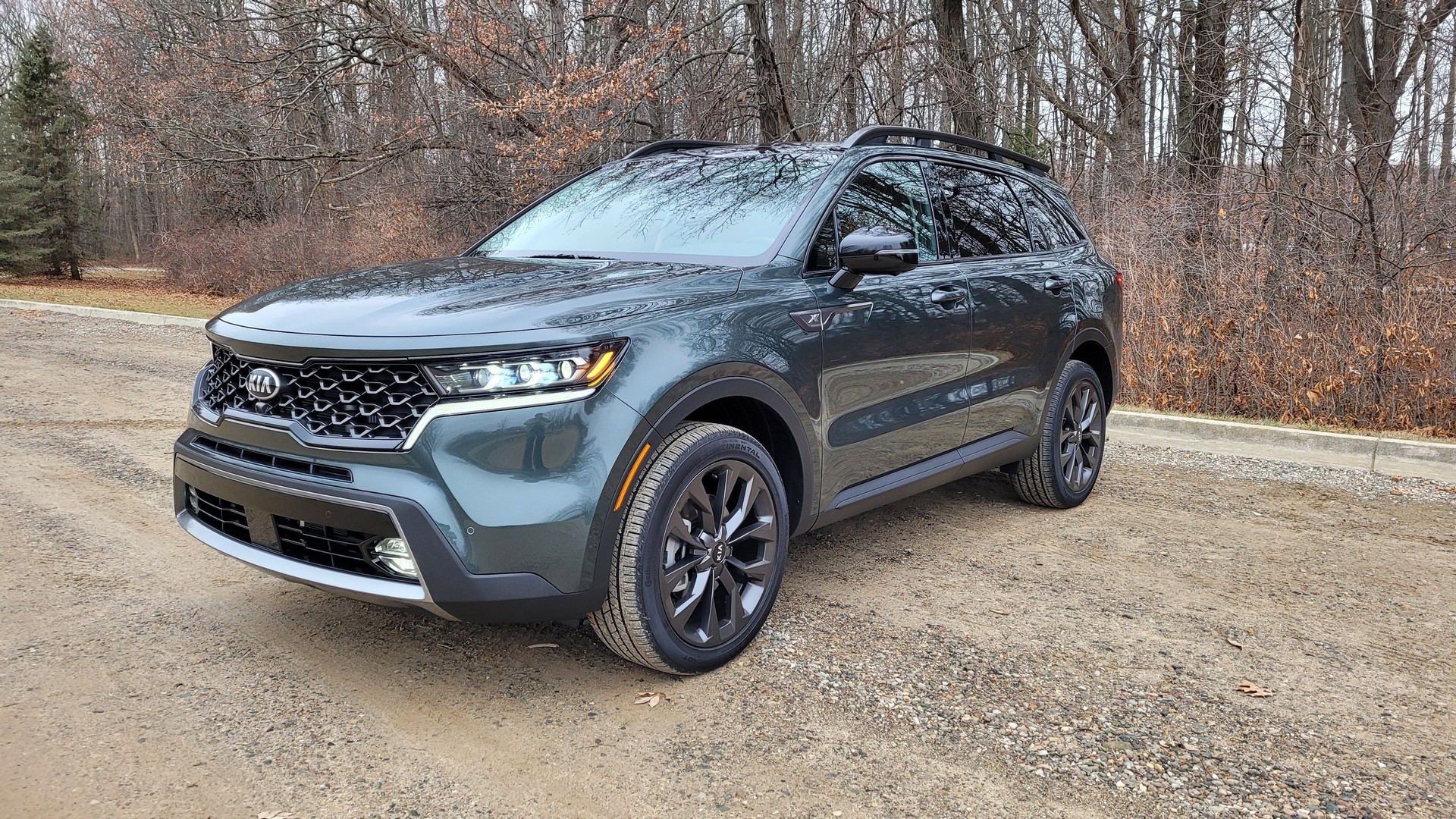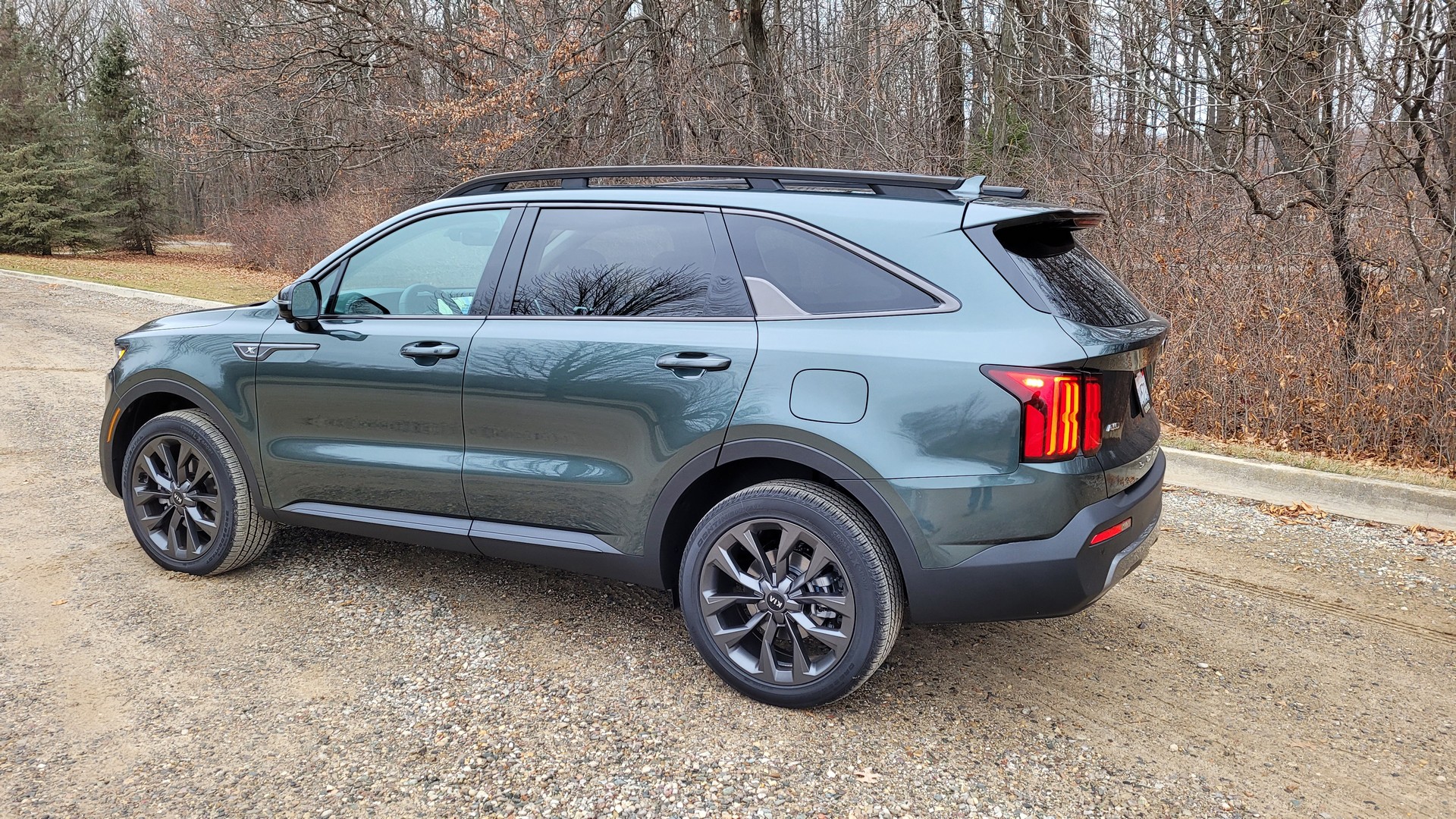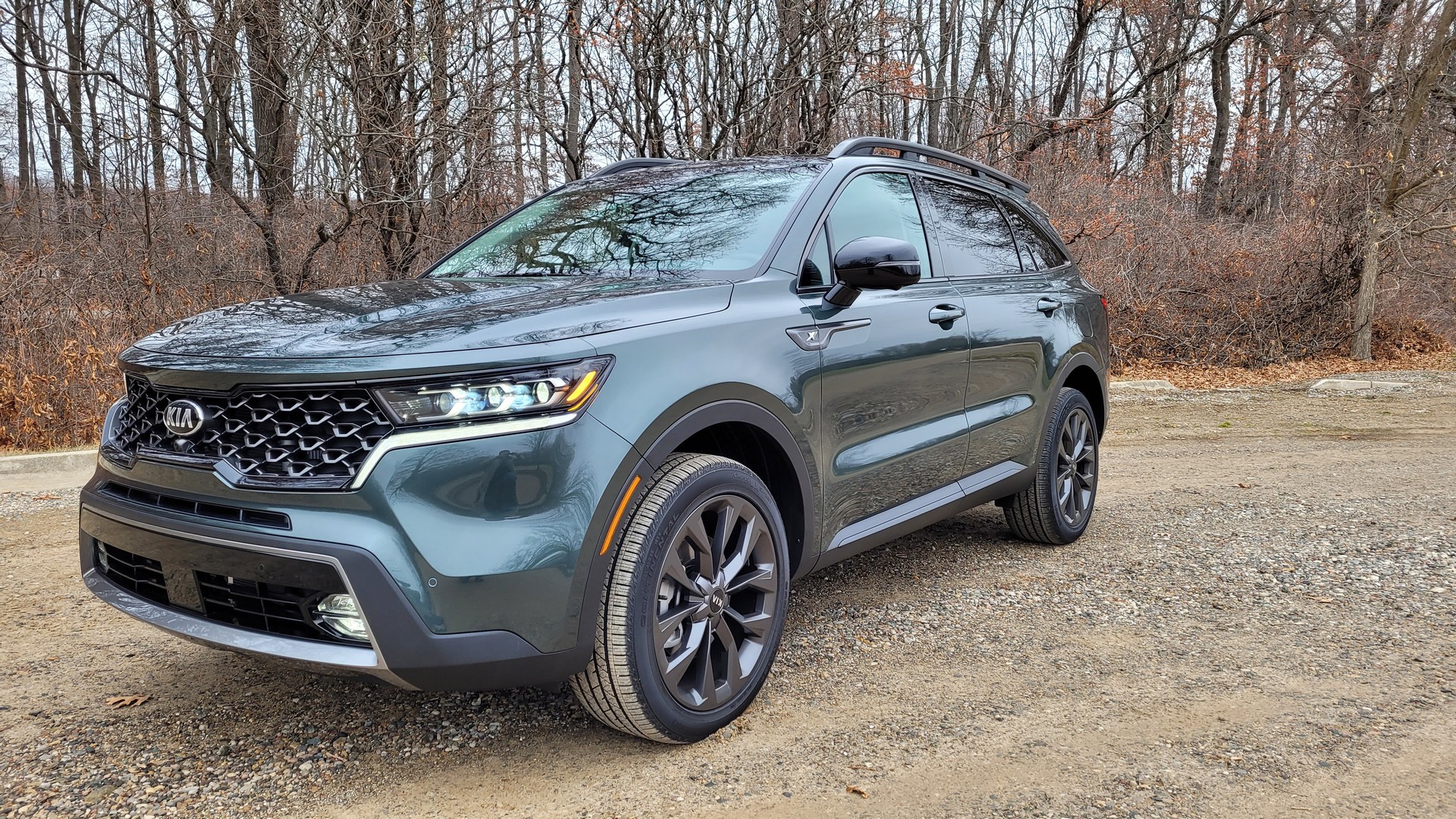The Kia Sorento has been popular with consumers as it combines affordable pricing with three rows of practicality.
That’s a winning formula, but the Sorento hasn’t been without it faults. Besides having a less than stellar interior, it was overshadowed by the larger and more luxurious Telluride.
That put the Sorento in a precarious position, but it has been comprehensively redesigned for 2021. The changes address the model’s shortcomings, while also improving on what consumers already loved.
An Edgier And More Rugged Appearance
The previous-generation Sorento was one of the most handsome three-row crossovers, but Kia’s designers have sharpened things up for 2021. The changes are immediately apparent up front as the model adopts an edgier tiger nose grille with a sporty mesh-like pattern that’s flanked by LED headlights and optional “eyeline” daytime running lights.
Moving down the sides, the crossover has a sweeping shoulder line and more muscular bodywork. The greenhouse is pretty evolutionary, but it’s broken up by a new wave-like accent at the base of the C-pillar.
Designers also give the rear end a sportier makeover as there’s a heavily stylized liftgate and distinctive taillights that use LEDs on SX and above grades.
Speaking of trims, there are six, which range from fairly basic to downright luxurious. However, even the entry-level Sorento LX comes with LED headlights, an acoustic windshield and 17-inch alloy wheels. The base model also sports satin chrome accents, privacy glass and body-color mirrors with integrated turn signals.
We tested the range-topping Sorento SX Prestige X-Line which features upgrades such as LED fog lights and 20-inch alloy wheels. This variant is also notable for having the X-Line package that adds a beefier roof rack, dark hyper silver accents and matte black body cladding. The package also increases the ride height by 1 inch (25 mm), while also adding a more advanced all-wheel drive system with a snow mode.
While new vehicles typically grow in size, the 2021 Sorento bucks the trend as it still measures 189 inches (4,800 mm) long. However, it is slightly wider and taller as both dimensions have grown by 0.4 inches (10 mm). That brings us to the biggest change, which is a wheelbase that, at 110.8 inches (2,814 mm), is 1.4 inches (36 mm) longer.
An All-New And More Luxurious Interior
While the previous-generation Sorento had a handsome exterior, its cabin was pretty lackluster and had an air of cheapness to it. That’s not longer the case as the redesigned model has made significant strides in terms of material quality, design and technology.
The changes are unmistakable, especially in the range-topping trim which boasts a 12.3-inch digital instrument cluster and a 10.25-inch infotainment system. The new tech is a welcome addition and the digital instrument cluster allows for a Blind View Monitor function, which projects a live video feed of adjacent lanes into the gauges when a turn signal is activated. It’s a cool safety feature and it makes changing lanes on a busy highway less stressful.
Besides the high-tech gear, the Sorento SX Prestige X-Line boasts stylish and supportive perforated leather seats with embossed bolsters. Both front seats come standard with 10-way power adjustment, two-way power lumbar support as well as heating and ventilation, a leather-wrapped heated steering wheel, a dual-zone automatic climate control system and a 12-speaker Bose audio system.
The model also has a wireless smartphone charger and USB charging ports, which are hidden beneath a gloss black cover that is a fingerprint magnet. Buyers will also find faux wood trim, soft touch materials and mostly high quality plastics.
The second row seats are comfortable and more spacious than before as there’s now 41.7 inches (1,059 mm) of legroom. That’s an increase of 2.3 inches (58 mm) and it means backseat passengers actually have more legroom than those up front.
A split-folding bench comes standard, but second row captain’s chairs are available on higher end variants. The latter slide and feature an adjustable backrest as well as adjustable armrests. The captain’s chairs also have a button which automatically slides and tilts them forward to ease entry and egress from the third-row.
Despite this, getting into the third row can be difficult for adults. However, even this 6’ 2” reviewer managed to squeeze back there.
Unfortunately, it wasn’t a pleasant experience as headroom is limited and there’s only 29.6 inches (752 mm) of legroom. Second row passengers can slide their seats forward to give third row occupants more room, but it’s still a tight fit for adults. That being said, the seats should be perfectly fine for children and small teens.
Speaking of space, there’s a modest 12.6 cubic feet (357 liters) of room behind the third row. That isn’t much, but the seats are easy to fold and this increases the cargo capacity to between 38.5 – 45.0 cubic feet (1,090 – 1,274 liters). With both rows folded, that figure jumps to 75.5 cubic feet (2,138 liters), which is less than the 84.3 cubic feet (2,387 liters) offered by the Toyota Highlander.
A Powertrain For Everyone
While the previous Sorento was offered with two different engines, the 2021 model has four. Starting things off is a naturally aspirated 2.5-liter four-cylinder that produces 191 hp (142 kW / 194 PS) and 182 lb-ft (246 Nm) torque. It’s connected to an eight-speed automatic transmission which can be paired to an optional all-wheel drive system.
This enables the SUV to accelerate from 0-62 mph (0-100 km/h) in 9.5 seconds with front-wheel drive and 10 seconds flat with all-wheel drive. While that’s not fast, the model is reasonably efficient as the front-wheel drive variant has an EPA-estimated fuel economy rating of 24 mpg city, 29 mpg highway and 26 mpg combined. With all-wheel drive, those numbers drop to 23 mpg city, 25 mpg highway and 24 mpg combined.
Speaking of fuel economy, there are two all-new hybrid variants for 2021. The traditional hybrid has a turbocharged 1.6-liter four-cylinder engine, a 59 hp (44 kW / 60 PS) electric motor, a 1.5 kWh battery pack and a six-speed automatic transmission. This setup enables the front-wheel drive model to have a combined output of 227 hp (169 kW / 230 PS).
Thanks to the eco-friendly powertrain, the Sorento Hybrid has an EPA-estimated fuel economy rating of 39 mpg city, 35 mpg highway and 37 mpg combined. That’s impressive for a car, let alone a seven-seat crossover. Kia was also quick to point out the Sorento Hybrid bests the Toyota Highlander Hybrid which returns up to 36 mpg city, 35 mpg highway and 36 mpg combined.
A plug-in hybrid variant will arrive early next year with a larger 13.8 kWh battery, a 90 hp (67 kW / 91 PS) electric motor and all-wheel drive. The powertrain has a combined output of 261 hp (195 kW / 265 PS) and should enable the Sorento to travel 30 miles (48 km) on electricity alone.
While the plug-in hybrid sounds promising, our tester was equipped with the turbocharged 2.5-liter four-cylinder engine that develops 281 hp (210 kW / 285 PS) and 311 lb-ft (422 Nm) torque. It’s a perfect fit for the Sorento and enables it to run from 0-62 mph (0-100 km/h) in 7.6 seconds when equipped with all-wheel drive.
Thanks to the turbocharged engine, the Sorento is quick and sporty. Throttle tip-in isn’t the most linear thing in the world, but a quick jab of the accelerator will certainly get you moving.
Despite the impressive performance, there’s not much of a penalty at the pump as front-wheel drive variant returns 22 mpg city, 29 mpg highway and 25 mpg combined. Adding all-wheel drive reduces those numbers to 21 mpg city, 28 mpg highway and 24 mpg combined.
We fell a bit short of those estimates as we averaged 20.6 mpg in mostly city driving. However, owners should expect higher numbers as our tester was idled while shooting photos and video.
So How Does It Drive?
In two words, remarkably well. Engineers have done a great job on the Sorento as it balances comfort and sportiness almost perfectly. The Korean SUV is relatively nimble, corners well and barely exhibits body roll. And all of this has been done without comprising ride quality as the suspension soaks up small road imperfections with ease. Larger and continuous impacts will make themselves known, but they don’t intrude enough to mar the experience.
A lot of credit goes to the Sorento’s third-generation N3 platform which is new for 2021. It’s lighter and stronger than before, and engineers made updates to improve driving dynamics as well as ride and handling characteristics. All of this work seems to have paid off as the Sorento is one of the better crossovers to drive.
The steering is a bit on the heavy side, but it’s predictable and adds to the sporty feeling.
When it comes time to stop, ventilated discs measuring 12.8 inches (325 mm) up front and 12.0 inches (305 mm) at the rear are called into action. We didn’t test them to extremes, but they seem fairly capable although there is a bit of travel before really kick in.
Sticking with the performance theme, the eight-speed dual clutch transmission is fast and smooth. Sport mode quickens things up a bit, but the gearbox seems to work best in comfort mode. If you’re the do it yourself type, there are paddle shifters and manual shift controls.
Despite being December, the weather didn’t cooperate and we didn’t get a chance to test out the all-wheel drive system in the snow. However, it provides plenty of grip in dry conditions and features torque vectoring to improve dynamics.
The all-wheel drive system is front biased, but features a center-locking differential to provide extra power to rear wheels in slippery conditions. The split varies on conditions and the selected drive mode, but Sport mode sends power rearward more readily.
Pricing Starts At $29,390
The 2021 Kia Sorento is now on sale and pricing starts at $29,390 which is $1,300 more than its predecessor. However, it comes better equipped than the outgoing model and features numerous improvements.
In base LX form, buyers will find cloth upholstery, a second row split folding bench and a standard third row. The model also has air conditioning, a six-speaker audio system, and an 8-inch touchscreen infotainment system with wireless Android Auto and Apple CarPlay.
The entry-level Sorento comes with an assortment of driver assistance systems including High Beam Assist, Lane Keep Assist, Lane Departure Warning and Lane Following Assist. Other safety features include a rearview camera, Intelligent Speed Limit Assist, Rear Occupant Alert, and Forward Collision Avoidance Assist with pedestrian and vehicle detection.
Moving up the trim ladder is the Sorento S which starts at $31,890. Upgrading is a no-brainer as it adds leatherette upholstery, heated front seats and a 10-way power driver’s seat with lumbar support. It also comes equipped with a leather-wrapped steering wheel, a dual-zone automatic climate control system, a more advanced infotainment system and a smart key with a push-button ignition.
If that wasn’t enough to convince you to upgrade, the Sorento S also adds safety features such as Blind-Spot Collision Avoidance Assist, Rear Cross-Traffic Collision Avoidance Assist, Reverse Parking Distance Warning and Safe Exit Assist.
The $34,990 Sorento EX comes standard with the turbocharged 2.5-liter engine and features a handful of other upgrades including a wireless smartphone charger and second row captain’s chairs. The model also has Smart Cruise Control with Stop and Go and a Forward Collision Avoidance Assist system which can detect cyclists.
One step up is the Sorento SX which begins at $37,990. It features a host of exterior upgrades including LED daytime running lights, LED taillights and 20-inch alloy wheels. Inside, buyers will find an 8-way power passenger seat and a larger 10.25-inch infotainment system with GPS navigation. The model also comes with a panoramic sunroof, LED interior lights and Highway Driving Assist.
The latter is pretty noteworthy as it controls the vehicle’s steering, acceleration and braking on the highway. During our testing, it did a good job of keeping the Sorento centered in its lane and didn’t have any problems steering on long sweeping curves.
Next up is the Sorento SX Prestige which starts at $40,590 and is available exclusively with front-wheel drive. To get all-wheel drive, you have to upgrade to the Sorento SX Prestige X-Line – like our tester – which starts at $42,590. Both models are largely identical, except for the off-road inspired styling tweaks, and come with the equipment we’ve mentioned earlier in the review.
Customers looking for something more eco-friendly can opt for the Sorento Hybrid. It starts at $33,590 for the S trim and $36,590 for the EX variant.
Pricing for the Sorento Plug-In Hybrid will be announced closer to launch, but Kia officials suggested it will be positioned as a premium entry. That isn’t much to go on, but it will be interesting to see how it compares to the smaller Toyota RAV4 Prime which begins at $38,100.
Pretty Much Everything You Could Want In A Crossover
Kia’s been on a roll lately with models such as the Telluride and Stinger. That trend continues with the Sorento as it checks all the boxes and manages to be more than the sum of its parts.
It’s comfortable and sporty with the turbocharged 2.5-liter engine and, on top of that, there are two eco-friendly hybrid options. Cost-conscious buyers haven’t been forgotten either and the base engine is more powerful and fuel-efficient than before.
Kia didn’t stop there as the Sorento features a vastly improved interior with higher quality materials and modern technology. It is also relatively spacious and features a third row that can accommodate adults in a pinch.
All in all, the Sorento looks like another winner for Kia and it should appeal to customers who don’t need the extra room offered by the Telluride.








